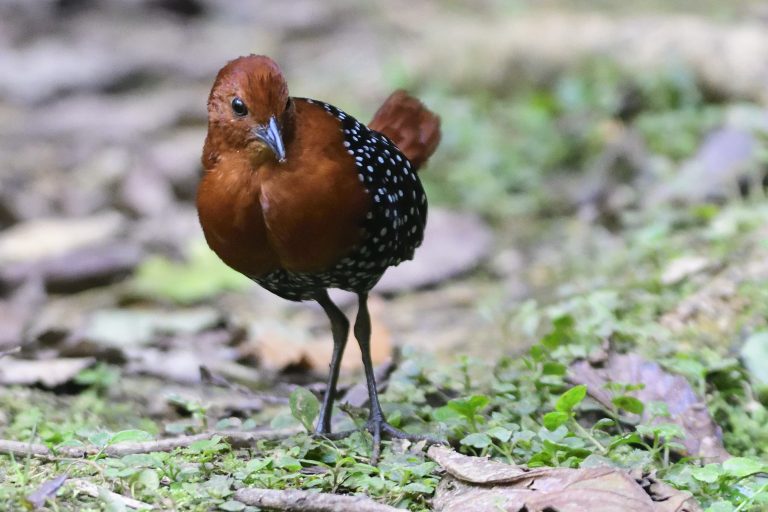
Keny July 6 – 26, 2018 Part 2
Sunday 30 September 2018
Day 12, Tuesday July 17 – Lake Baringo – Eldoret continued
This is a follow up from where part 1 of the Kenya trip where our last stop was in Lake Baringo. If you did not read that report, you can find it here under Trip Reports. I have changed Web editor since the last report, so all lifers are now in bold.
We stopped for breakfast at Marigat. I ordered blackcoffe and ended up with Black Tea. We started a very steep climb towards Cabarnet and we had not driven upwards more than 45 minutes before I saw the Landy was overheating. We stopped at the side of the road and cooled the car down. However; as soon as we started, the car got very hot again. We had to call some Fundis from Marigat to come and help us. Fortunately for us we had stopped in a good birding habitat. We soon found Brown Babbler, Northern Black Flycatcher, White morphed Paradise Flycatcher, Grey-headed Bush-Shrike and GreyTit Flycatcher. The Fundis arrived after a long wait. They removed the thermostat and told us to go on. The road was climbing steadily and sure enough the car heated up again. We stopped cooled down the car and somehow managed to reach Cabarnet at the top of the hills. We found a Fundi there and after a lot of trial and error, they ended up welding the fan to the conveyor belt pully. We were now running very late and knew for sure we would not reach Kakamega Forest this day. Francis had a spot for a certain Turaco on the western escarpment of the Rift Valley. At the first stop, we did not see or hear it, but on the second stop we had luck. A White-crested Turaco. What a fantastic bird. It only showed briefly before he went into hiding. We continued and stopped briefly at the look out point on top of Rift Valley. Fantastic view, but we pushed on and managed to reach Eldoret before it got dark. After some trial and error, we found a guesthouse and spent the night there.
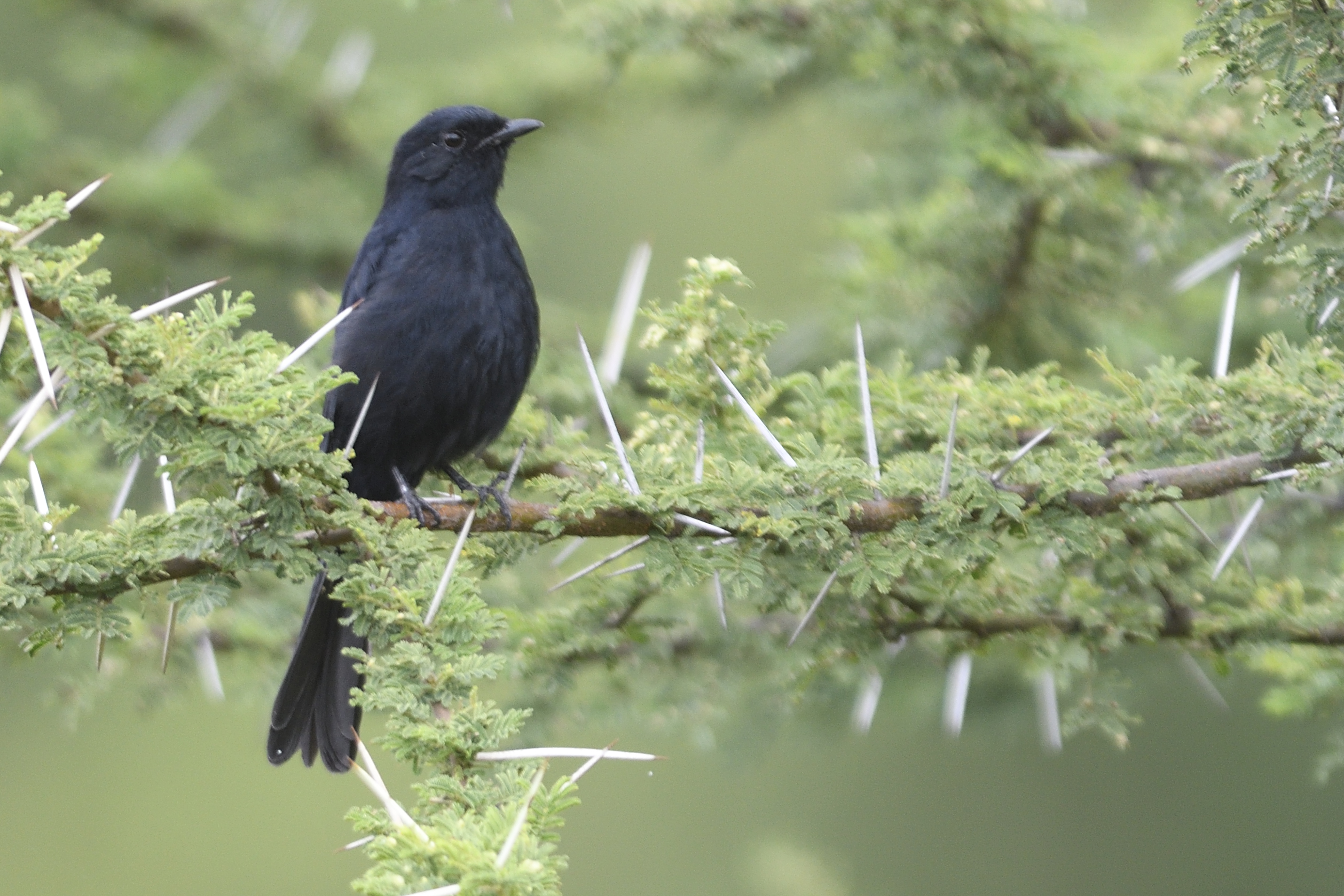
Northern Black Flycatcher, Melaenornis edolioides
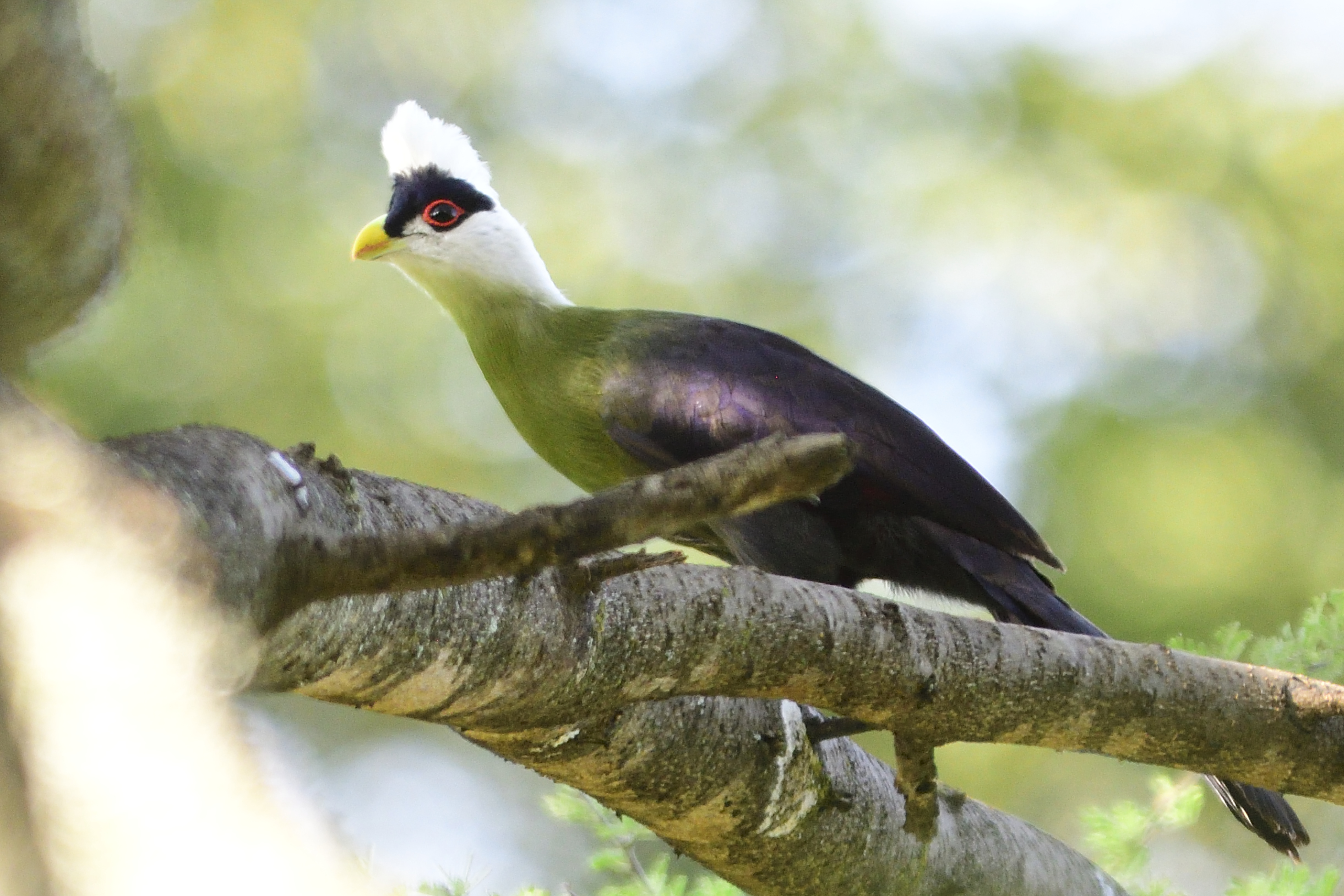
White-crested Turaco, Turaco leucolophus
Day 13, Wednesday July 18 – Eldoret – Kakamega Forest
From Eldoret, it was only about 100 km to Kakamega Forest. We left early from Eldoret and reached Kakamega before lunch. As soon as we were inside the forest, we started birding. At the first stop we saw Uganda Woodland Warbler, Black-collared Apalis and Black-faced Rufous Warbler. We drove on to where a little stream crossed the road. Here it was a footpath up to the left. The place was teaming with birds: Red-headed Bluebill, Red-headed Malimbe, a pair of Pink-footed Puffbacks, Olive-green Camaroptera, Equatorial Akalat, Yellow-billed Barbet, Purple-throated Cuckooshrike, Lühder´s Bush-Shrike, Grey-throated Barbet, Great Blue Turaco, Joyful Greenbul, Kakamega Greenbul, Green-headed Sunbird, Speckle-breasted Woodpecker, Yellow-spotted Barbet, Brown-chested Alethe, Jameson´s Wattle-eye and Dusky Tit. So many birds and lifers that it was very hard to concentrate. 15 lifers during 2 hours of birding! We drove on to the Rondo retreat for some lunch. They had a Crowned Eagle nest in the garden. While waiting for lunch, we birded a little and added Northern Double-collared Sunbird, Vieillot´s Black Weaver, Mackinnon´s Fiscal, Stuhlmann´s Starling and African Blue Flycatcher to the list. After lunch, we went on a little path next to Rondo. The first bird was a White-spotted Flufftail and then a Chubb´s Cisticola. We enquired about lodging at Rondo Retreat, but they charged a rather steep price, so we agreed to check out the campsite. We were warned that the road was pretty bad going there, but we managed. However; the Isecheno camp site by the Forest headquarter was badly run down. The toilets were not working and no water at all. We decided to go back to Rondo retreat and spend the night there. However on the way out I got terrible stuck. The mud had hidden a rock and our car was parked on top of the rock with both rear tires spinning freely. We started digging like crazy to get the car out. Used the high lift jack for leverage. Very soon, a SA registered car showed up. It was Dave and Bugs from Zimbabwe that showed up. They were on a crazy one year safari across Africa. Dave helped out and in the end, he managed to pull my Landy out with his Toyota :-(. We lost 2 hours on this stupid stop and I was covered in mud from top to bottom, so we decided to go back to the Rondo Retreat to freshen up. Dave and Bugs talked to another guy that had another camp very close by and they decided to stay there. As a thank you for their effort getting us free of the mud, we agreed for them to come birding with us the day after. We soon reached the Rondo Retreat Lodge and had someone wash my clothes and sandals. We had a nice dinner and then retired early for the night. What a start to the birding in Kakamega Forest. On the first partial day, I managed to get 20 lifers. My target list for Kakamega was above 50, so we knew we still had a long way to go, plus we needed better pictures of most of the birds. This is forest birding and not easy for a photographer.
Here are some birds we photographed on day 13:
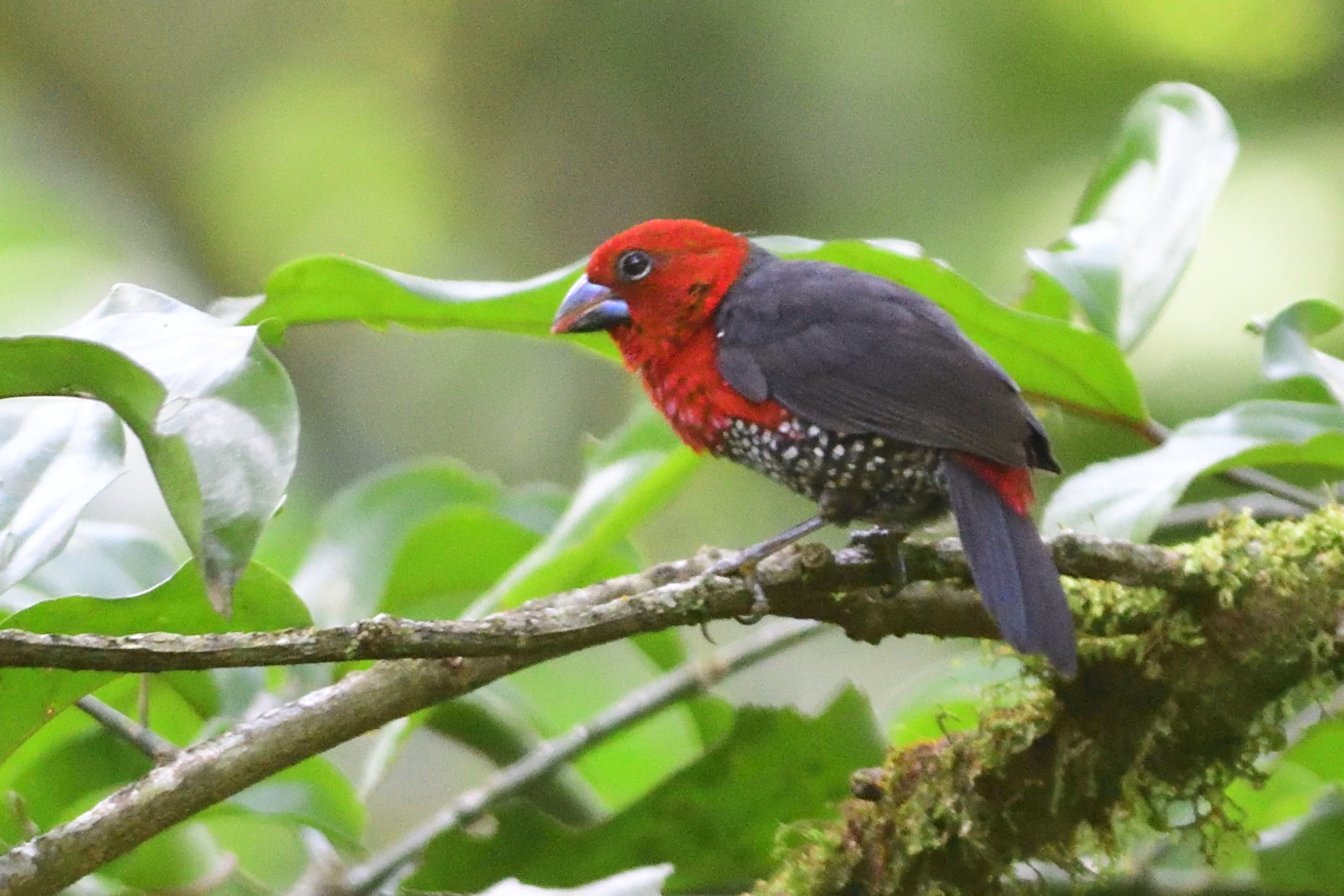
Red-headed Bluebill, Spermophaga ruficapilla
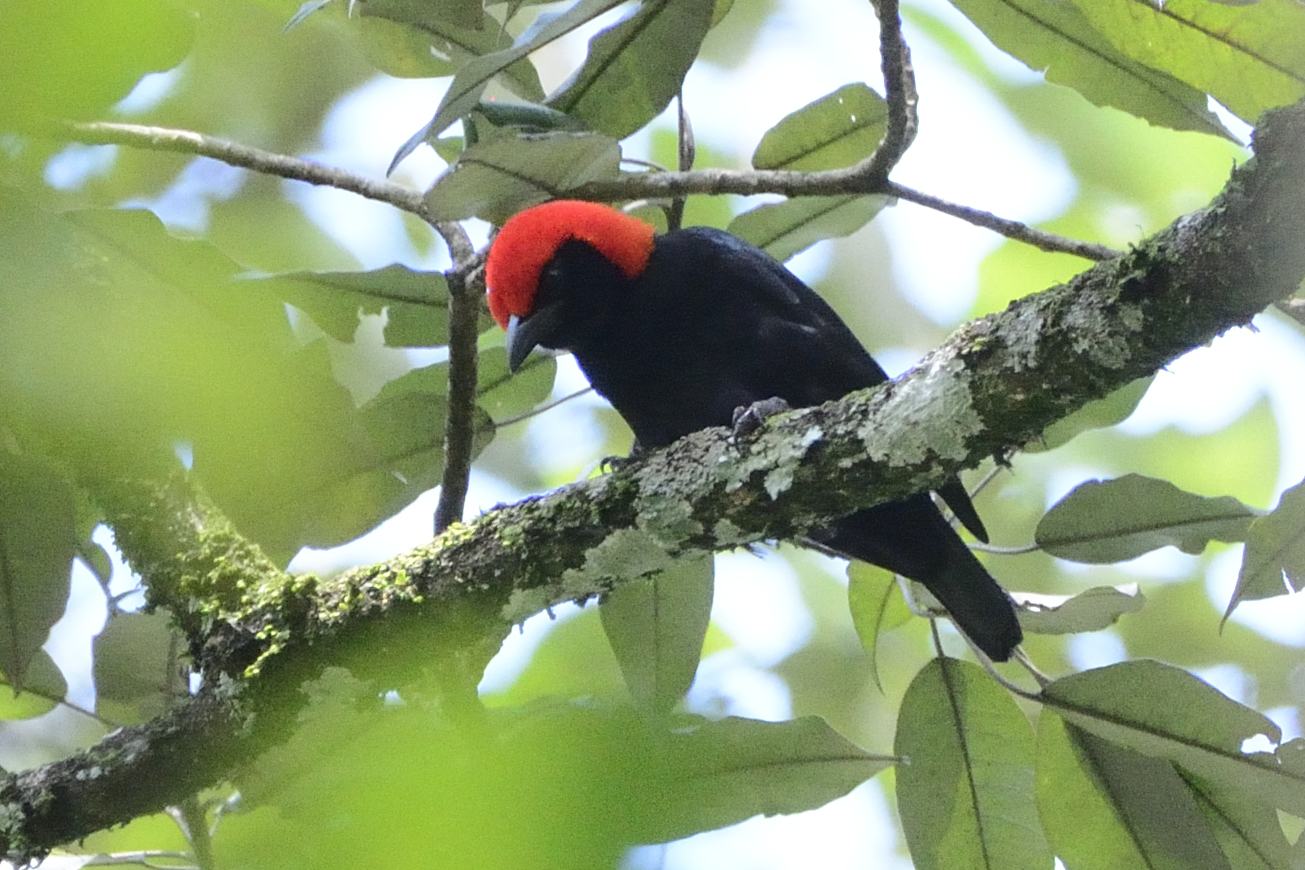
Red-headed Malimbe, Malimbus rubricollis – Picture by Florence
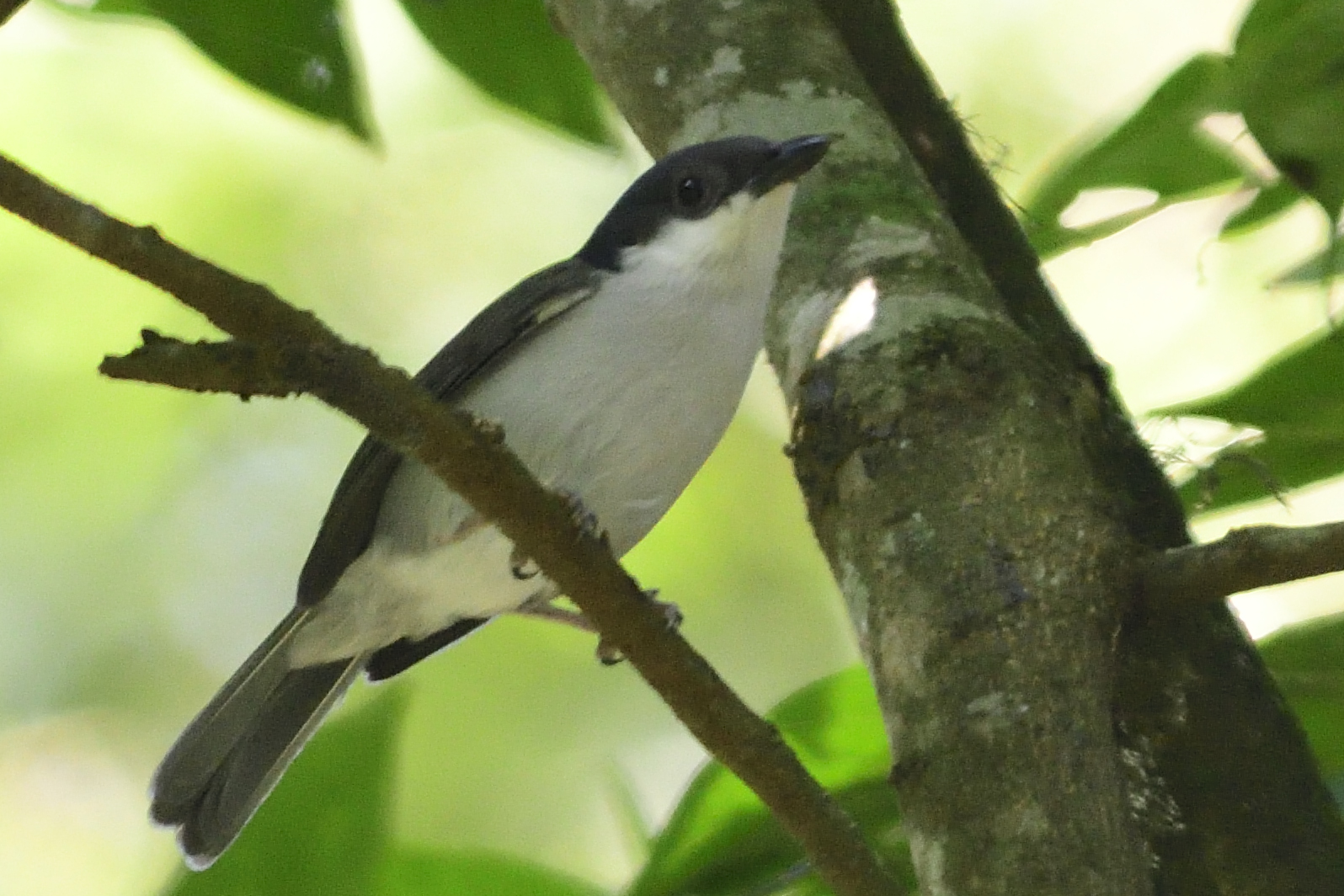
Pink-footed Puffback, Dryoscopus angolensis
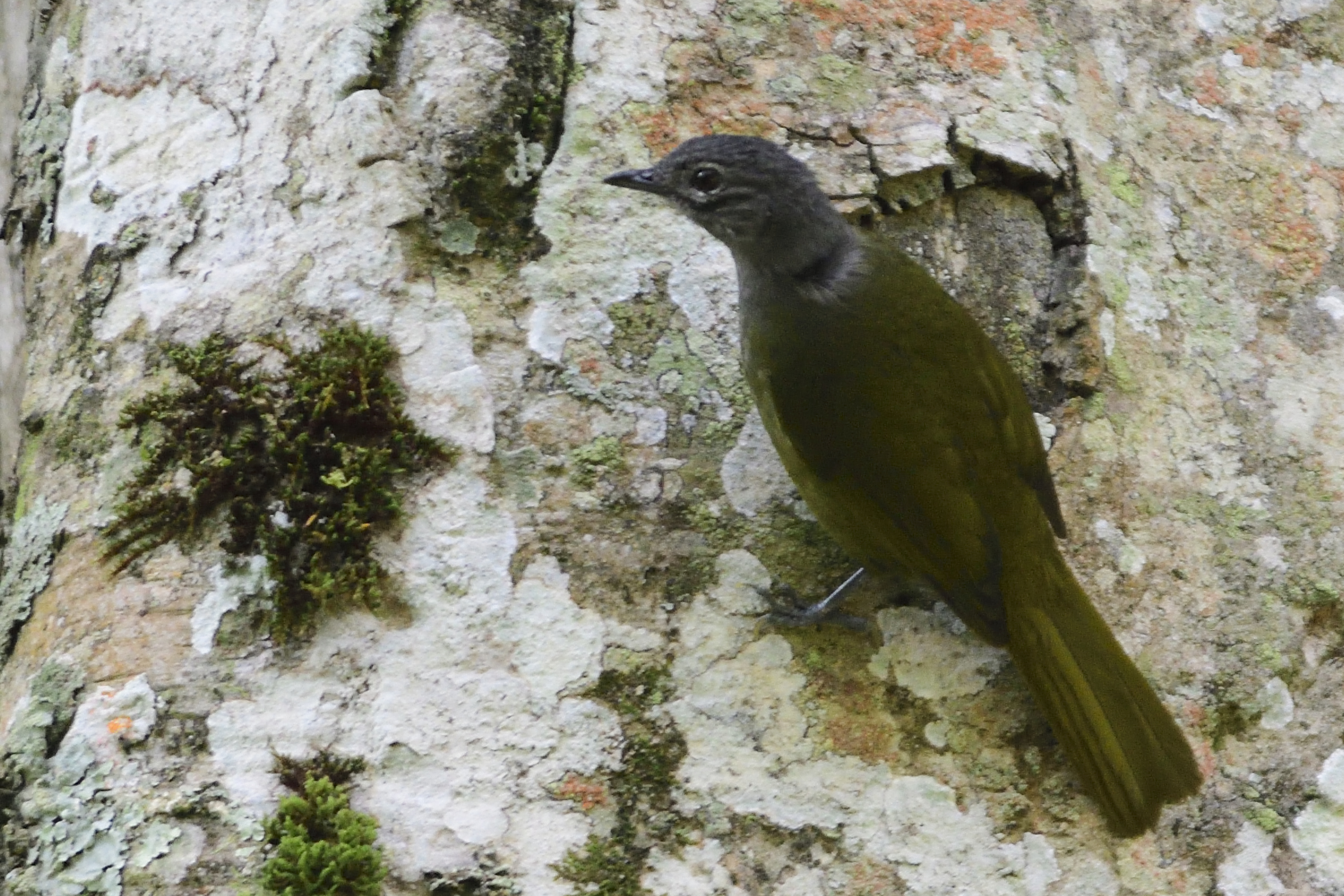
Kakamega Greenbul, Arizelocichla kakamegae – Endemic to Albertine Rift and W Kenya
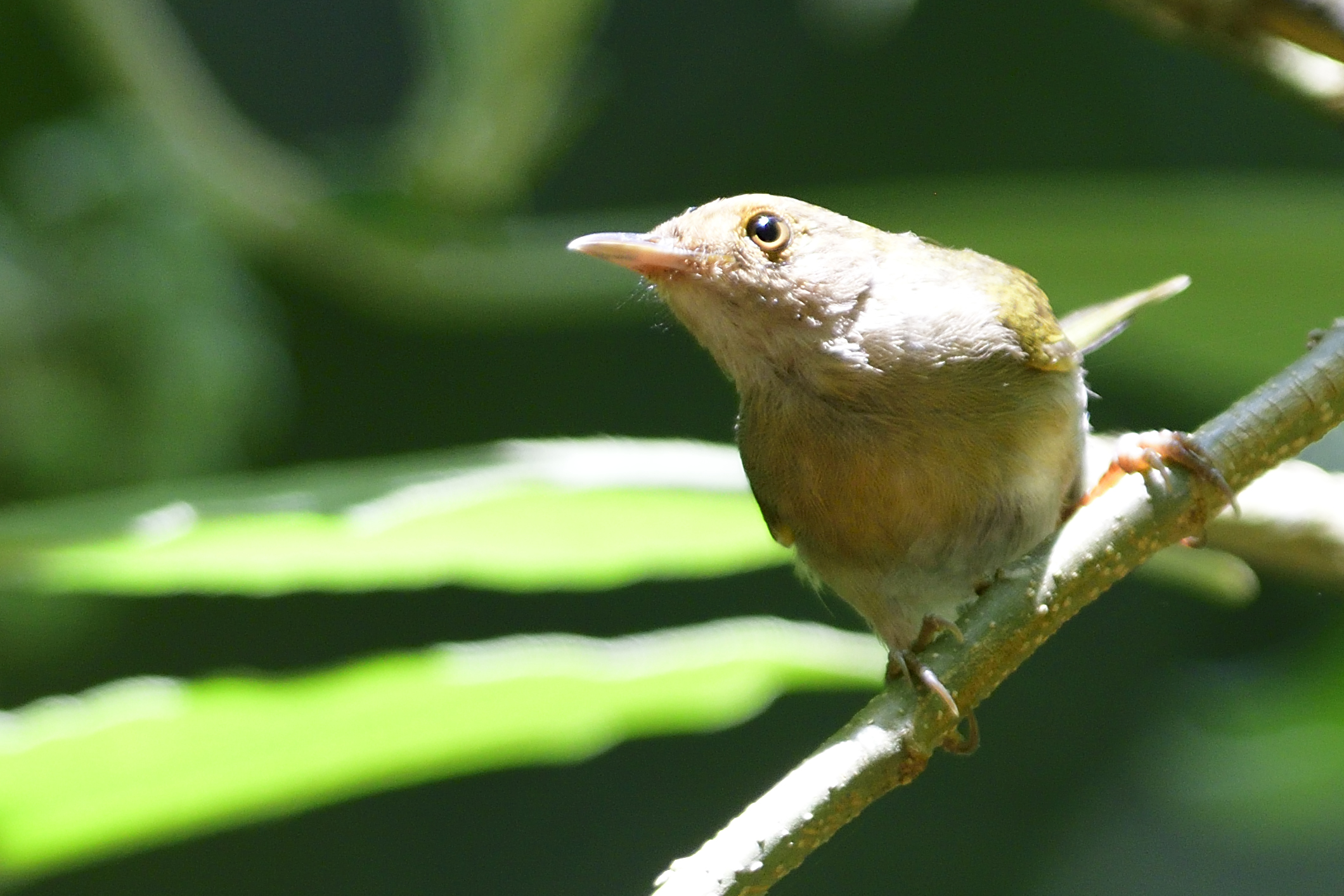
Olive-green Camaroptera, Camaroptera chloronata
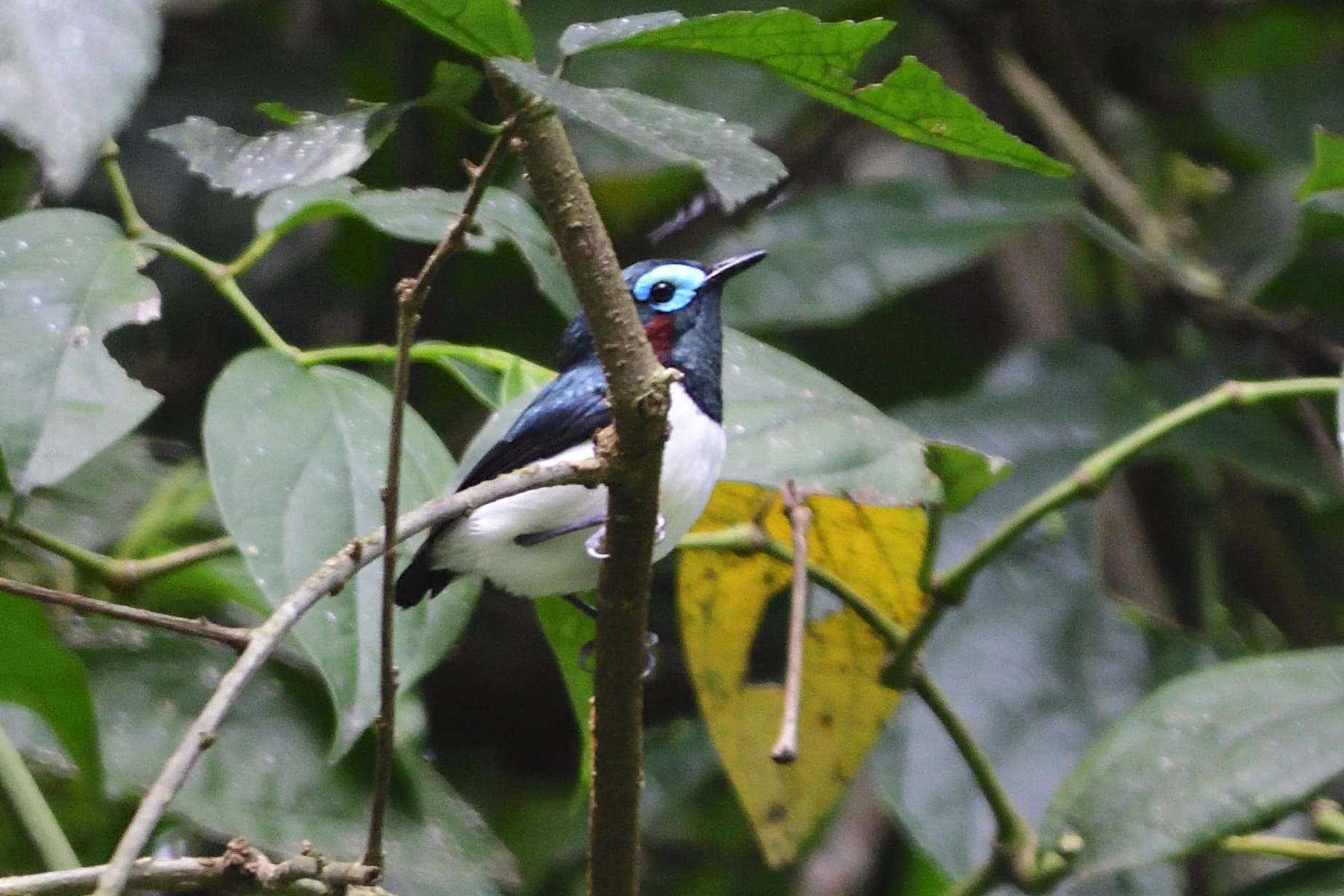
Jameson´s Wattle-eye, Platysteira jamesoni – Endemic to EC Africa
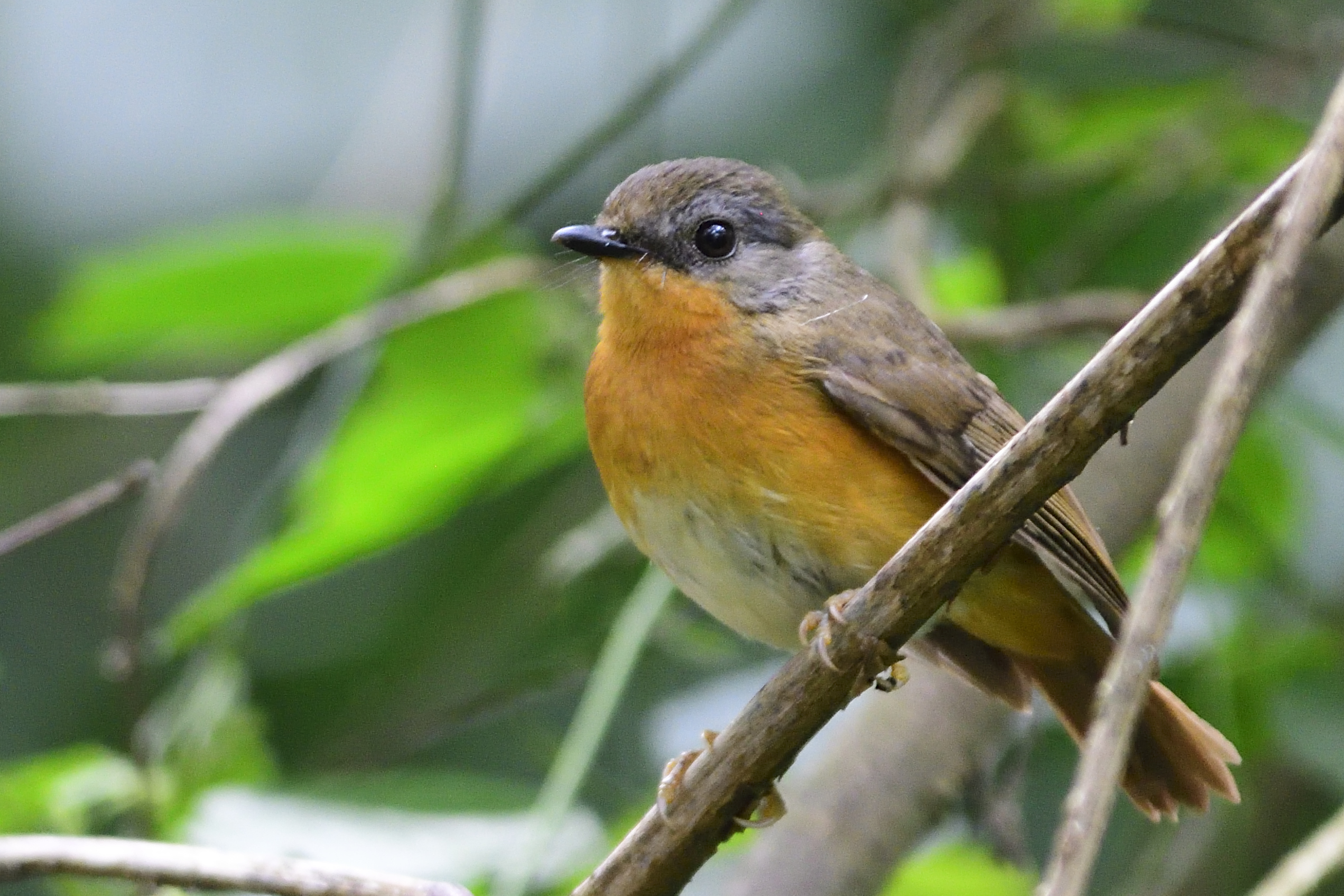
Equatorial Akalat, Sheppardia aequatorialis – Endemic to East Africa
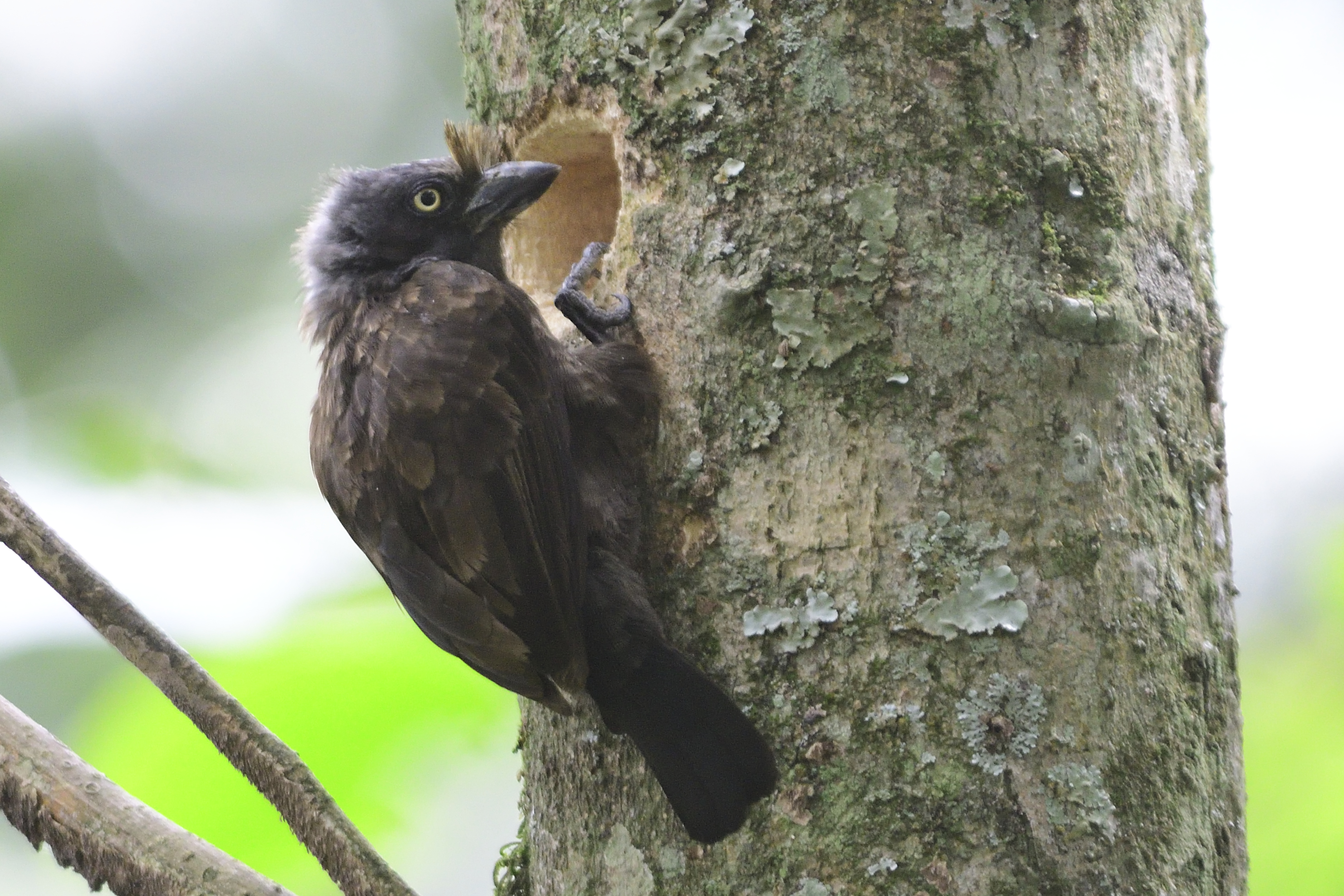
Grey-throated Barbet, Gymnobucco bonapartei
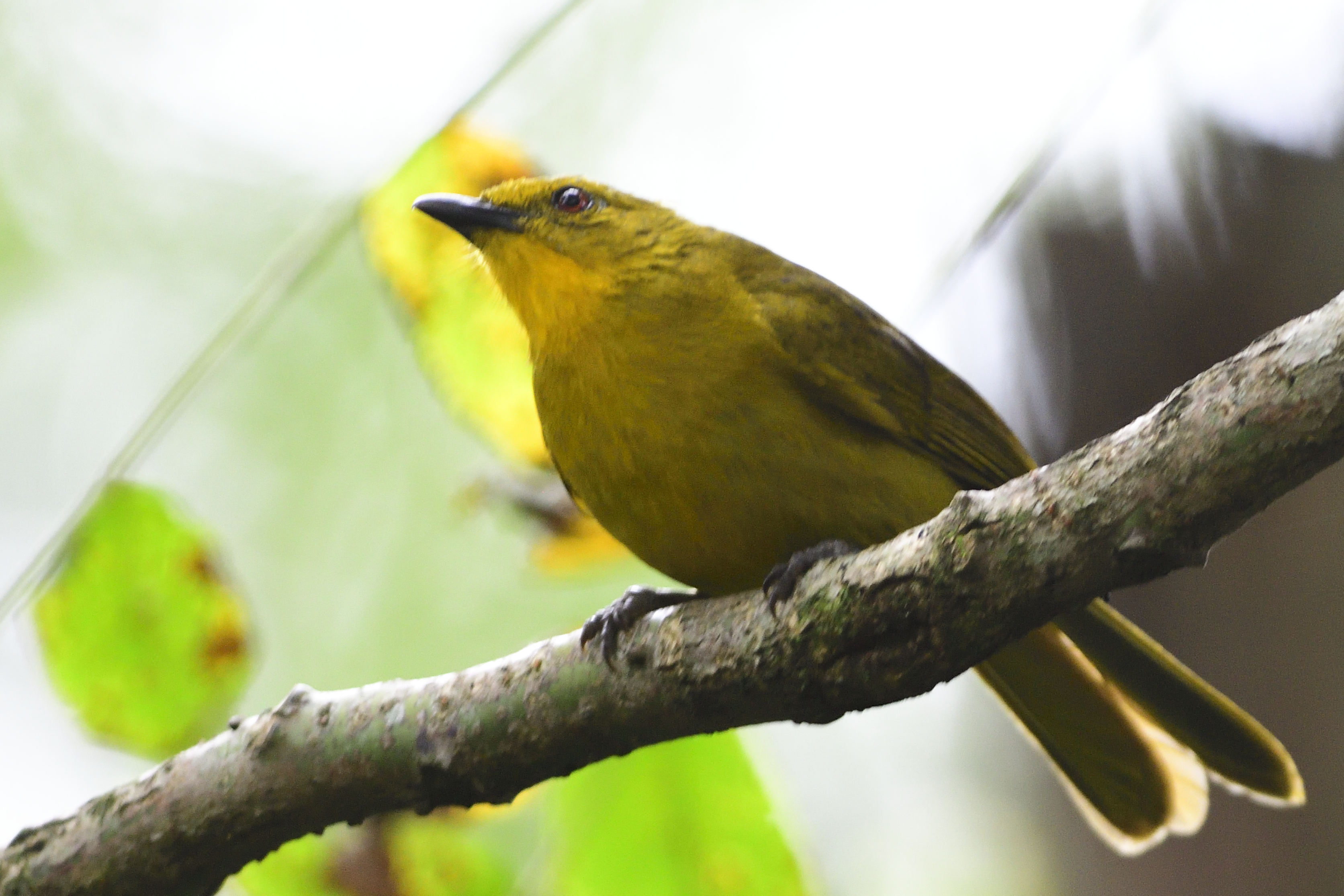
Joyful Greenbul, Chlorocichla laetissima – Endemic to East Africa
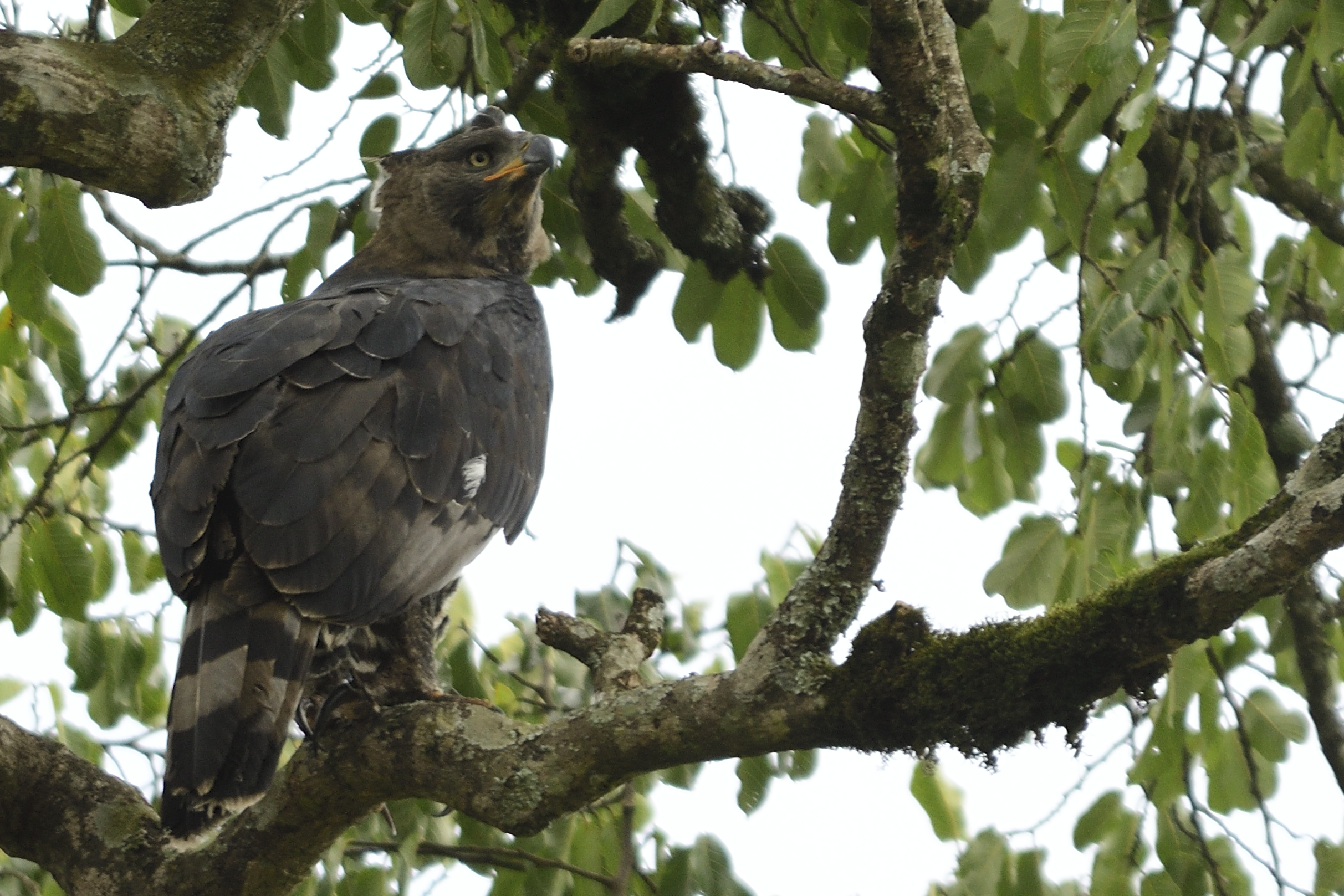
African Crowned Eagle, Stephanoaetus coronatus
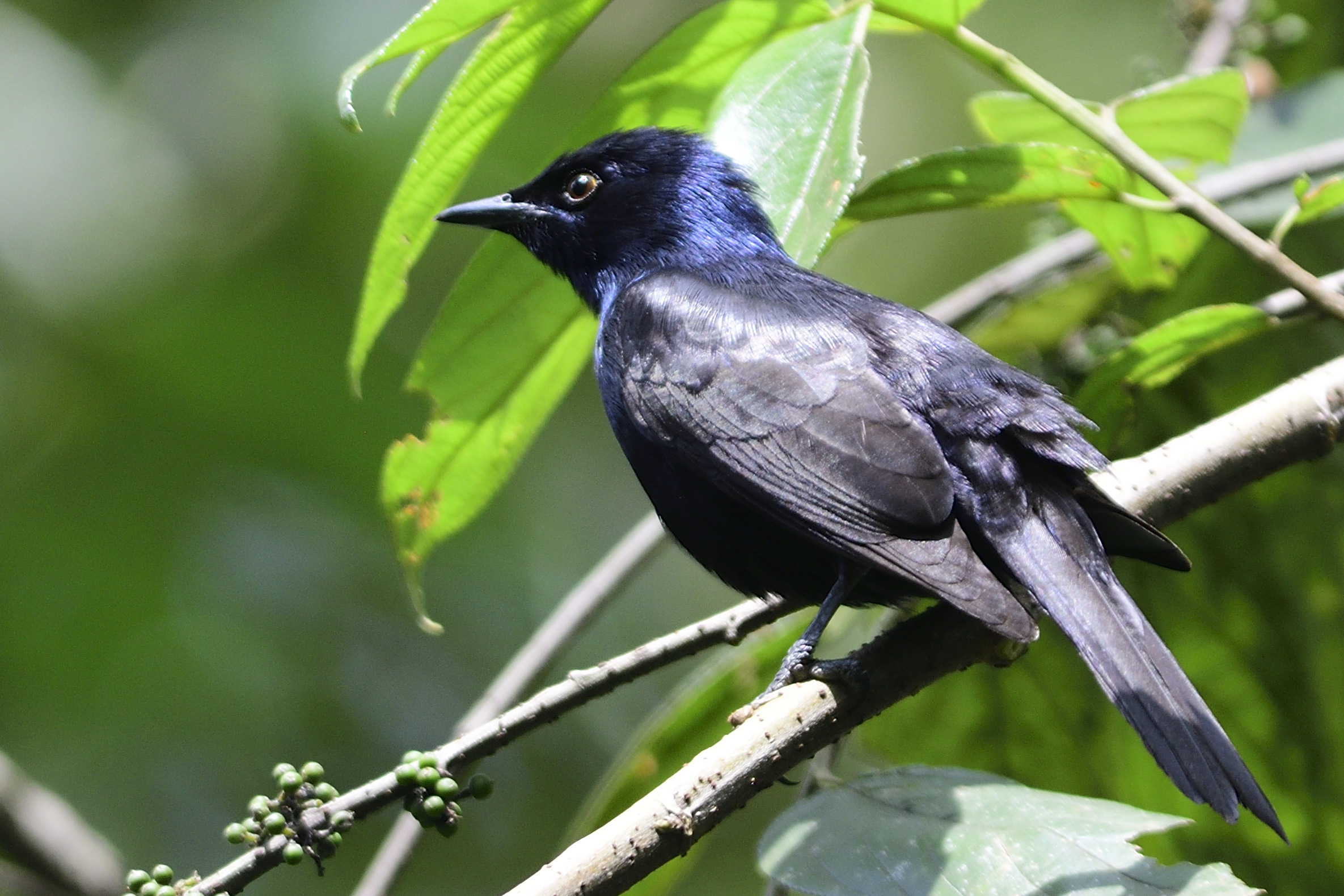
Stuhlmann´s Starling, Poeoptera sthulmanni – Endemic to NE Africa and Albertine Rift
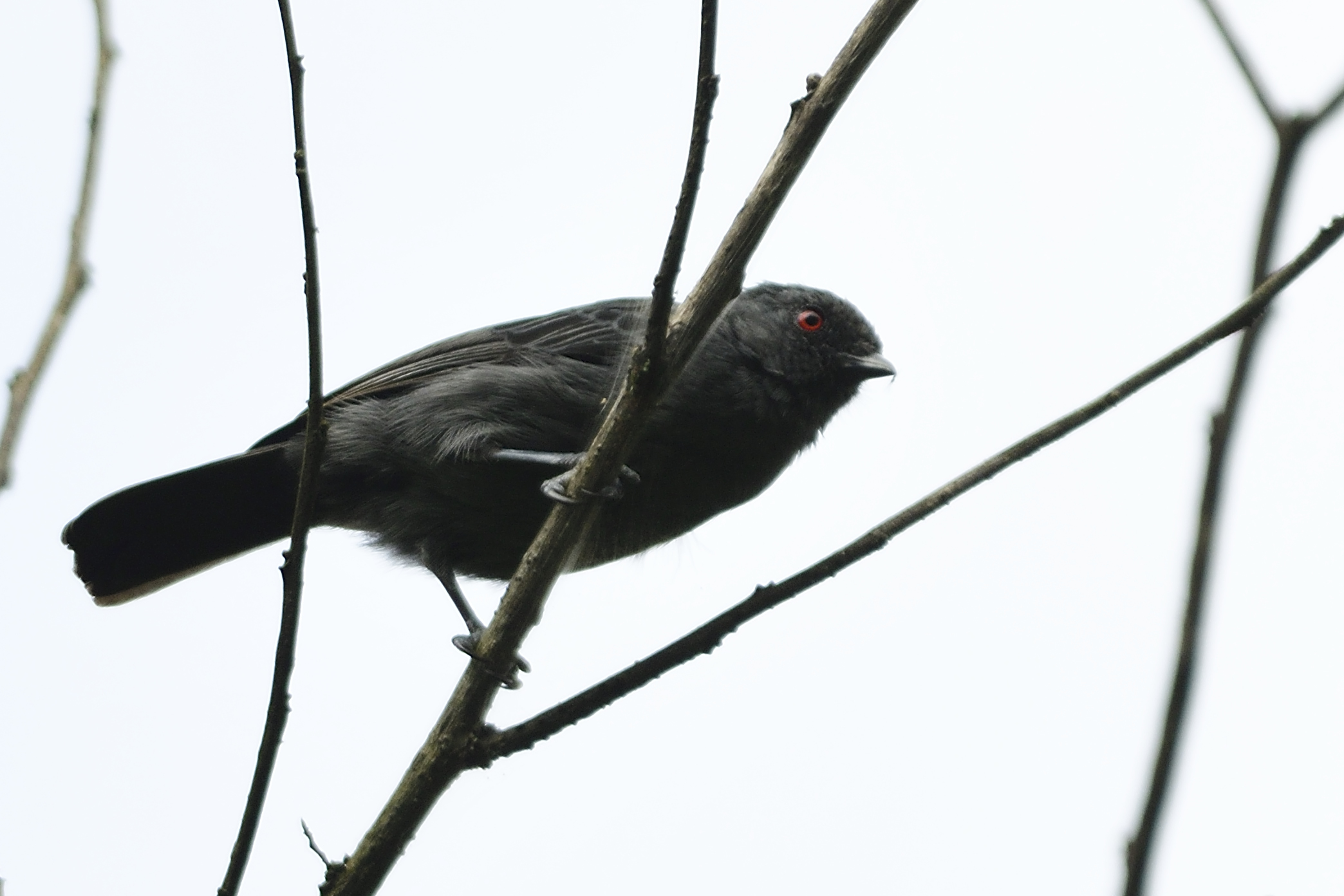
Dusky Tit, Parus funereus
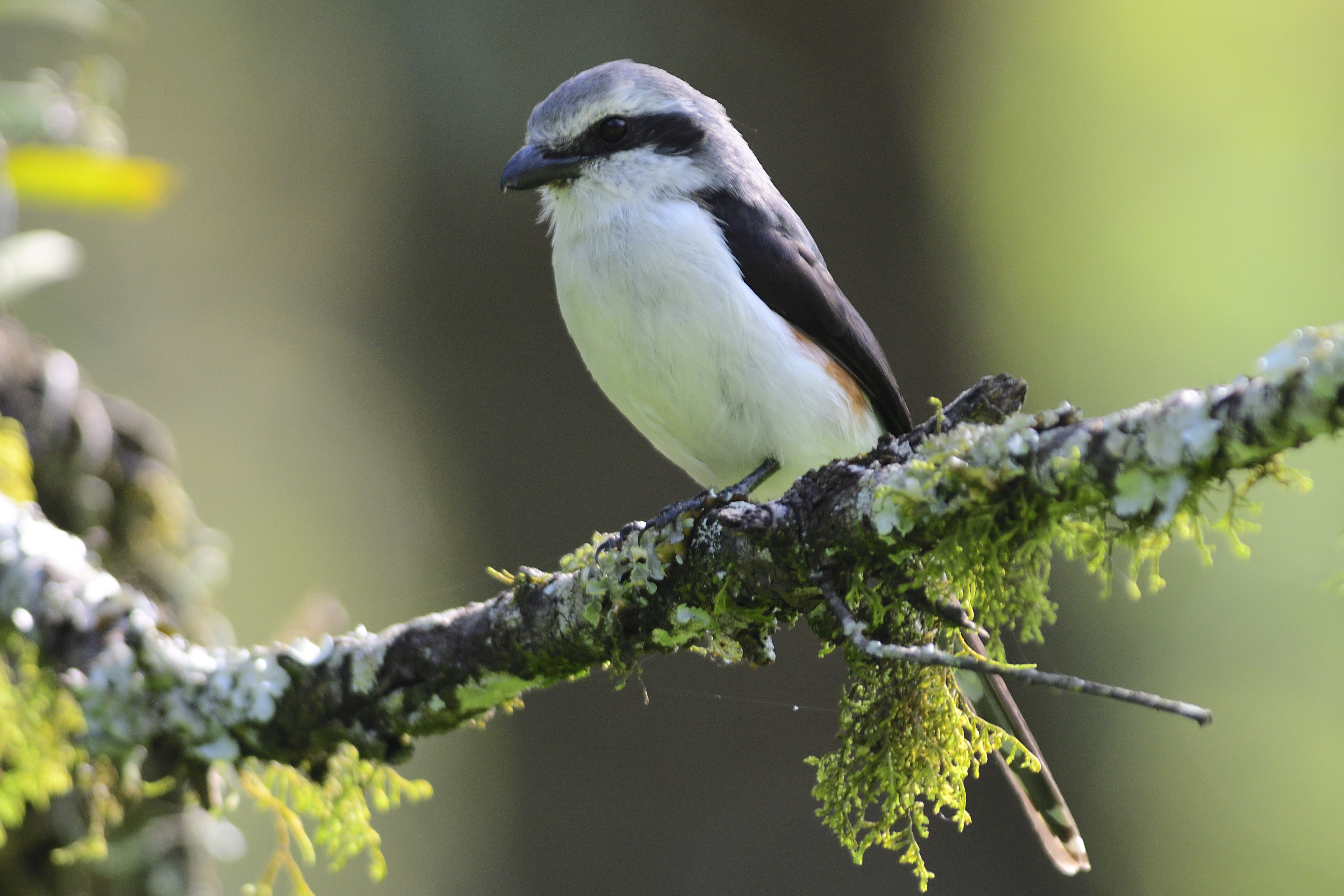
Mackinnon´s Fiscal, Lanius mackinnoni
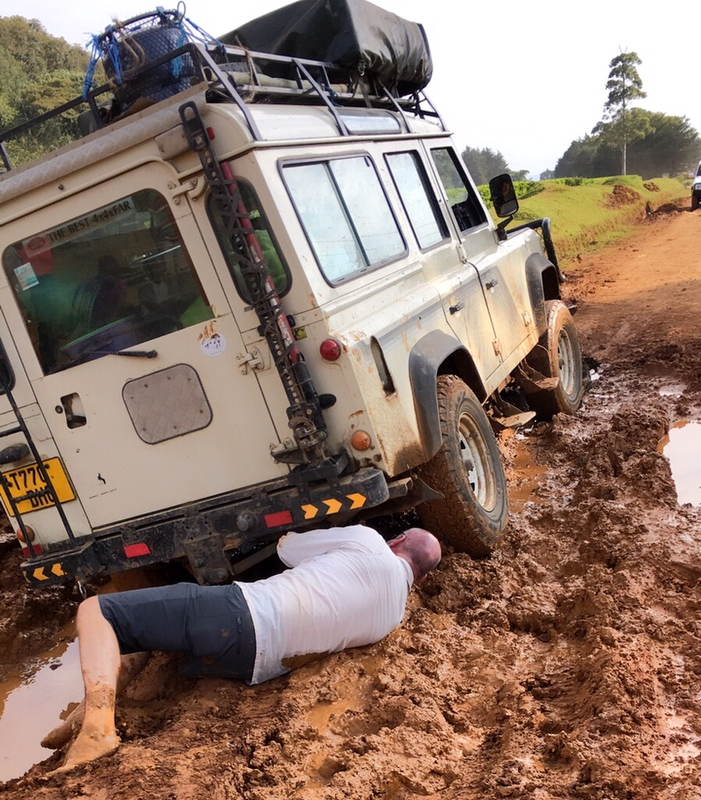
Enjoying the mud
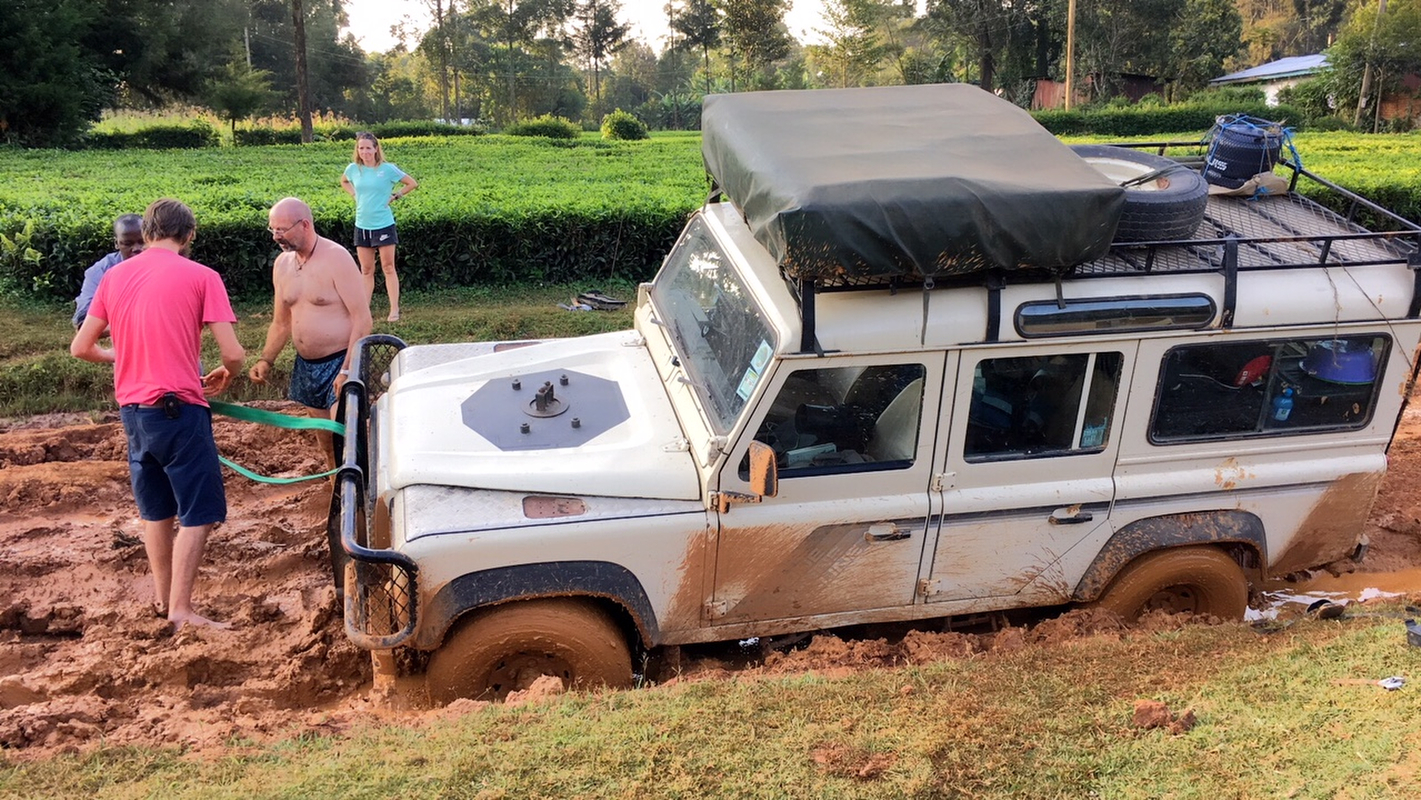
Help has arrived
Day 14 Thursday 19 July – Kakamega Forest
Francis wanted us to have an extra guide whilst in Kakamega forest, so he had set us up with Winston in addition. Dave and Bugs joined us too. We drove back to the little stream where we birded the day before and that little path up to a small village did not disappoint this time either. We saw many of the same species as the day before, but also added Ansorge´s Greenbul, Yellow-spotted Barbet, Thick-billed Honeyguide, Green-headed Sunbird, White-chinned Prinia, Olive-bellied Sunbird, Bocage´s Bushshrike, Buff-spotted and Yellow-crested Woodpecker and Red-tailed Bristle-bill. We were 6 people all together and everyone was busy pointing out their birds, so it got quite hectic. What I did not know was that while Florence and I took pictures of the Red-tailed Bristle-bill, she had also found a Scaly-breasted Illadopsis she managed to get pictures off. We had quite a few birds in the morning and better pictures of some from the day before. We returned to Rondo retreat and took Dave and Bugs on a short forest walk. We added Plain (Cameron Sombre) Greenbul and got better pictures of some other birds from the day before here as well. Dave and Bugs were very happy to see the White-spotted Flufftail. Florence disappeared for a while and came back with a picture of a Grey-winged Robin-Chat. We had lunch with Dave and Bugs. They had to be in Mara in 2 days so could not stay with us any longer. After lunch we left for our new camp site. We stopped on the way and got better shots of Uganda Woodland Warbler and we saw Chestnut Wattle-eye, Slender-billed Greenbul, African Broadbill, Yellow-rumped Tinkerbird and Bar-tailed Trogon. We drove on to our new camp. We parked the car and took a walk there at another section of the forest. Black-collared Apalis, African Blue Flycatcher were seen, before we spotted a very inquisitive Snowy-crowned Robin-Chat. On the way back to the car we saw more Equatorial Akalats. In my experience Akalats and Alethe´s are very shy, but in Kakamega forest they were very easy to see. It had been another great day in Kakamega Forest. Number of lifers for me for the day amounted to 9 making it a total of 29 for 2 days in Kakamega Forest.
Here are some pictures from Day 14:
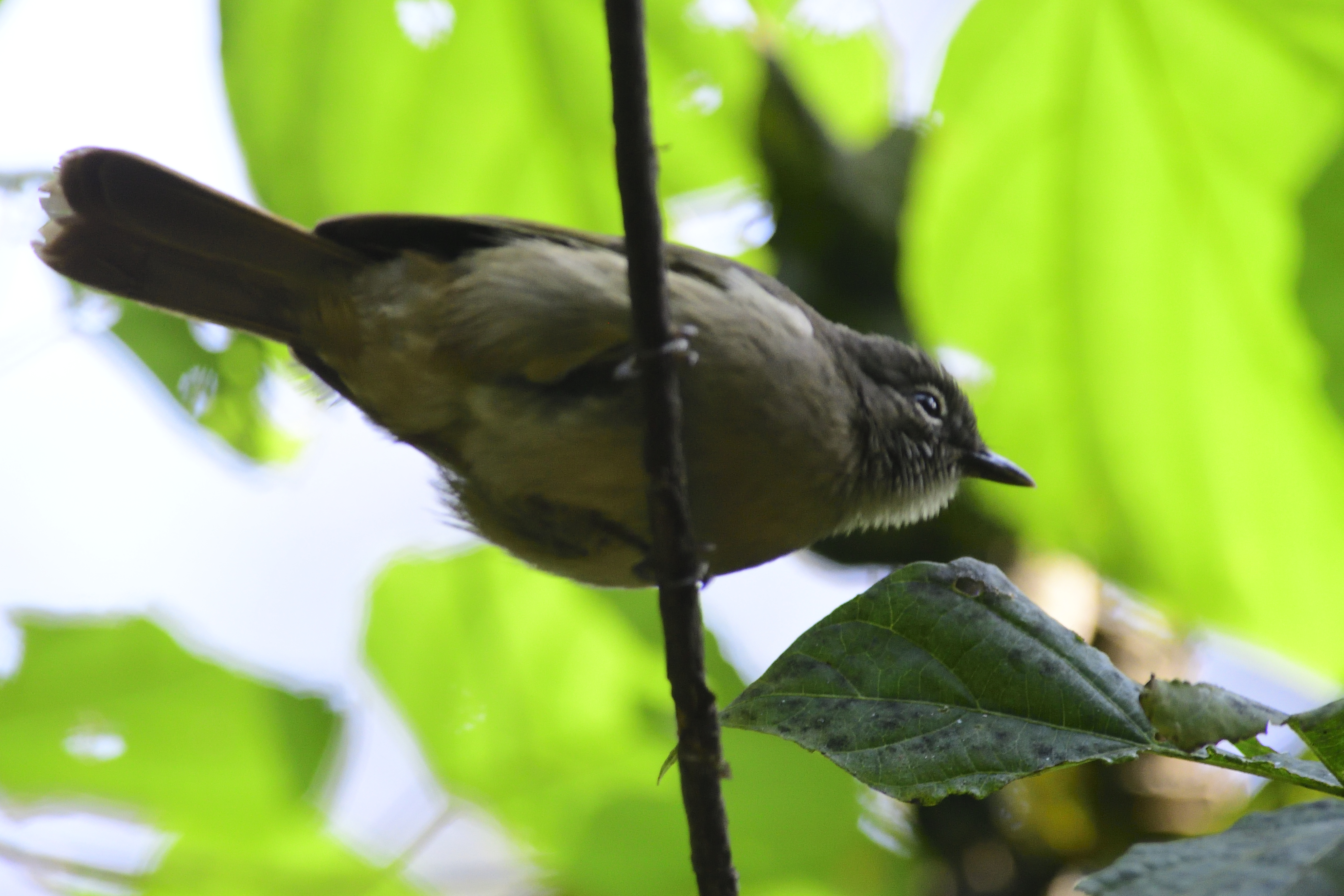
Ansorge´s Greenbul, Eurillas ansorgei
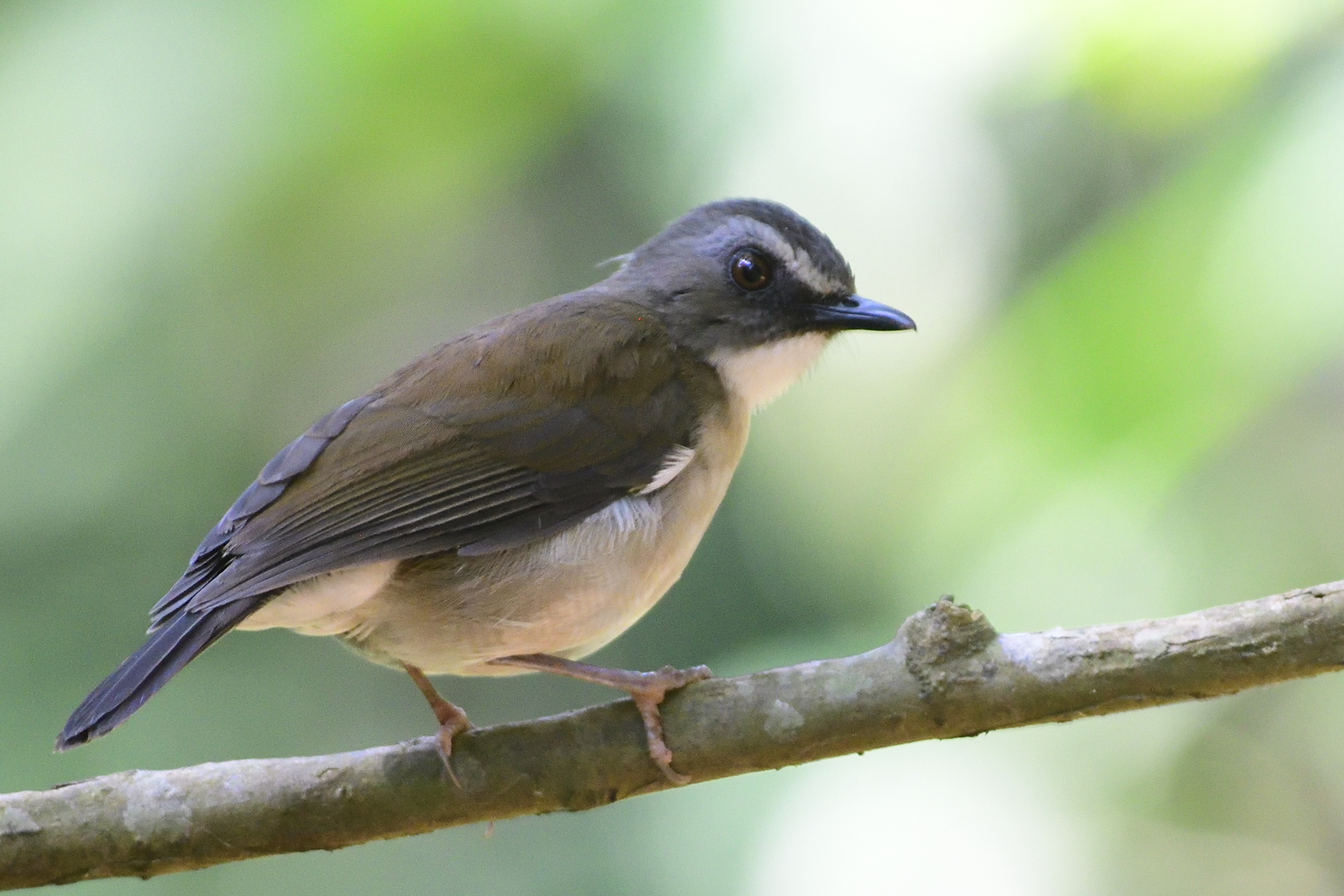
Brown-chested Alethe, Pseudalethe poliocephala
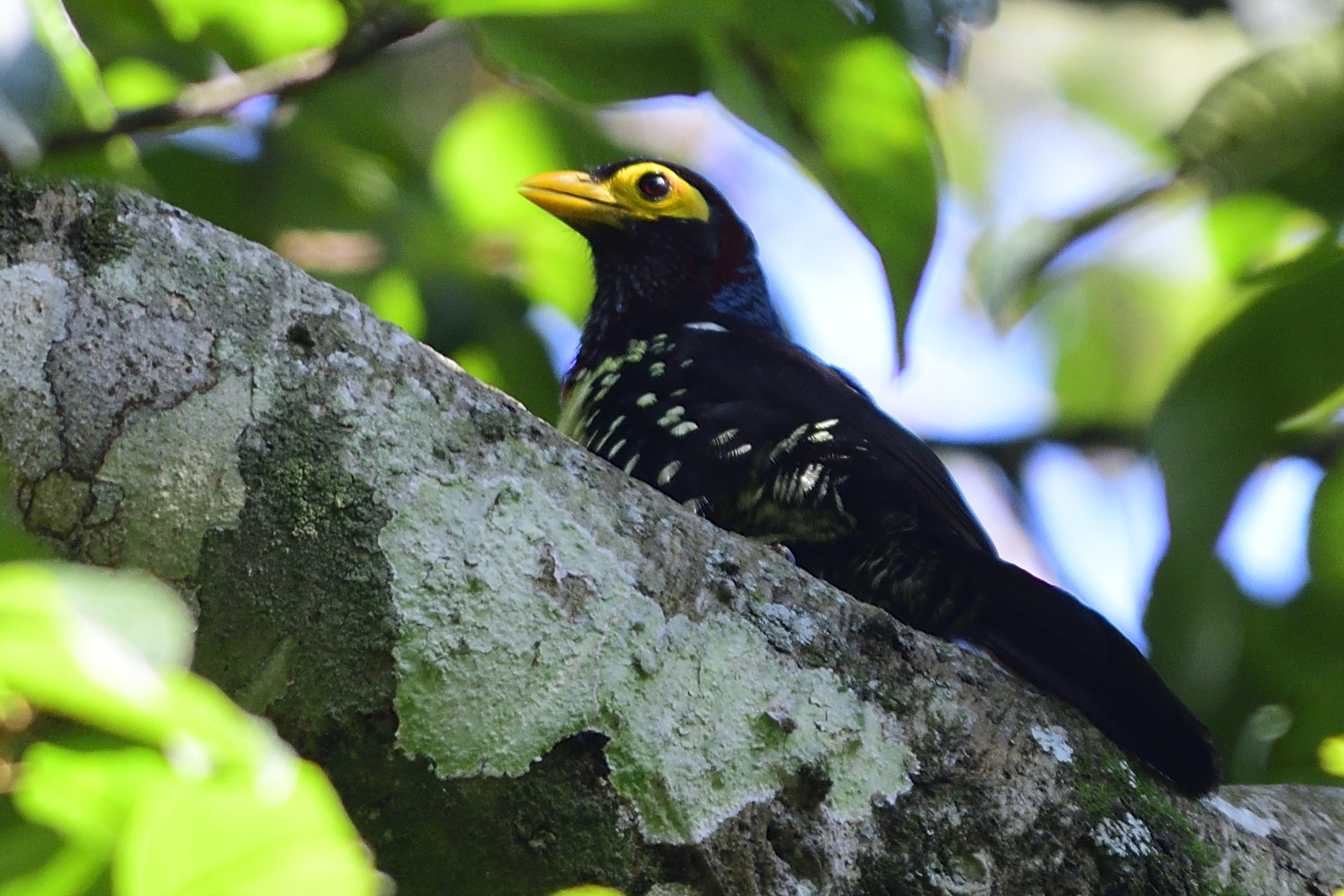
Yellow-billed Barbet, Trachyphonus pupuratus
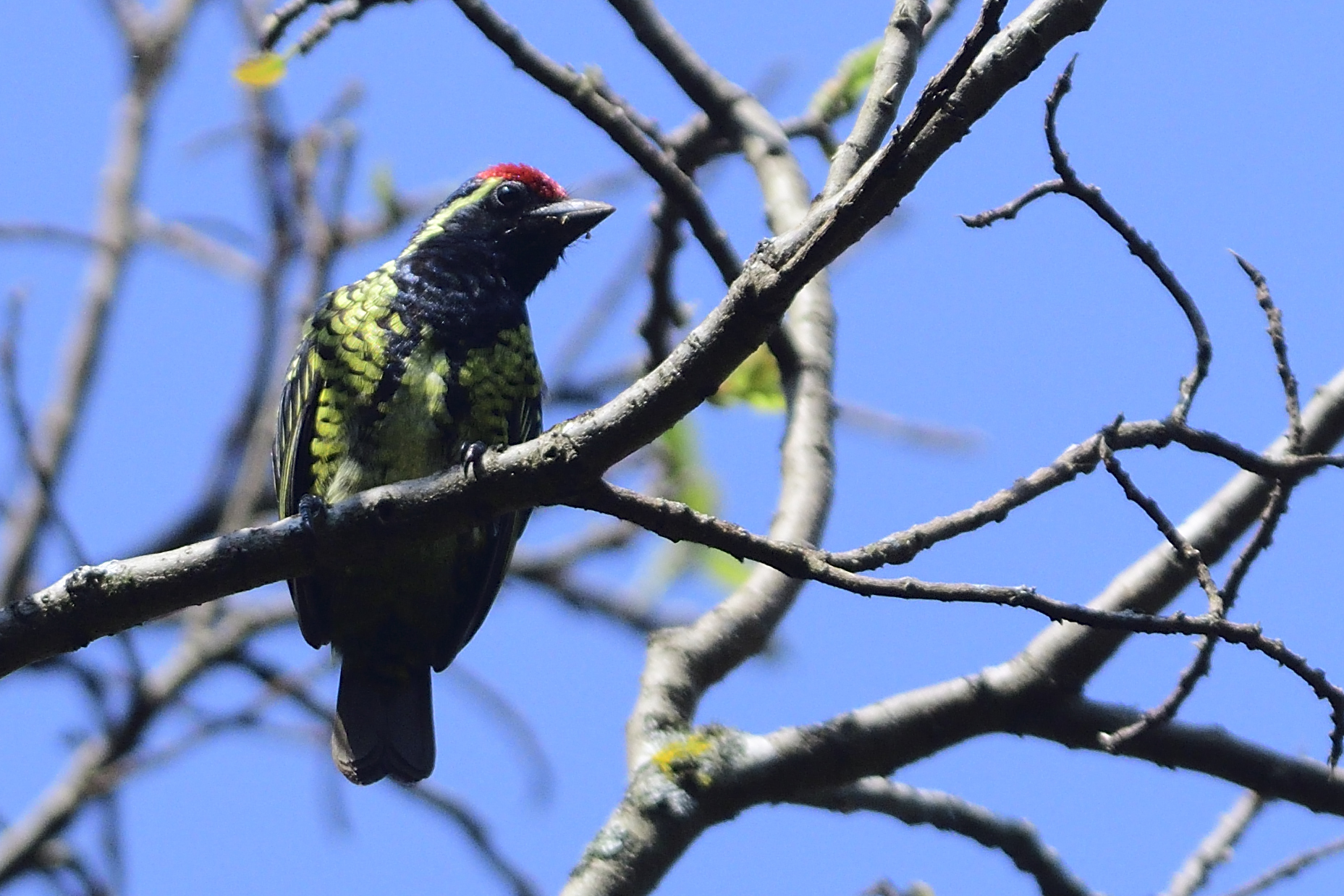
Yellow-spotted Barbet, Buccanodon duchaillui
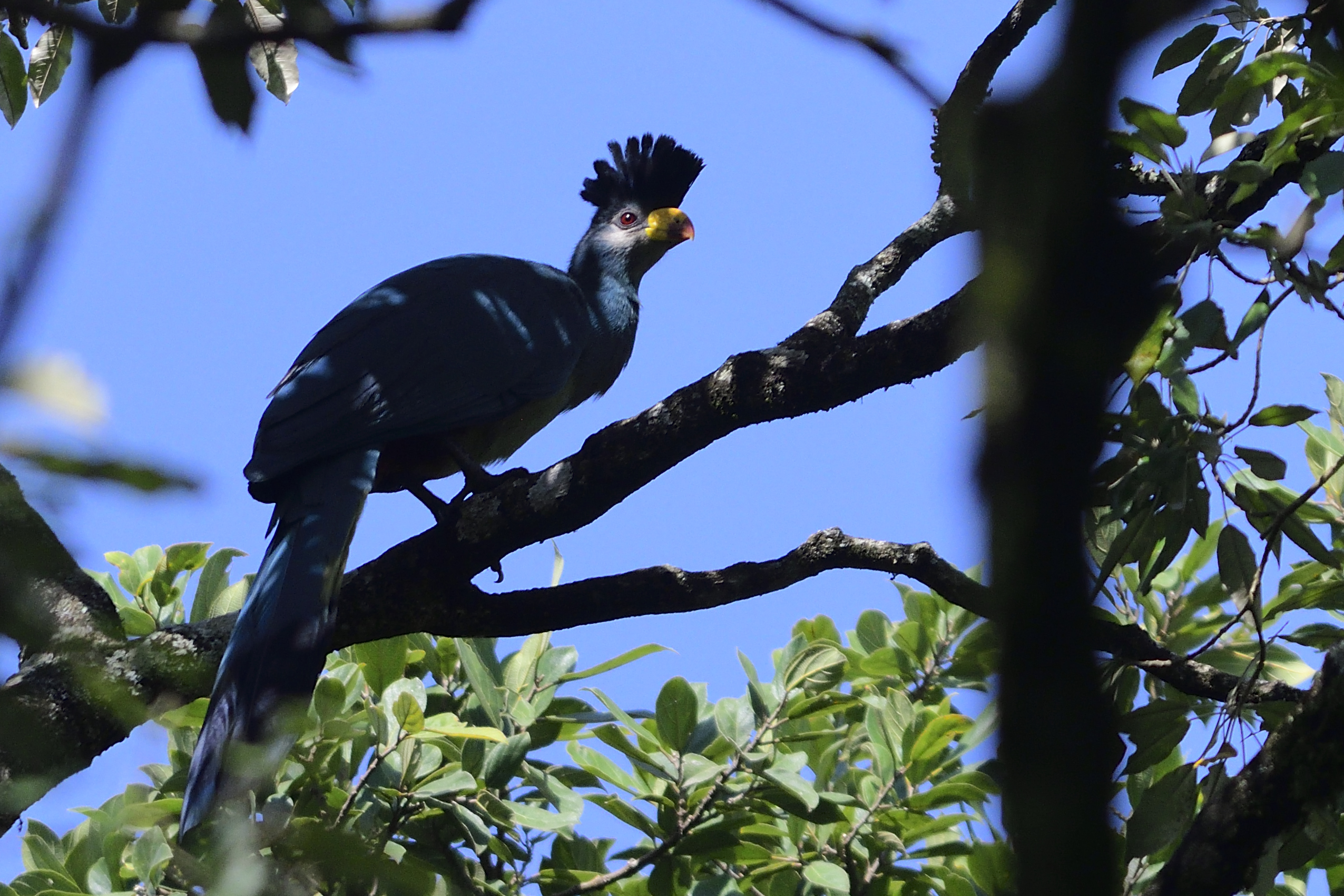
Great Blue Turaco, Corythaeola cristata
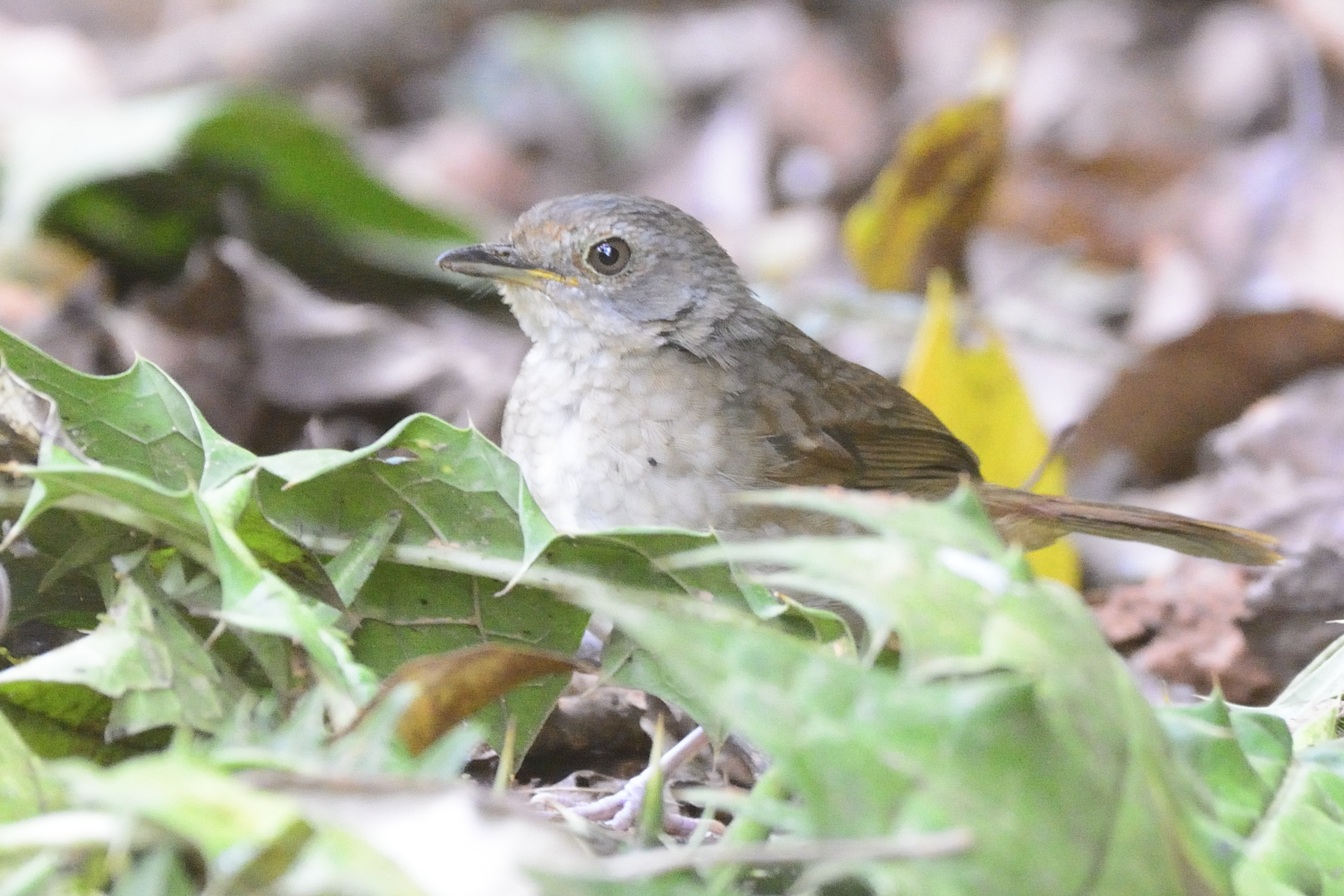
Scaly-breasted Illadopsis, Illadopsis albipectus – Picture by Florence
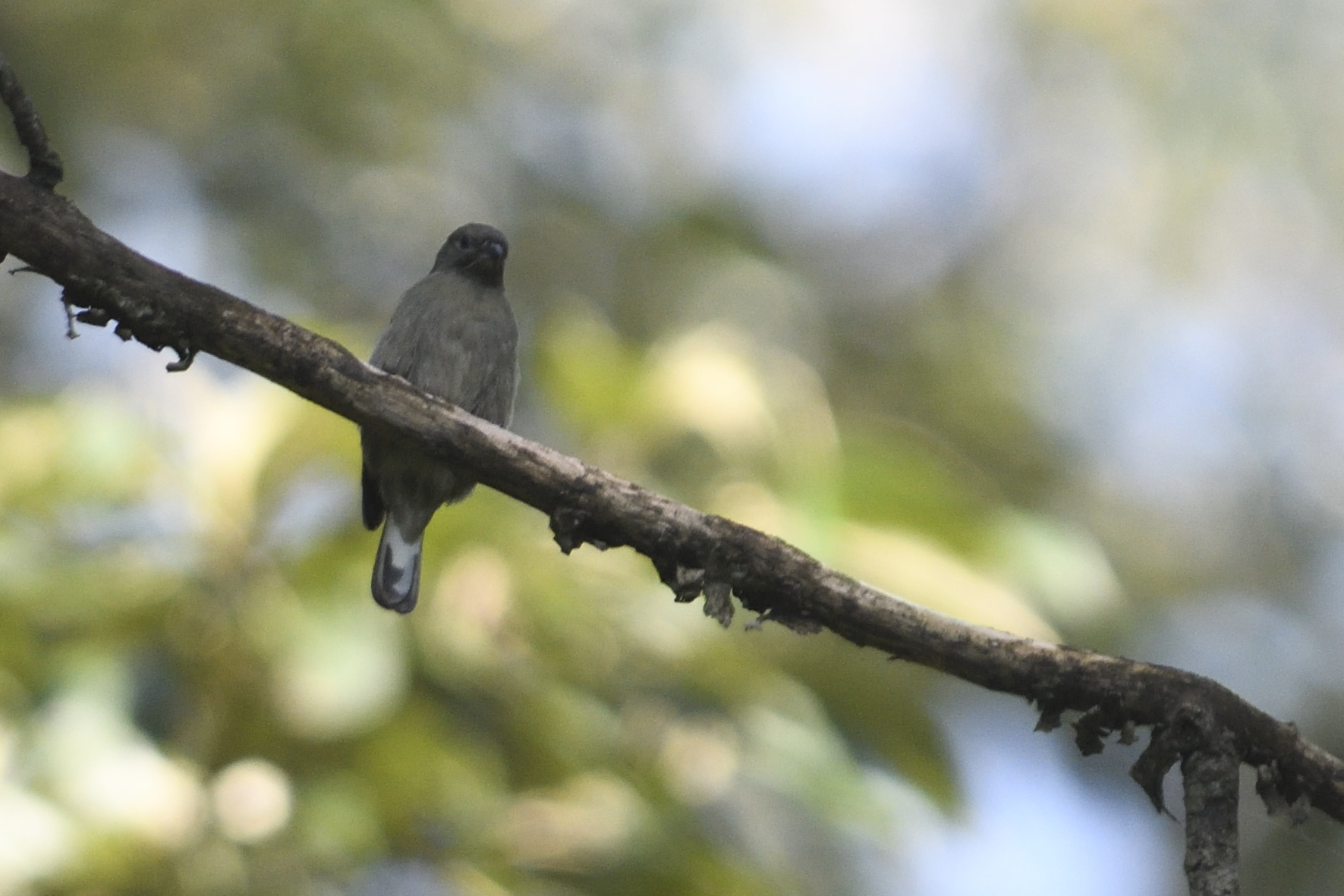
Thick-billed Honeyguide, Indicator conirostris
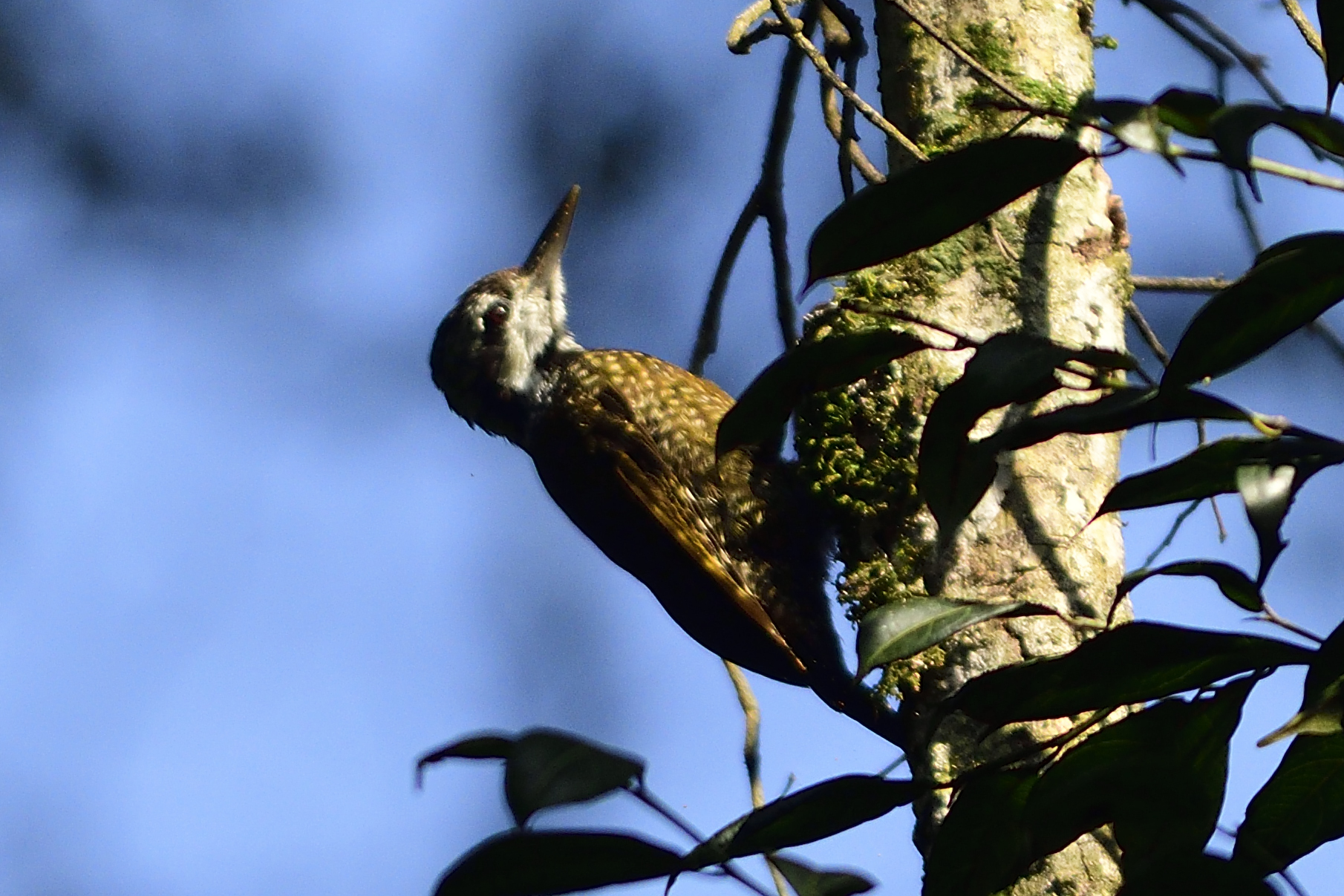
Yellow-crested Woodpecker, Dendropicos xanthlophus
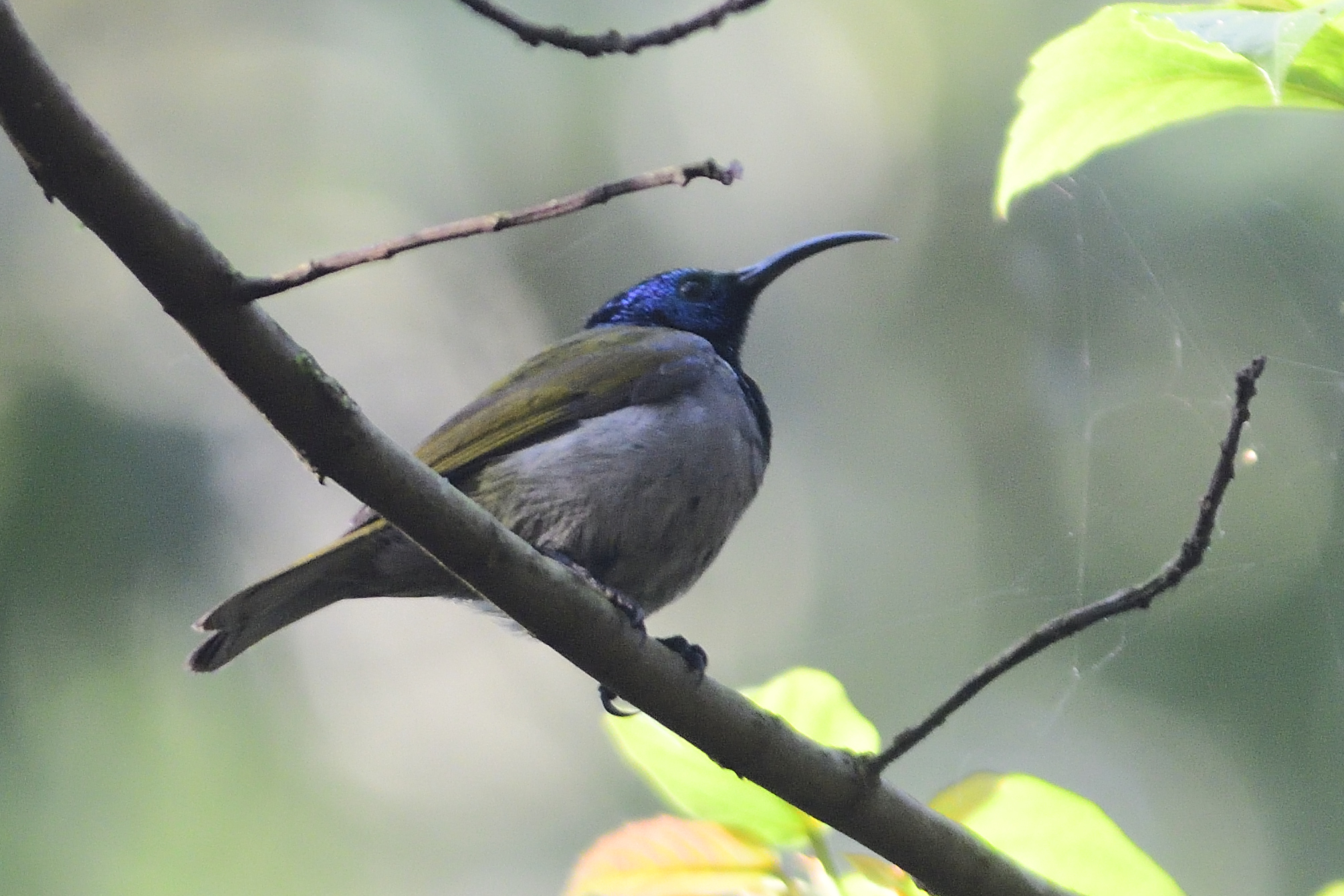
Green-headed Sunbird, Cyanomitra verticalis
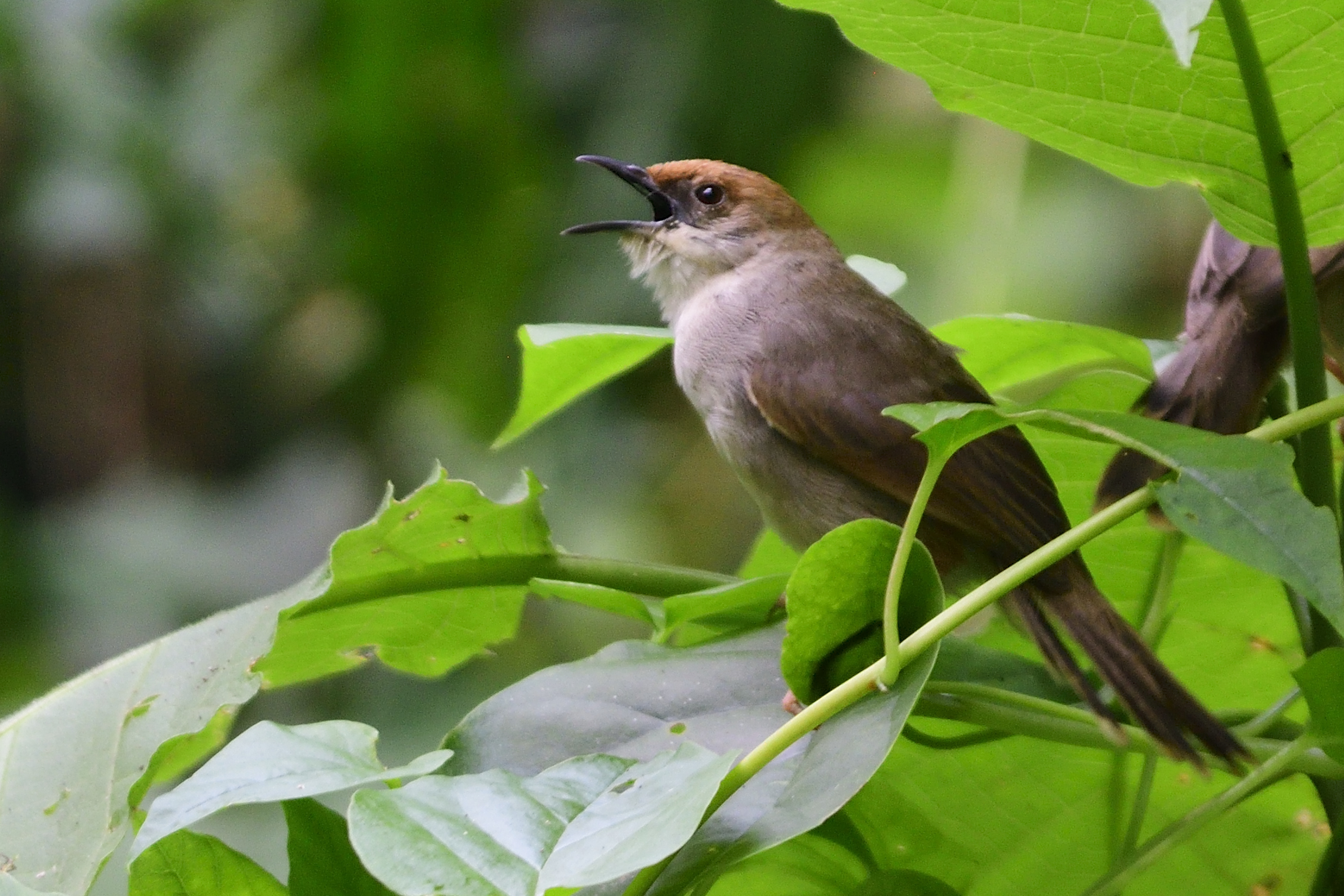
Chubb´s Cisticola, Cisticola chubbi
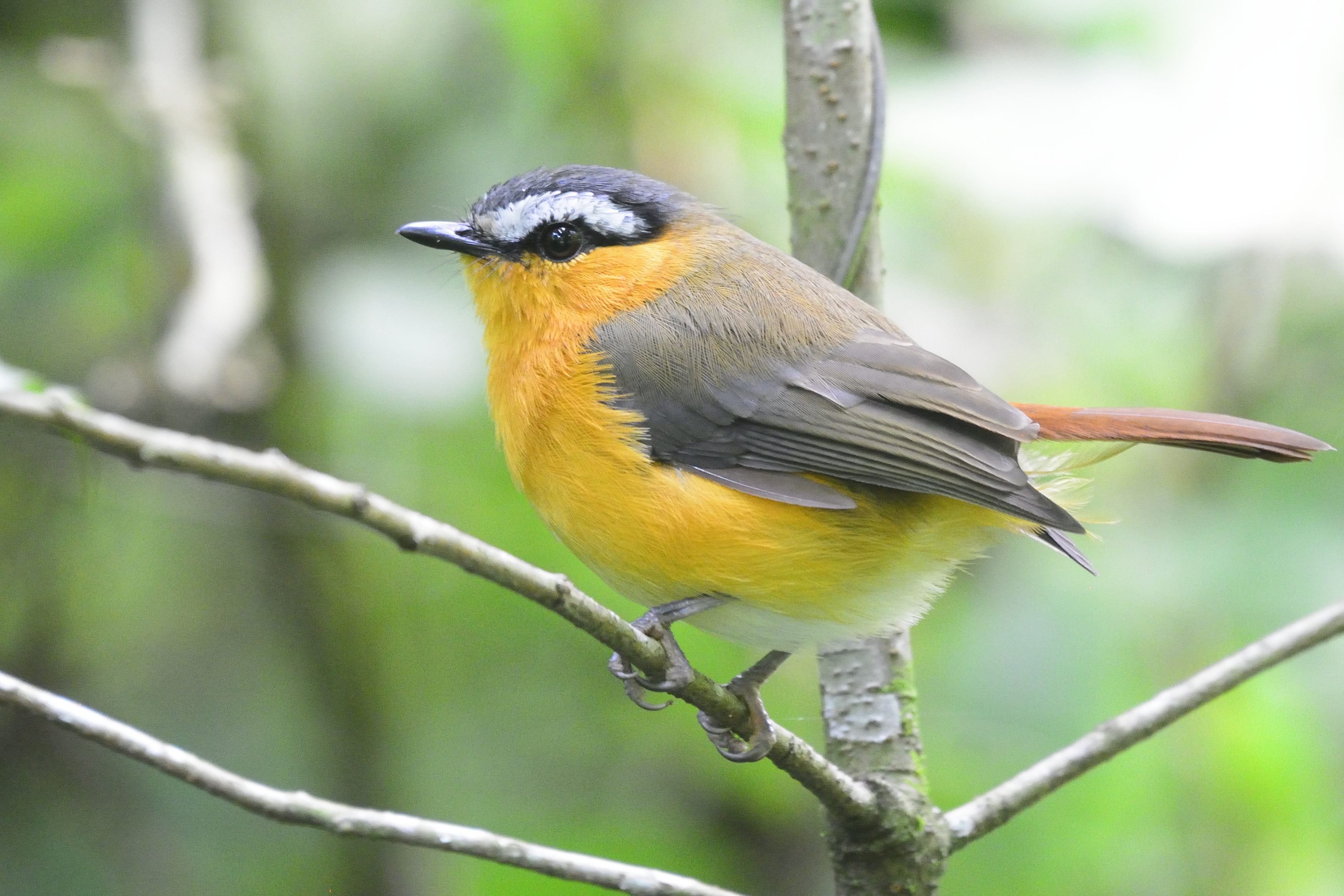
Grey-winged Robin-Chat, Sheppardia polioptera – Picture by Florence
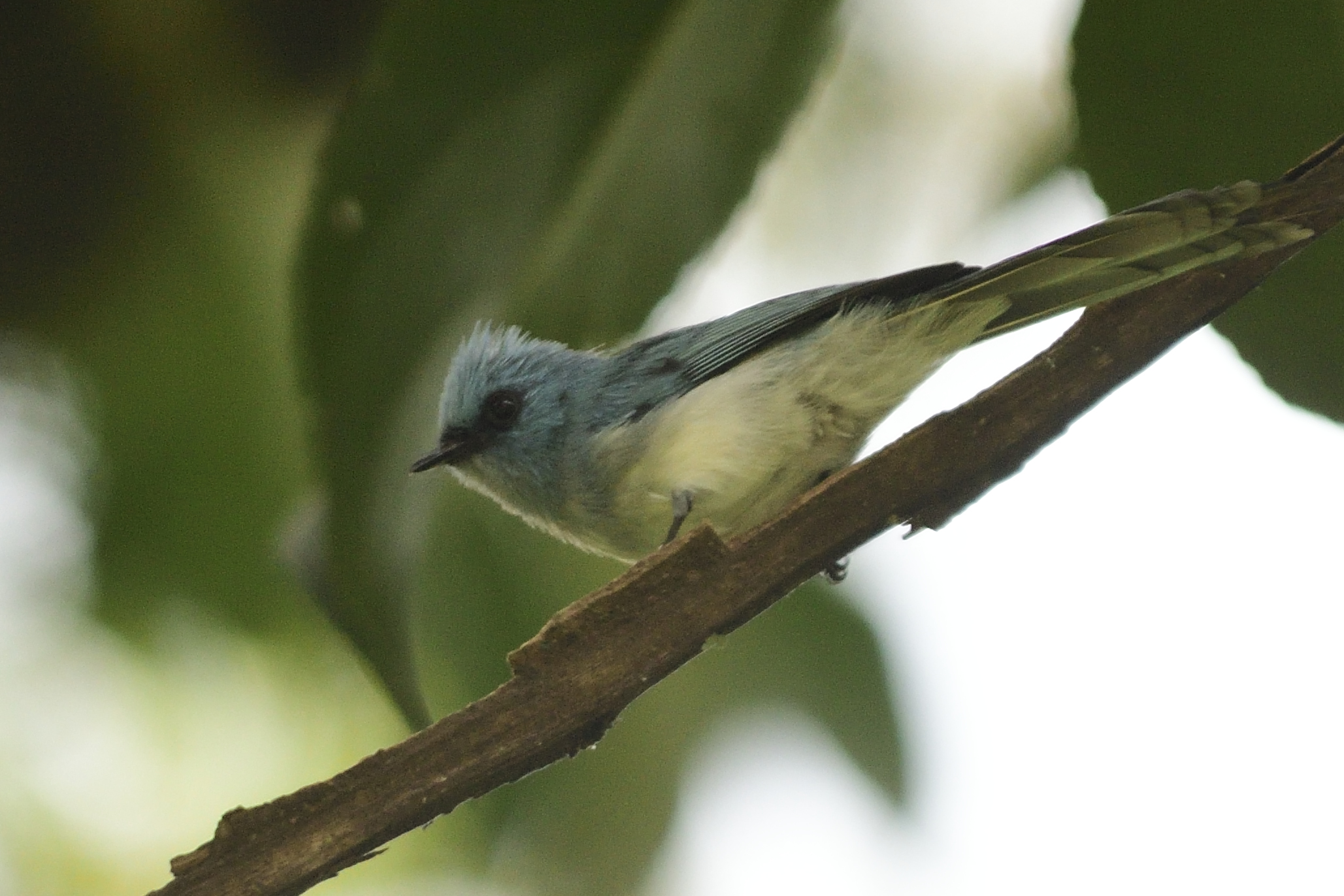
African Blue Flycatcher, Elminia longicauda
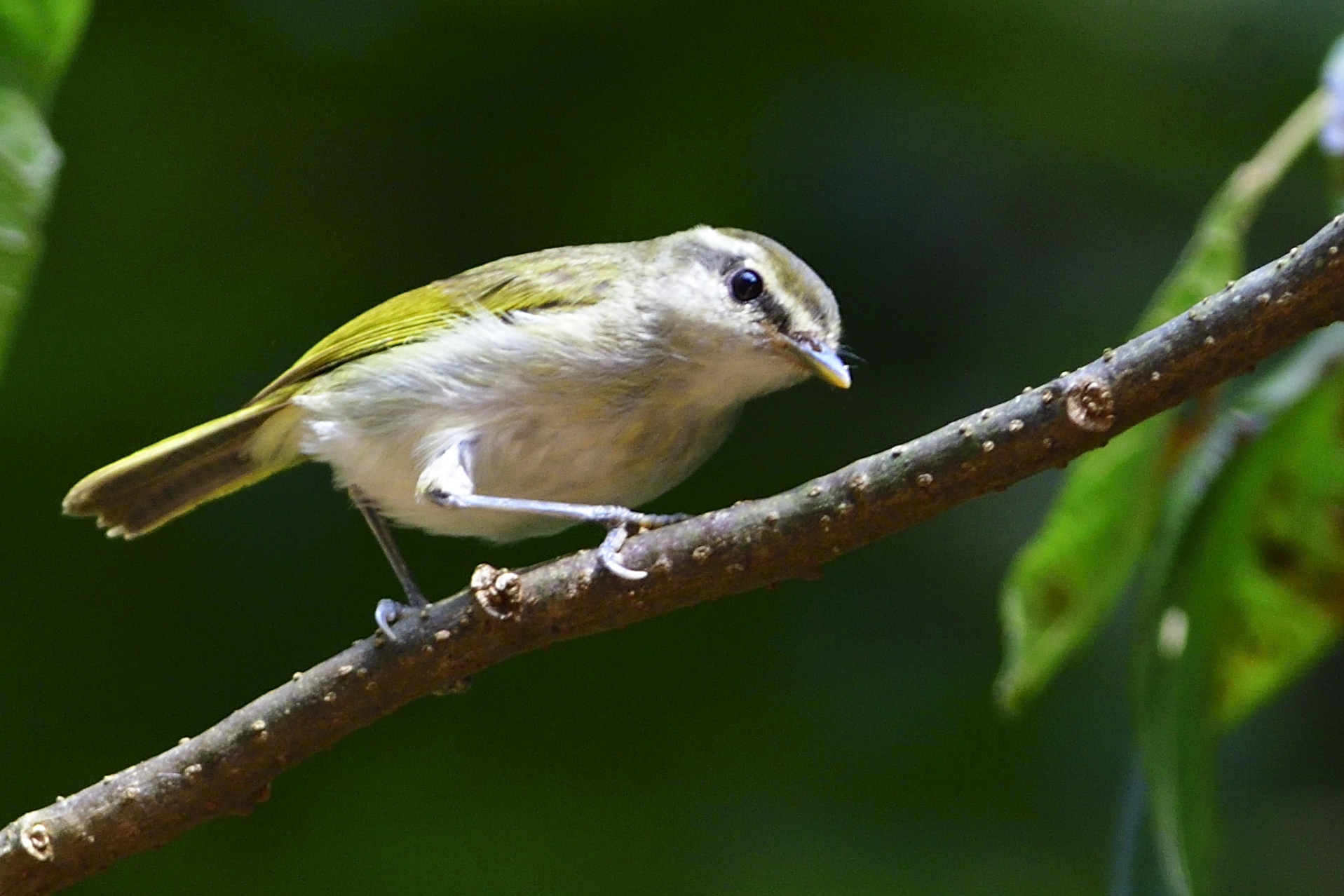
Uganda Woodland Warbler, Phylloscopus umbrovirens
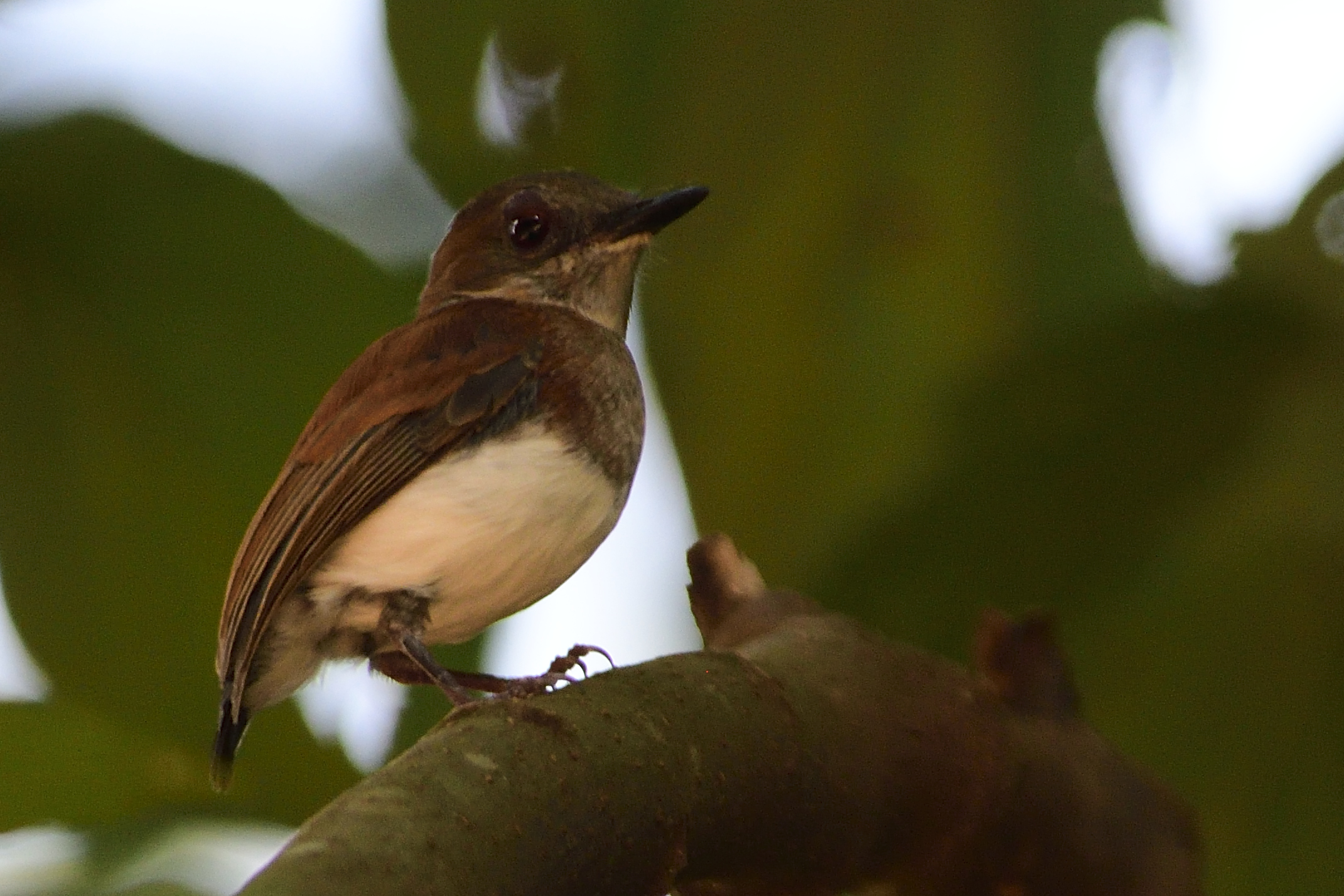
Chestnut Wattle-eye, Platysteira castanea
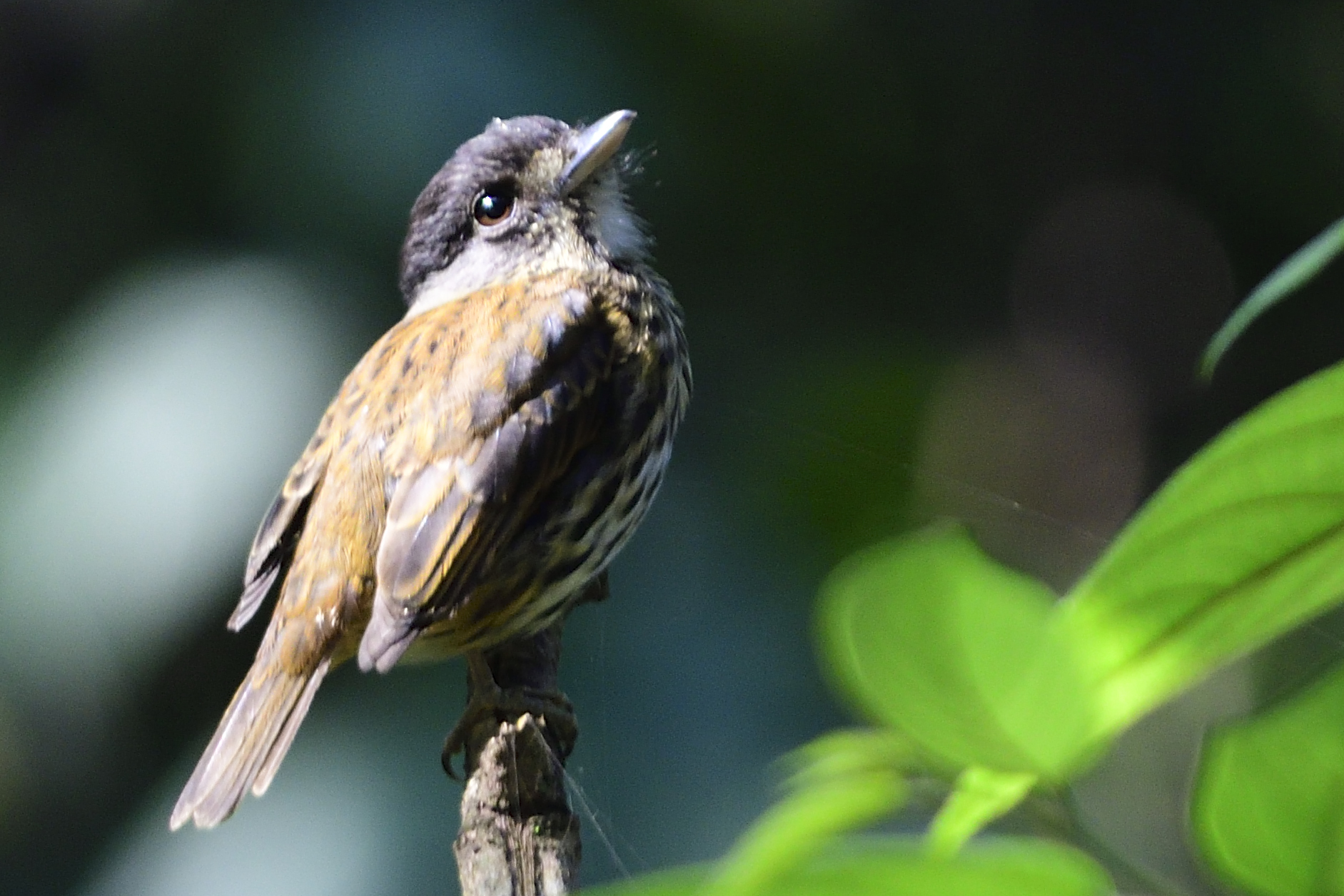
African Broadbill, Smithornis capensis
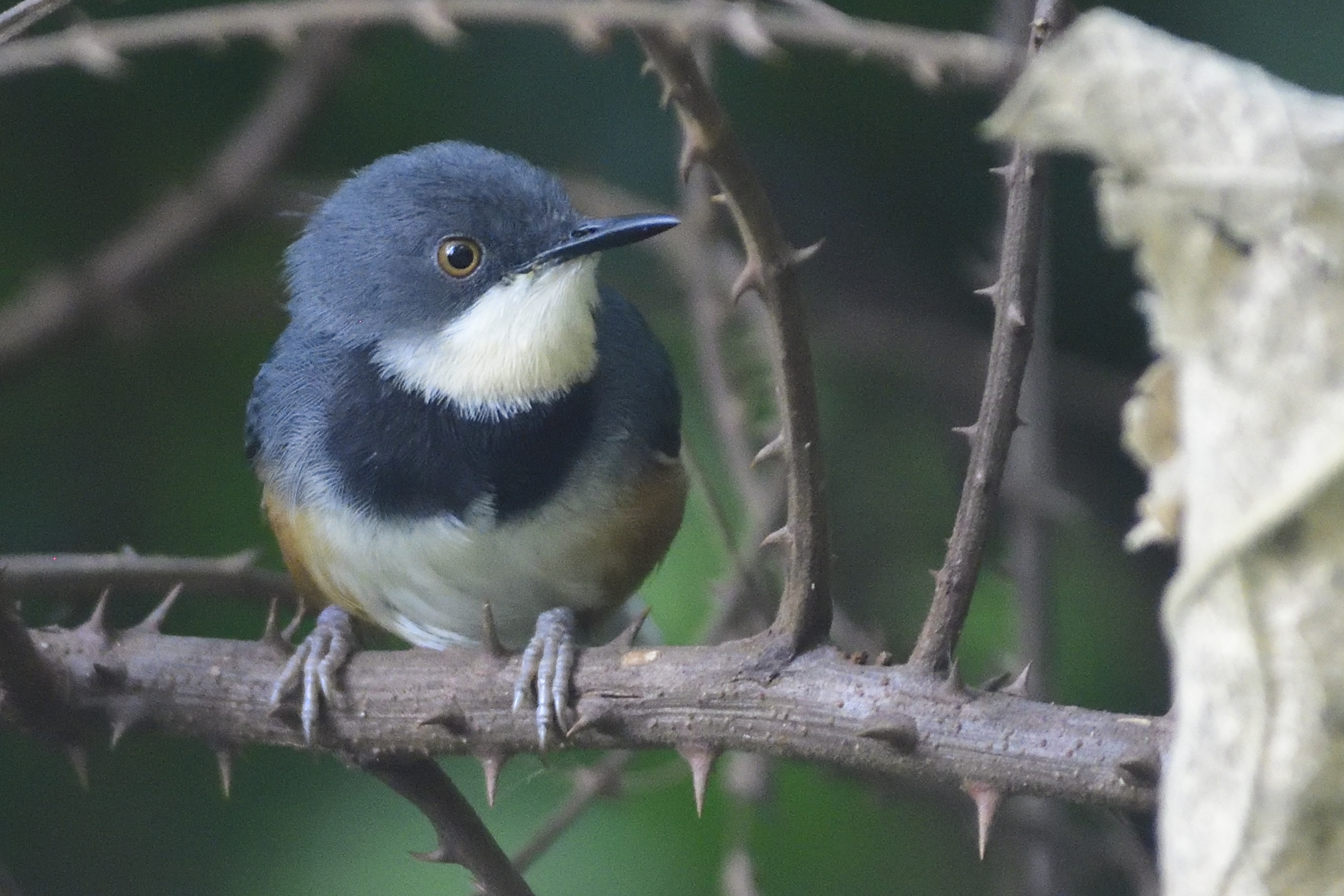
Black-collared Apalis, Oreolais pulchra
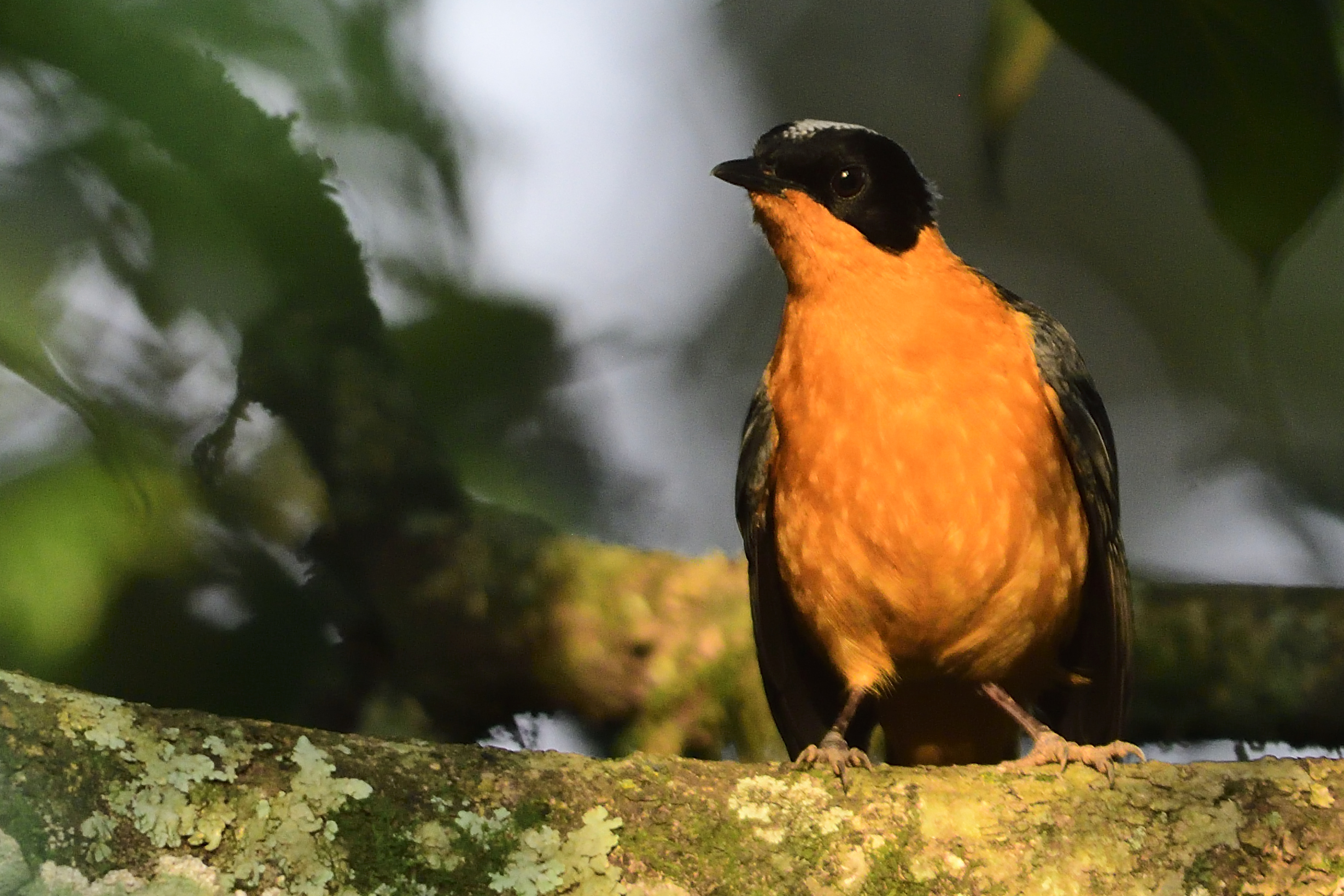
Snowy-crowned Robin-Chat, Cossypha niveicapilla
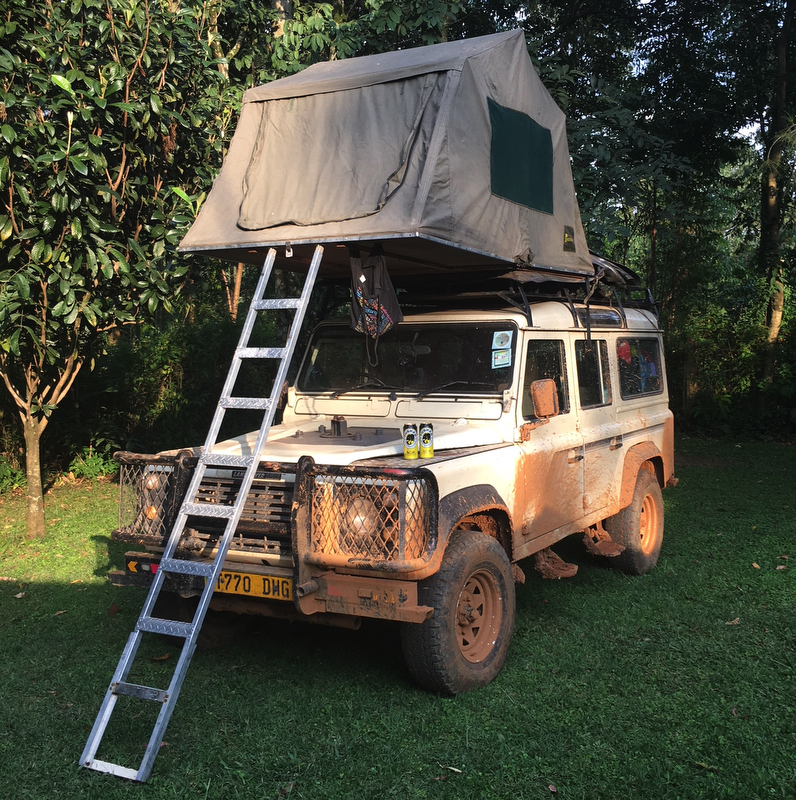
Our Camp in Kakamega Forest.
Day 15, Friday 20 July – Kakamega Forest
We had another full day in Kakamega Forest. Our main target today was the Blue-headed Bee-eater. Winston took us into another forest patch and we searched and searched for a long time. At last Winston heard it and managed to spot a few high up in the canopy. Florence and me managed some record shots, but not any thing more. I was quite disappointed, but such is birding. We ended up in the area of the forest research centre and in a Bottle brush tree, we saw a number of Sunbirds. After careful observation we found a few Green-throated Sunbirds in the tree. We managed decent pictures of the Sunbird and we walked into yet another forest patch, we had fantastic views of a pair of Brown-throated Wattle-eyes. A little further down the path we had fantastic views of 4 Blue-headed Bee-eaters. Wow, we were so happy since we had more or less given up on that bird previously that morning. We continued and saw Toro Olive Greenbul, Little Grey Greenbul and finally I managed some pictures of a Black-faced Rufous Warbler. Just above our head a female Petit´s Bush-Shrike gave us mediocre views. We had now reached a road and started walking slowly back to camp. Turner´s Eremomela was seen high up in the canopy. Lower down we got a Cabanis´s Greenbul. We walked back to camp for lunch. After lunch I was just relaxing outside the tent when a pair of African Blue Flycatchers came by. We got in the car and drove back to the Rondo retreat. We took the normal path through the forest. I finally got to see the Grey-winged Robin-Chat and soon after a Black-faced Prinia. Then we had an extraordinary performance by a White-spotted Flufftail. We continued towards the camp and took a little side road. Here we had some nice birds: Bocage Bush-Shrike, Lühder´s Bush-Shrike, Buff-throated Apalis, Black-billed Weaver and White-chinned Prinia. We drove back to camp and had a walk in the area there, but nothing new surfaced. Again a fantastic day. I added 7 lifers on that day and was now up to 36 Lifers after 3 days in Kakamega Forest.
Here are some of the birds we saw on day 15:
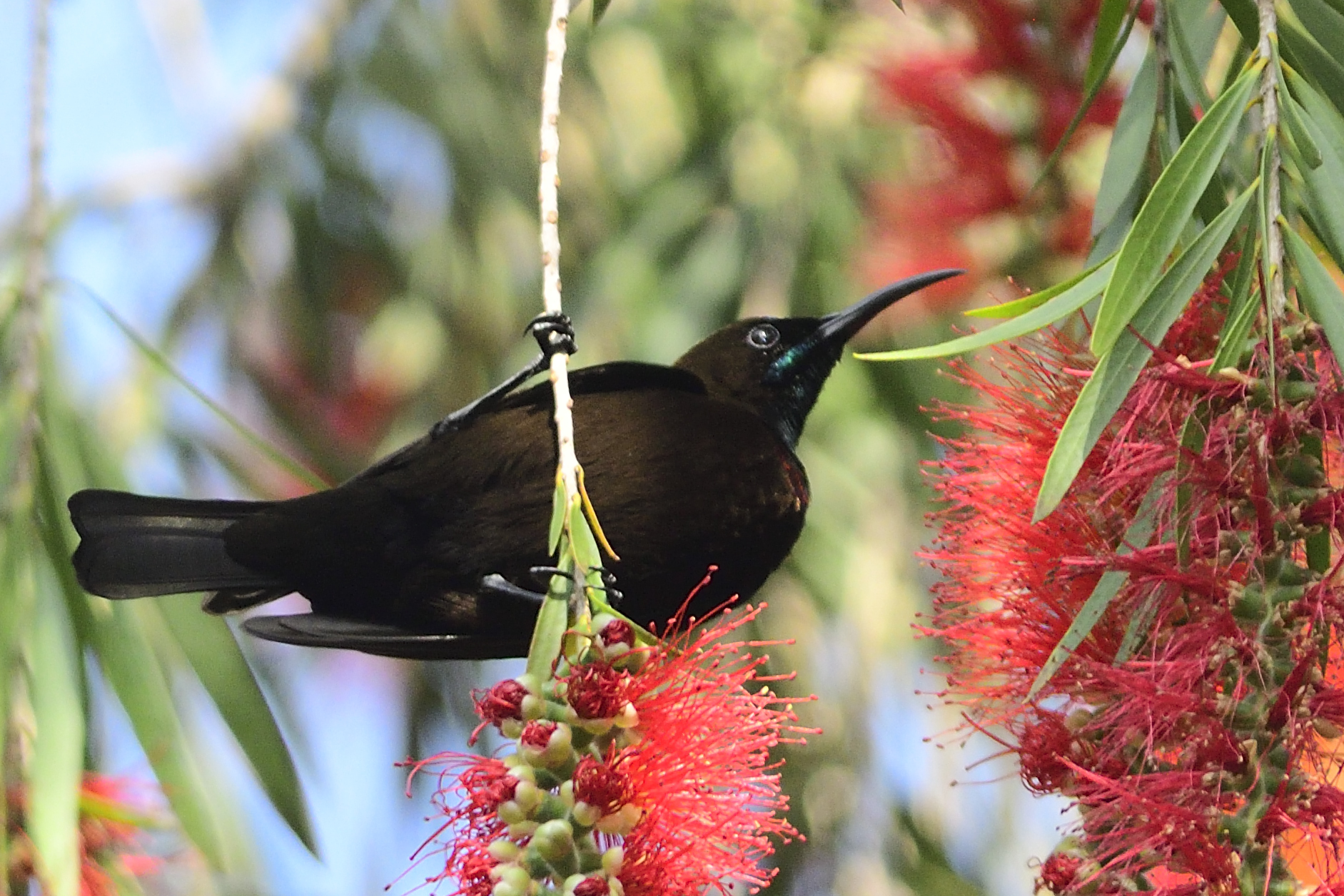
Green-throated Sunbird, Chalcomitra rubescens
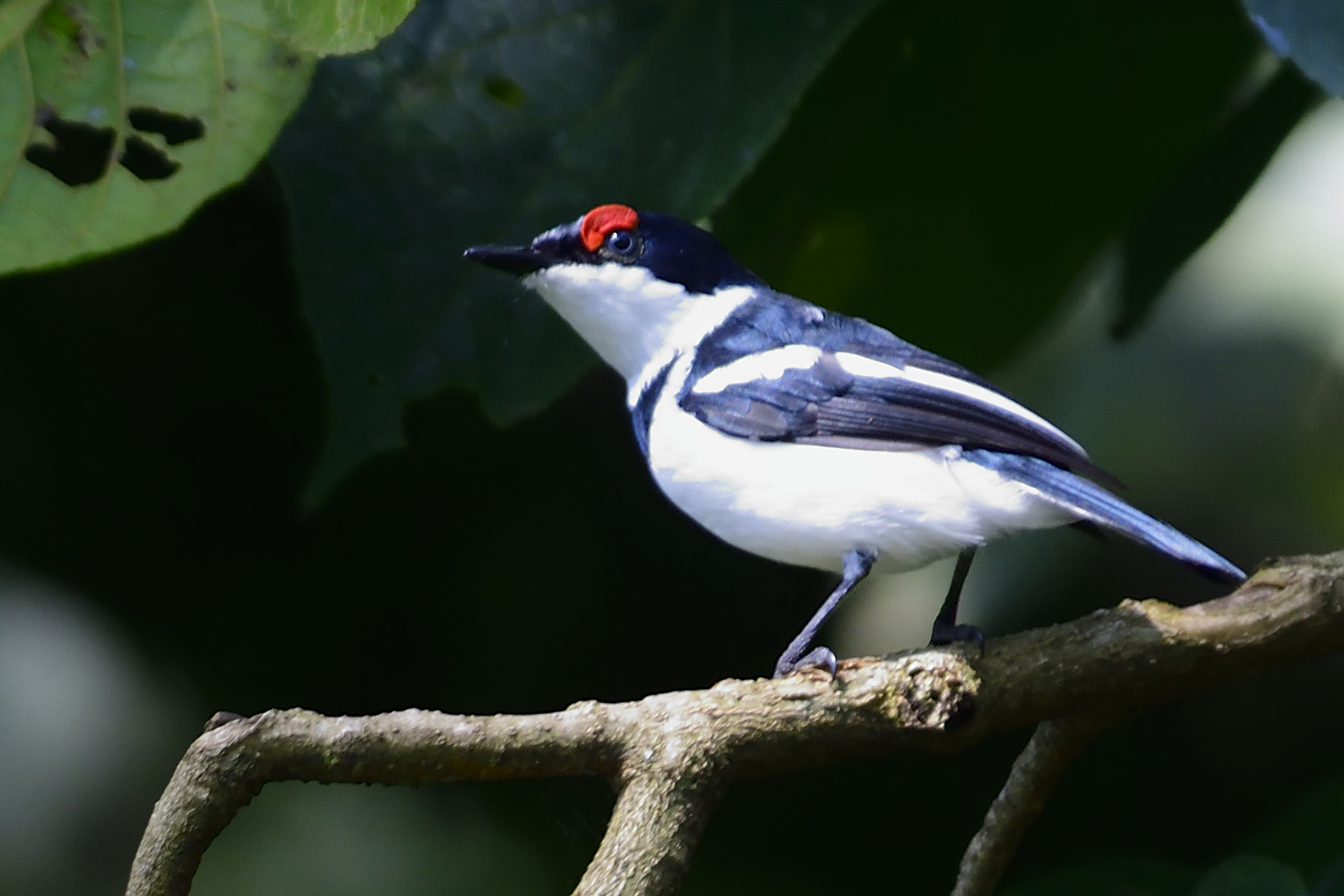
Brown-throated Wattle-eye, Platysteira cyanea
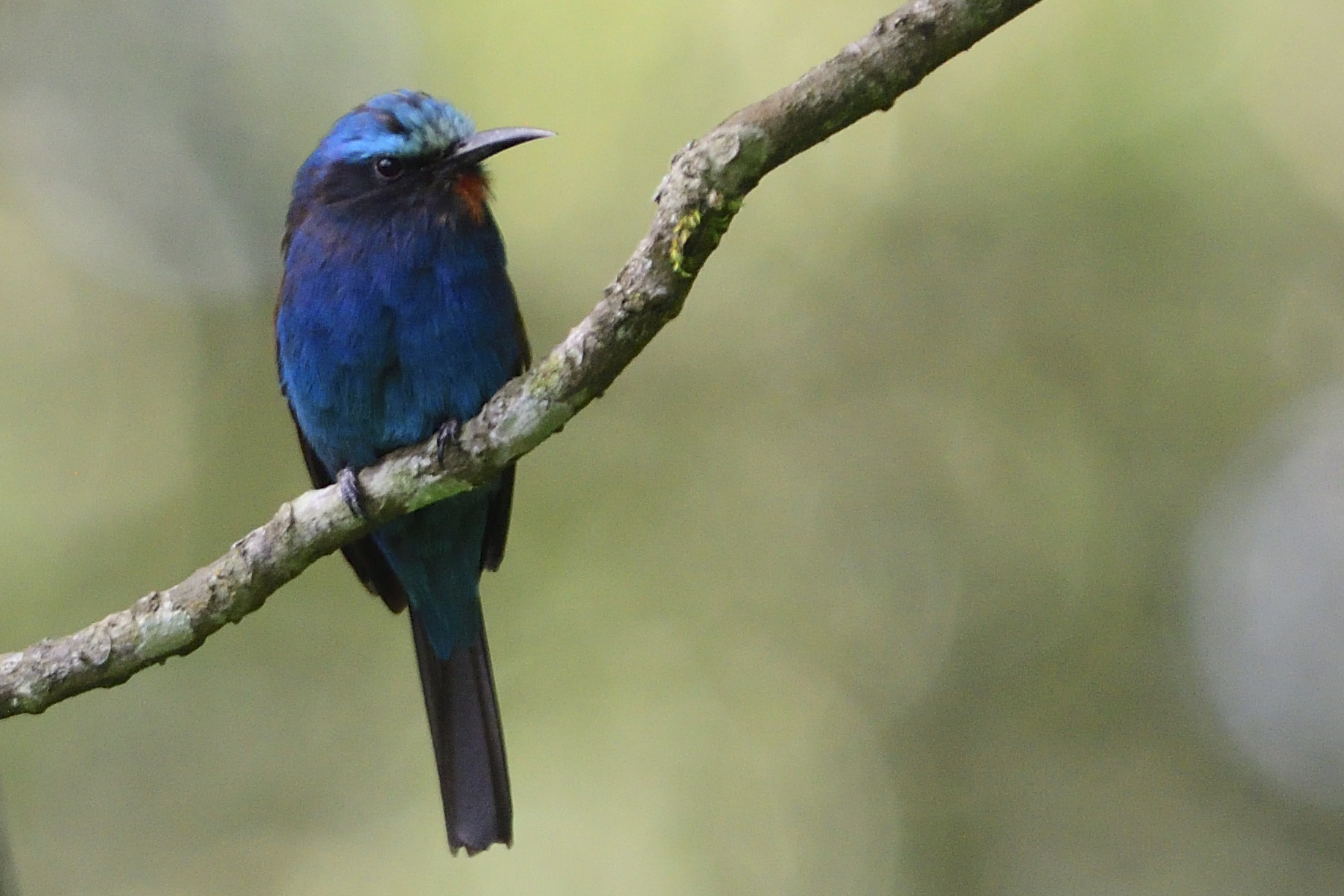
Blue-headed Bee-eater, Merops muelleri
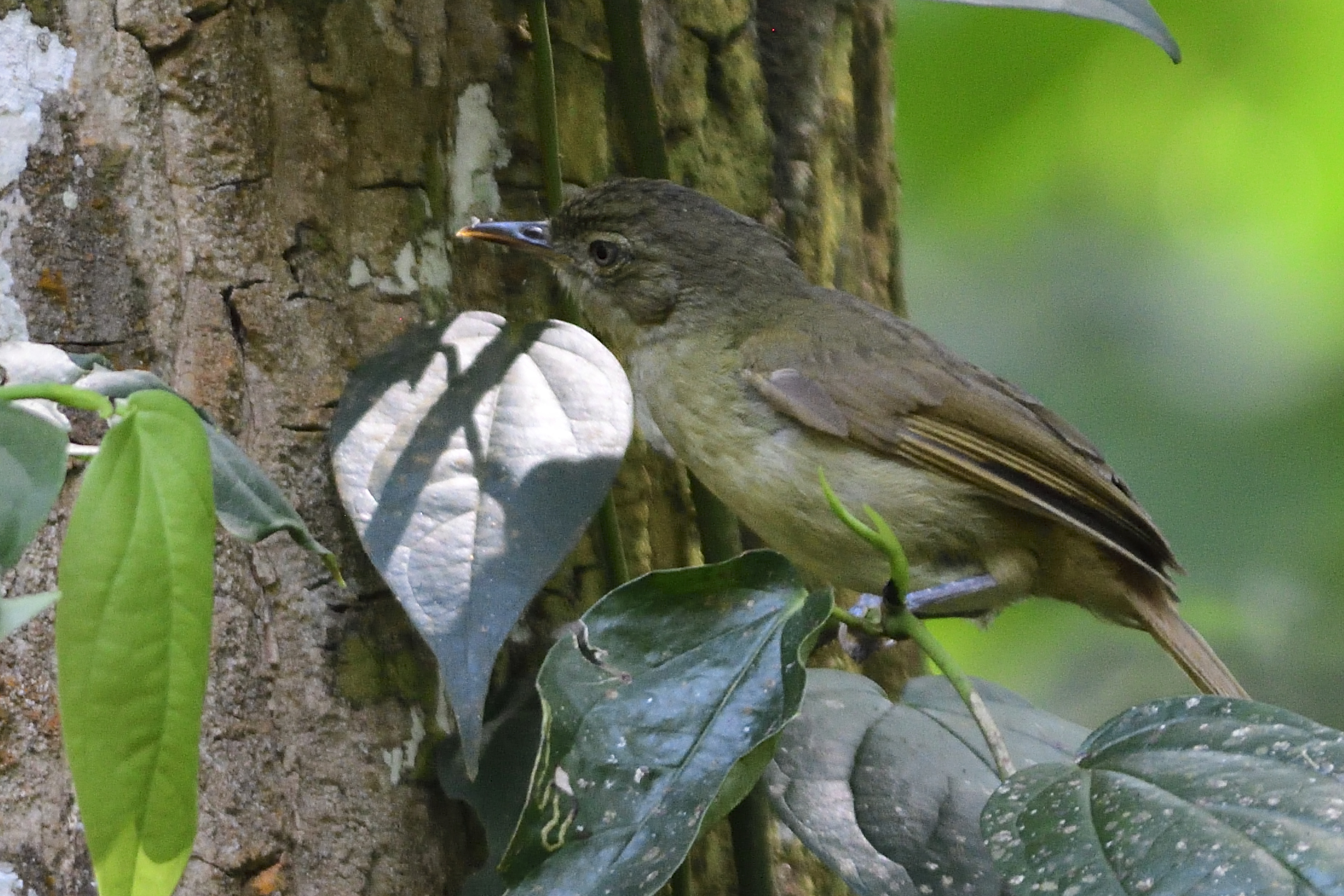
Cabanis´s Greenbul, Phyllastrephus cabanisi
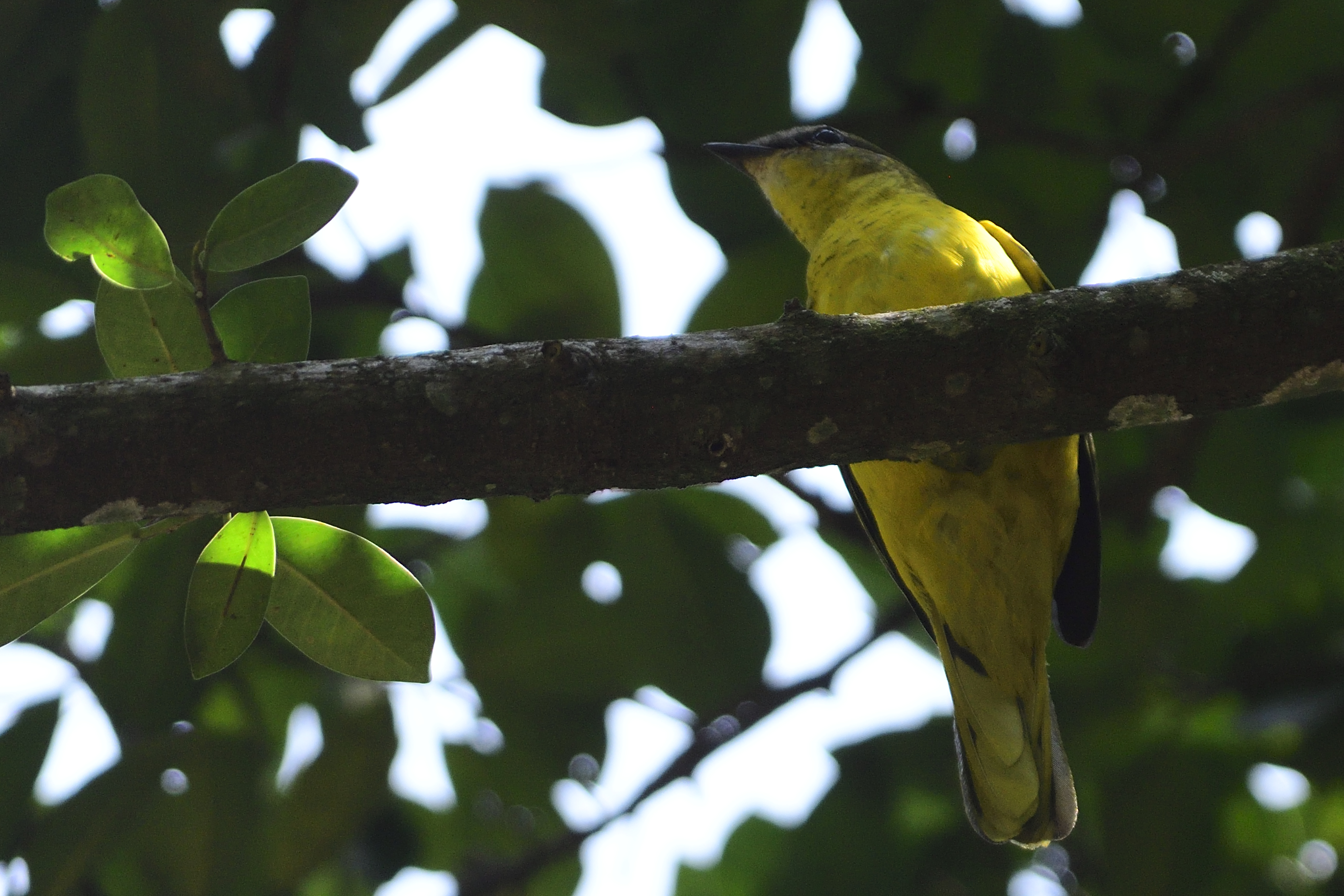
Petit´s Cuckooshrike, Campephaga petiti
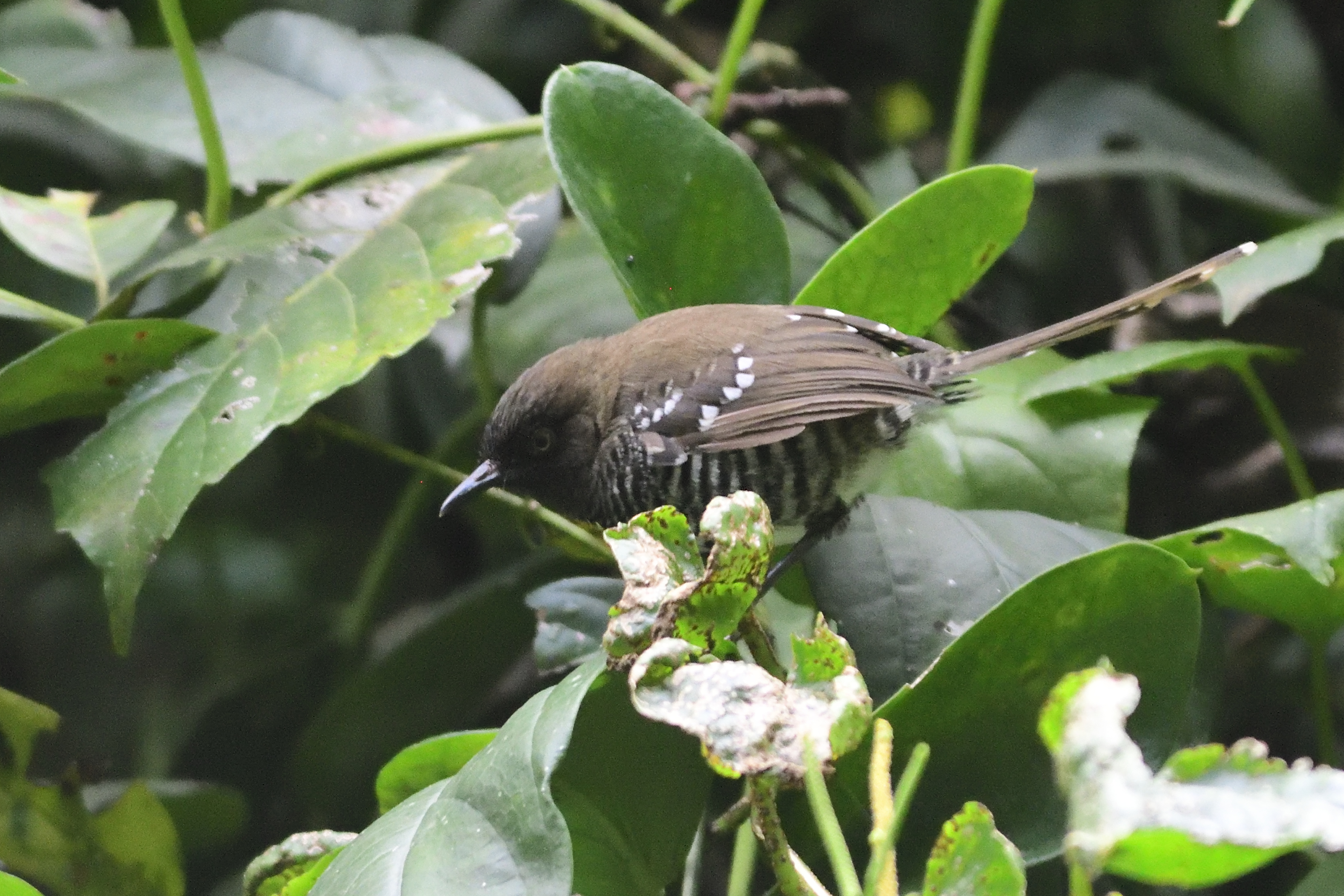
Black-faced Prinia, Prinia melanops
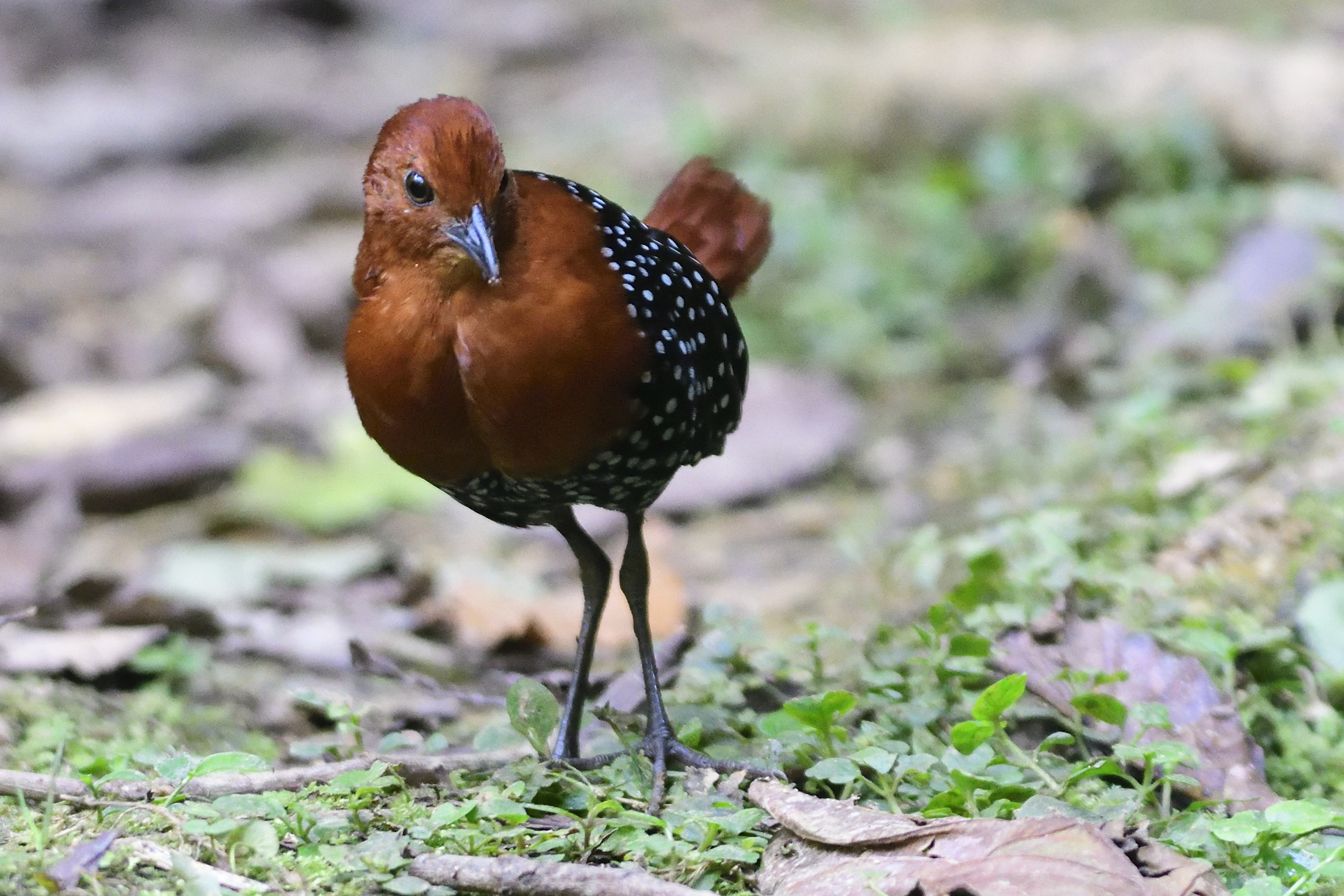
White-spotted Flufftail, Sarothrura pulchra

Lühder´s Bush-Shrike, Laniarius leuhderi
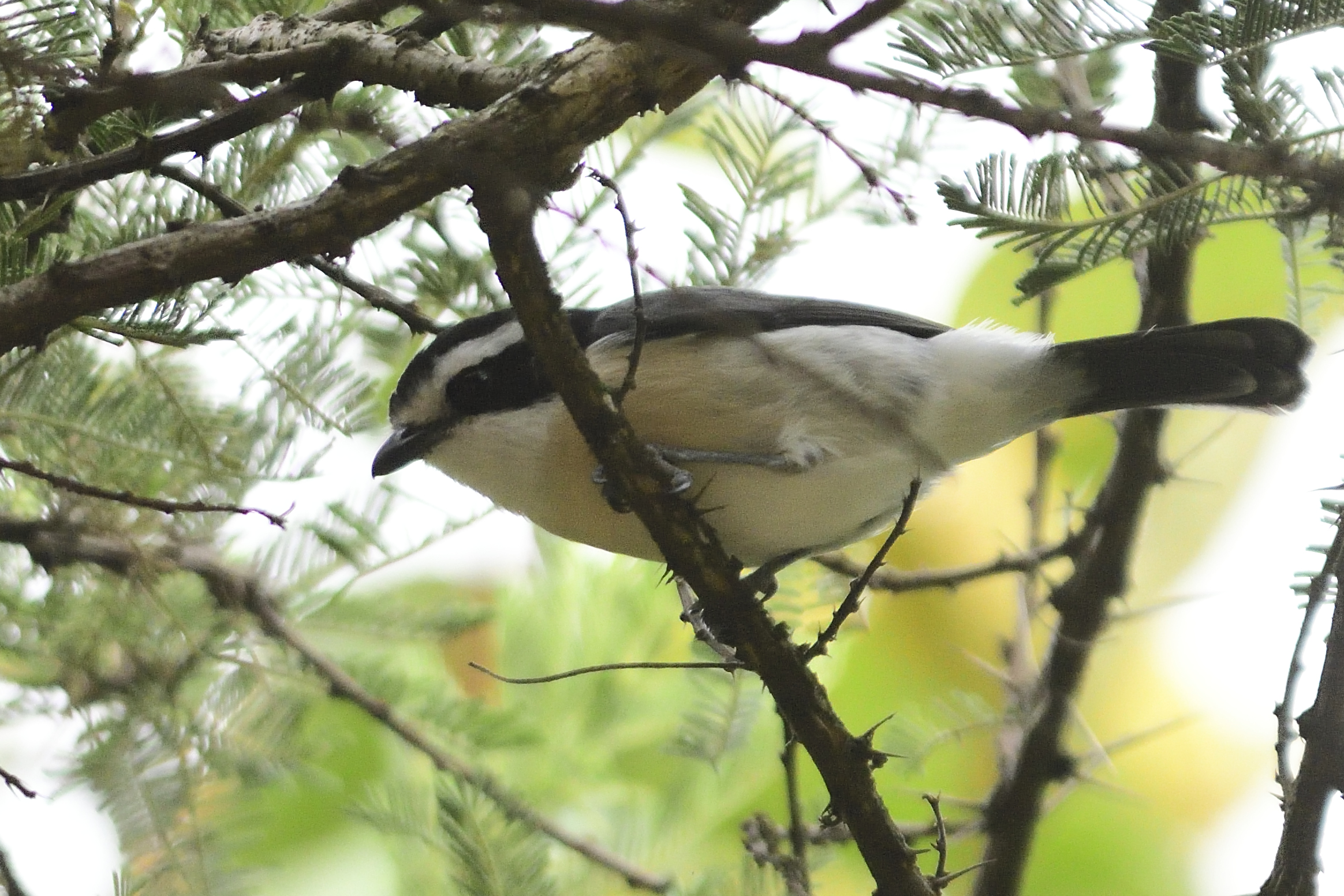
Bocage´s Bush-Shrike, Chlorophoneus bocagei
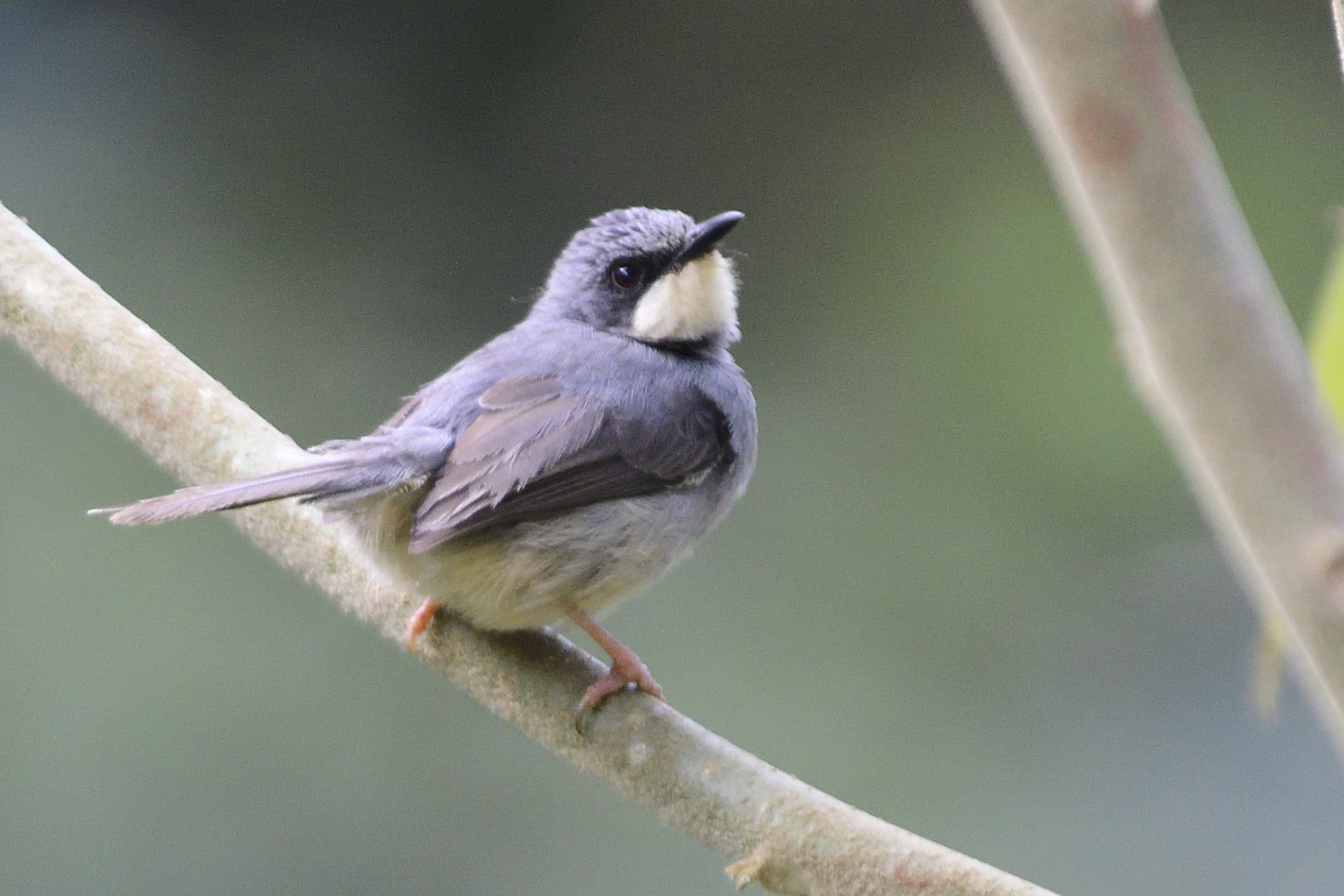
White-chinned Prinia, Schistolais leucopogon
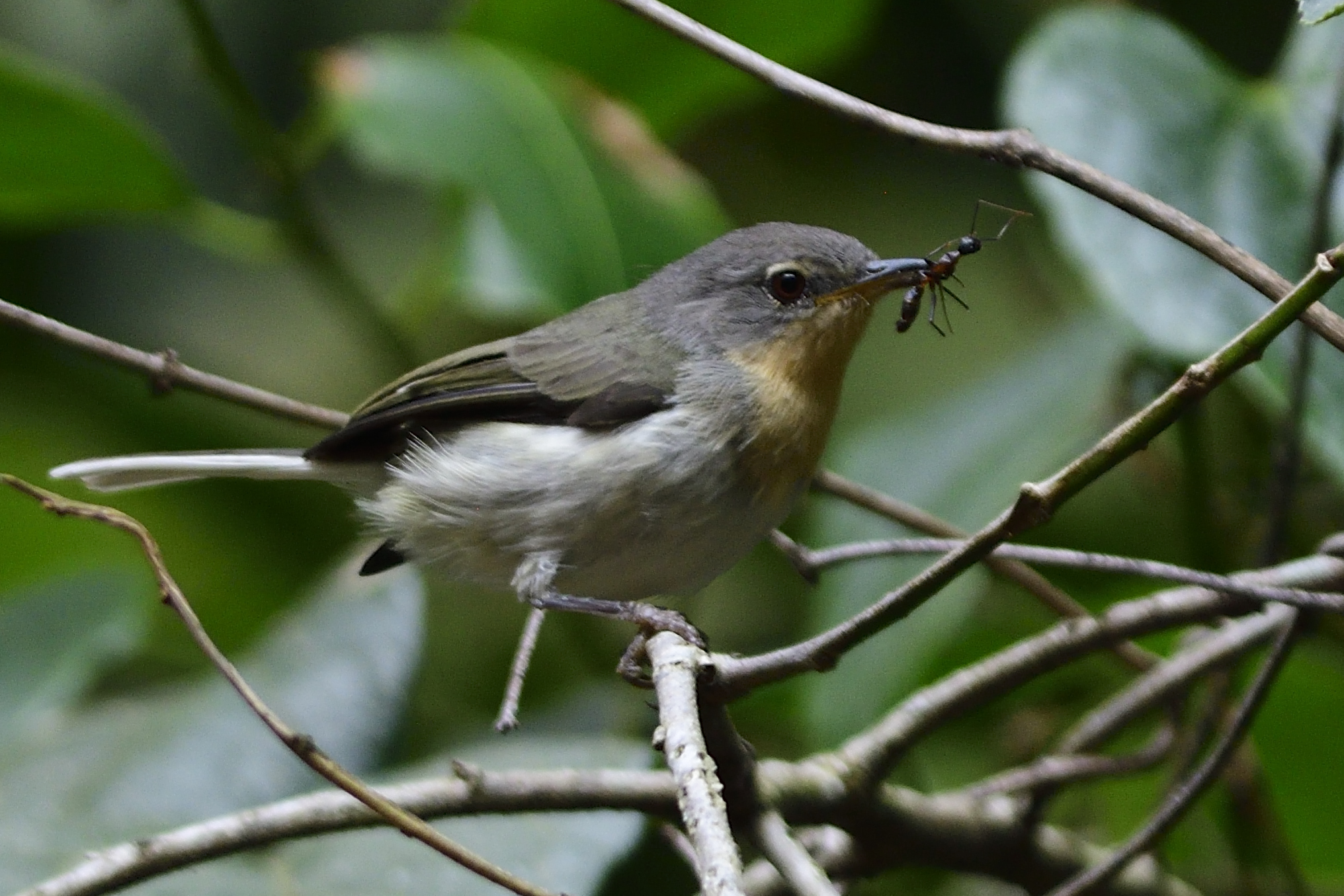
Buff-throated Apalis, Apalis rufogularis
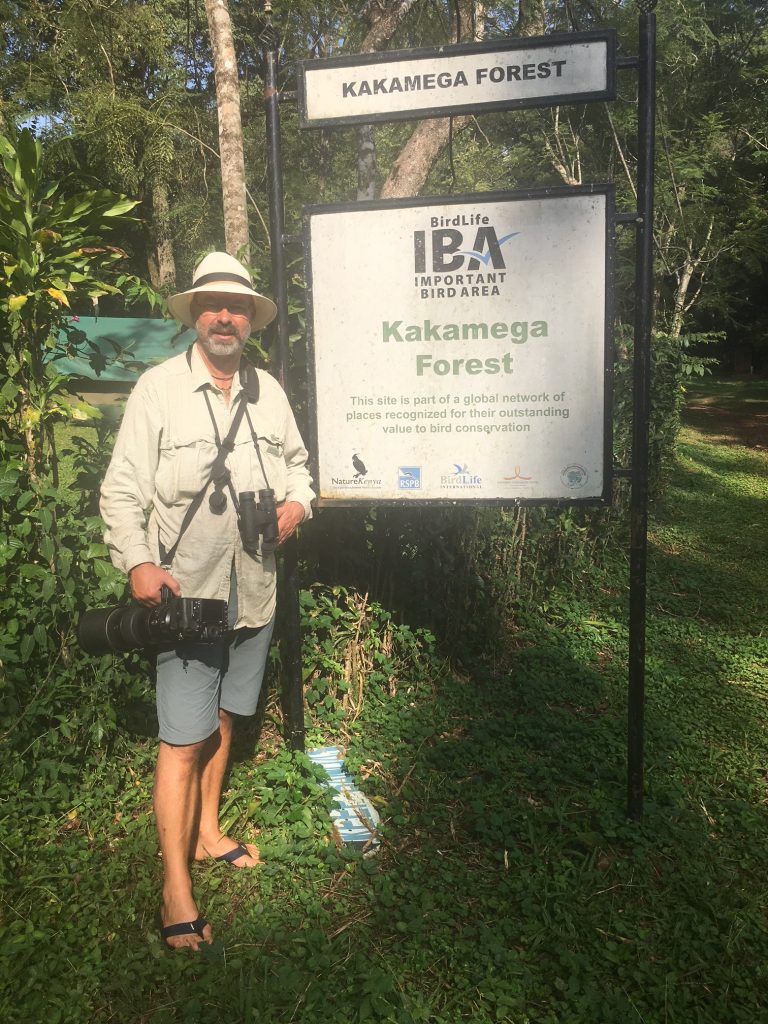
Enjoying birding in Kakamega Forest a birders paradise
Day 16, Saturday July 21 – Kakamega Forest – Kisumo
This was our last morning in Kakamega forest. We had only Winston for 2 days, so we were alone with Francis again. We decided to start at the path where the stream were. We had been there twice already, but still thought the area had more to offer. Florence decided on a very slow-phased birding. She is an expert of waiting the birds out and today it really paid out for her. Whilst Francis and I were chasing new species, she took it very slowly and racked up amazing picture of Red-tailed Bristlebull, Plain Greenbul, Red-headed Bluebill and Northern Yellow White-eye. Francis and I managed to locate a Turner´s Eremomela and I finally got a decent shot of a Black-faced Rufous Warbler. The forest was really quiet this day and since Florence dipped on the Black-billed Weaver the day before, we decided to see if we could find it for her. Sure enough, the bird was still hanging out in the same area. Sadly, we had to leave Kakamega now, but with one more lifer today, the total tally was up to 37
Here´s some pictures from the morning birding in Kakamega forest on day 16
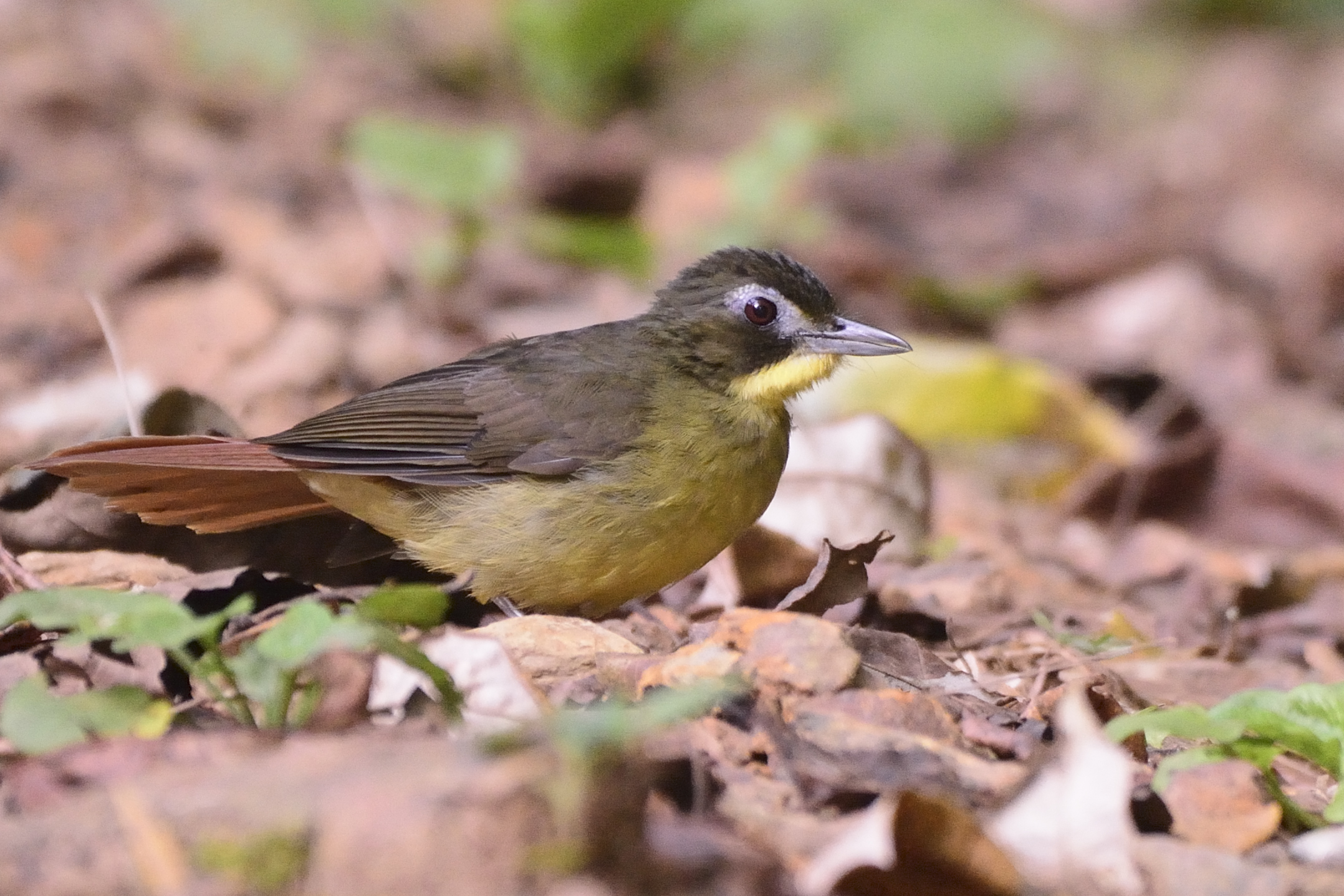
Red-tailed Bristle-bill, Bleda syndactylus – Picture by Florence
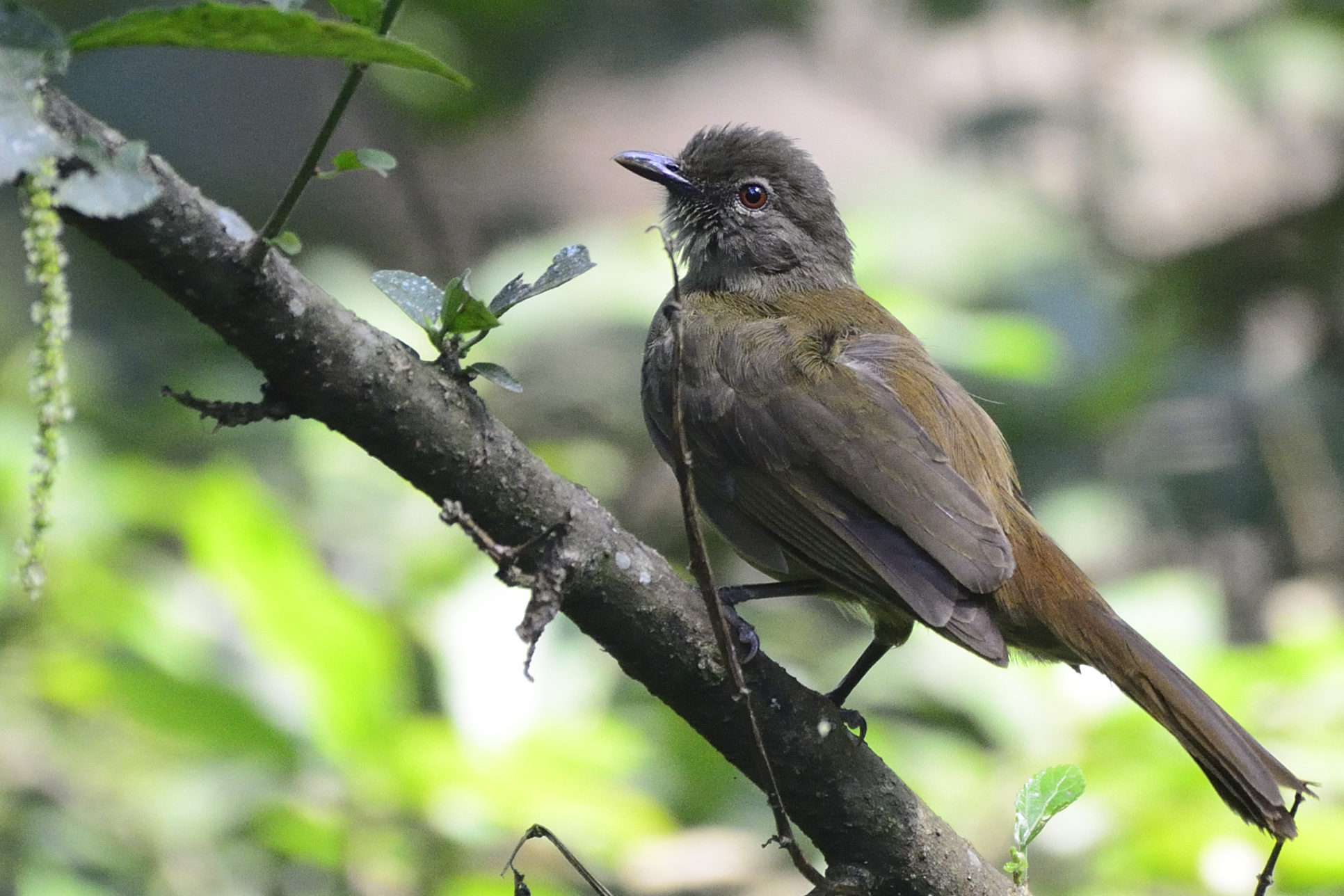
Plain (Cameron Sombre) Greenbul – Eurillas curviostris – Picture by Florence
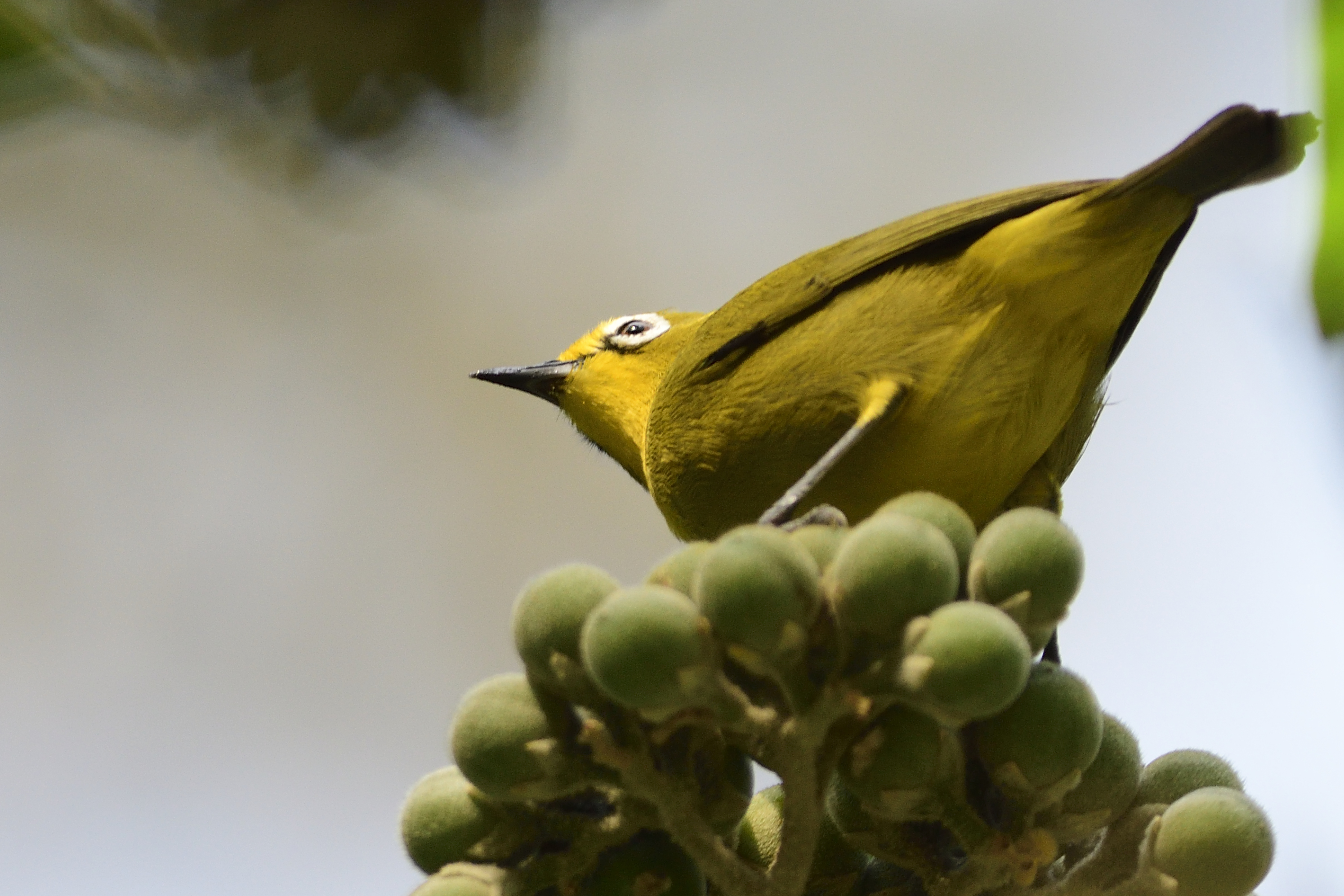
Northern Yellow White-eye, Zosterops senegalensis
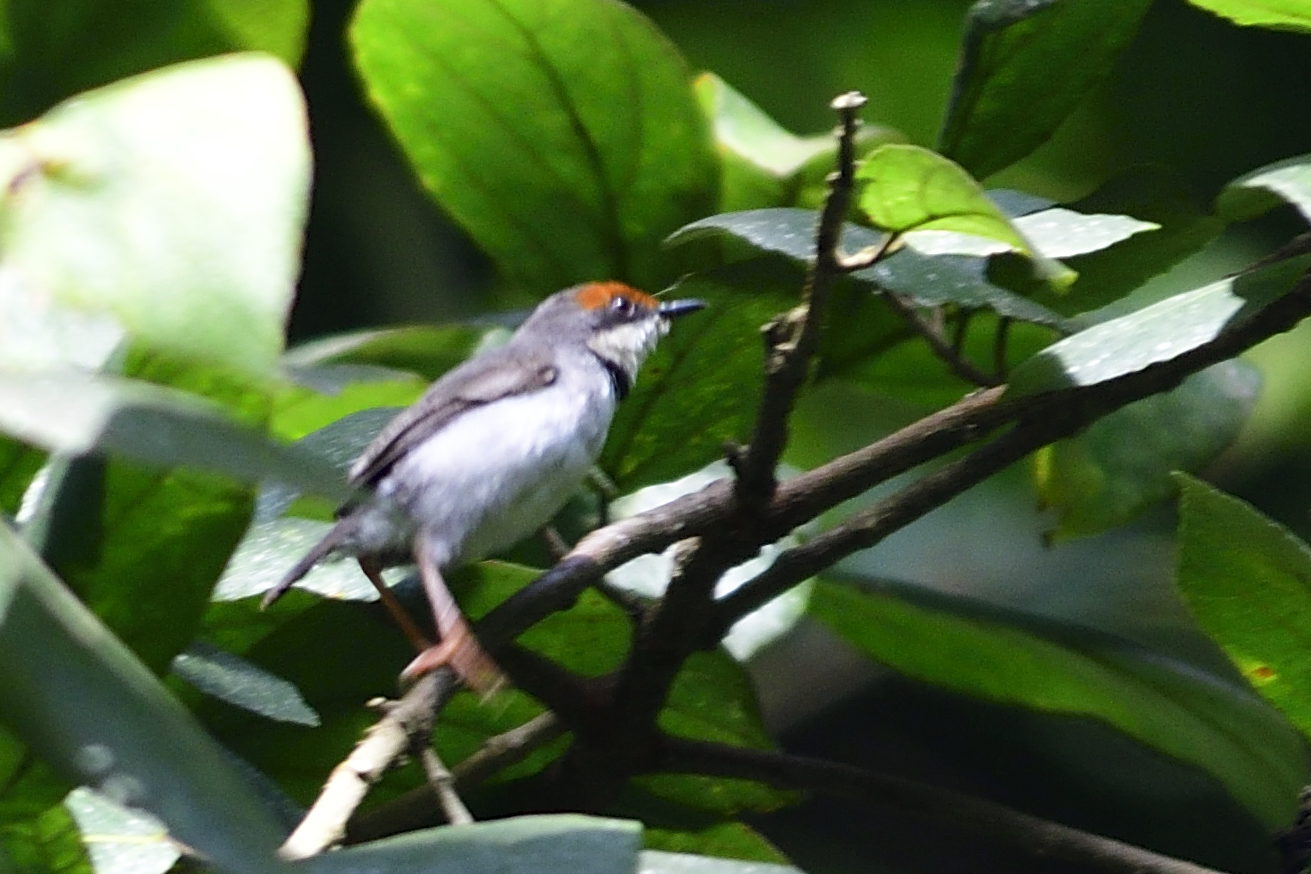
Turner´s Eremomela, Eremomela turneri – A highly localised eremomela known only from small forest areasds in SW Kenya and E DRC
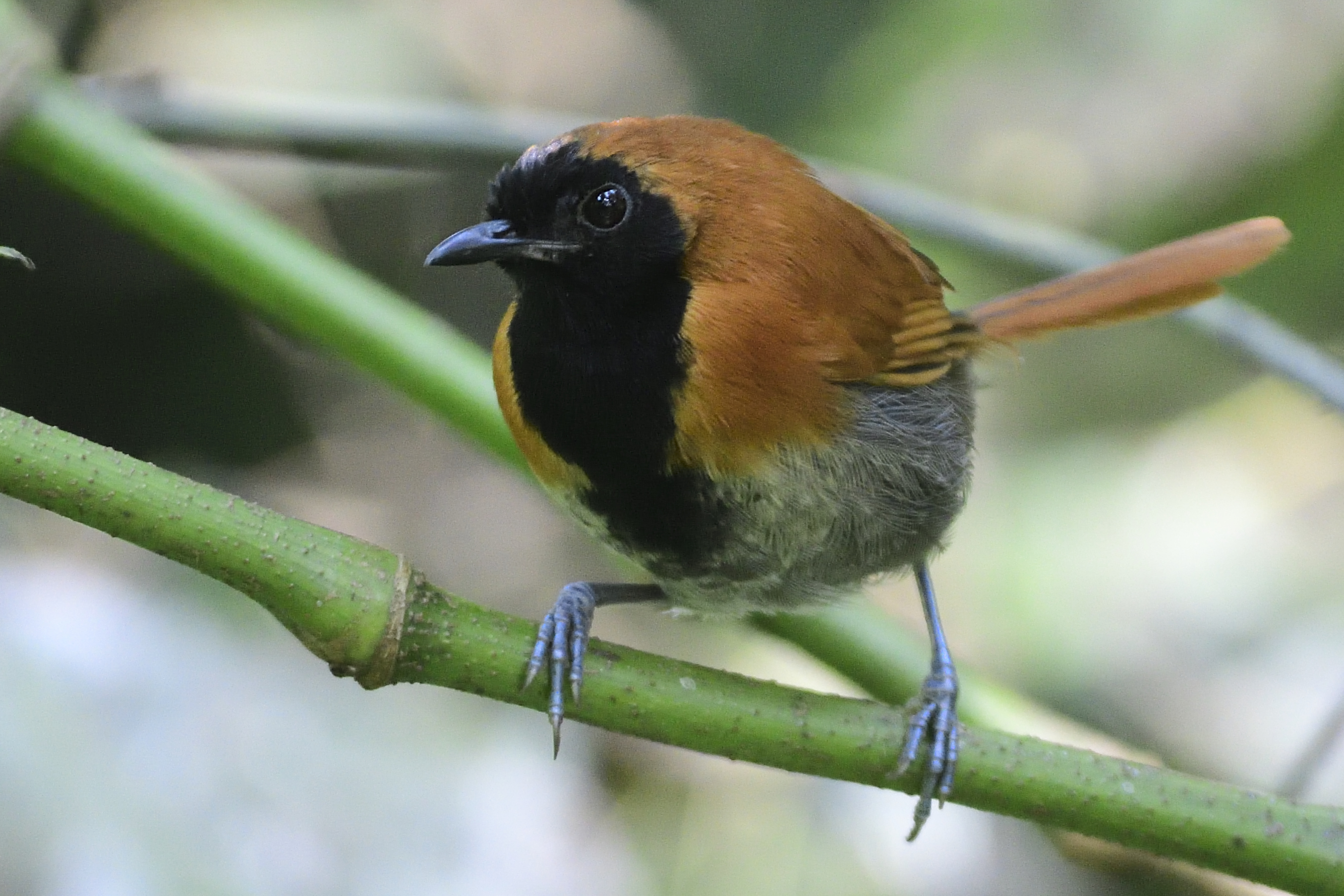
Black-faced Rufous Warbler, Bathmocercus rufus
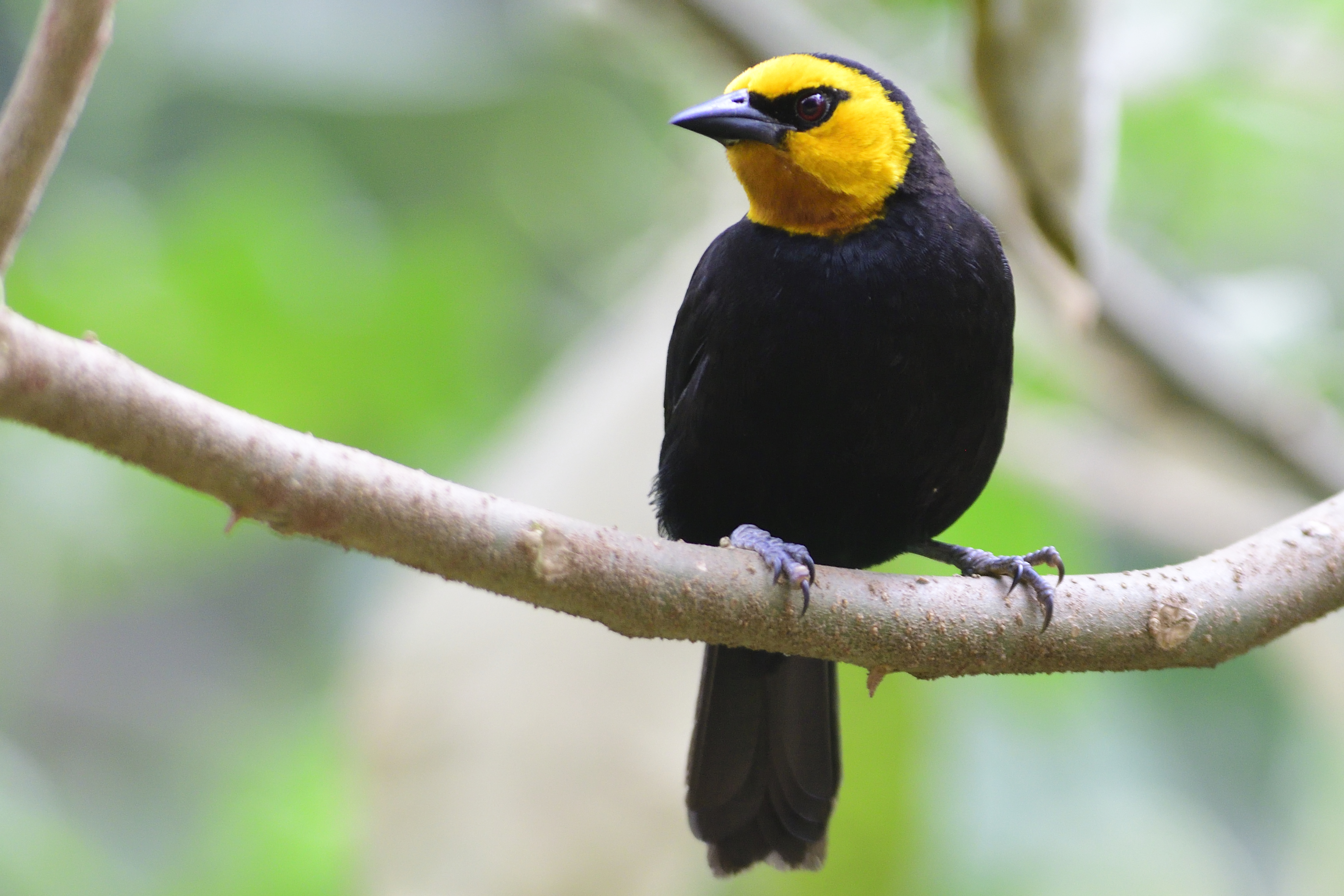
Black-billed Weaver, Ploceus melanogaster
Day 16 (continued)
It was a short drive to Kisumo from Kakamega Forest, we stopped on the way for lunch at a local village. Arriving in Kisumo, we stocked up on some groceries and was soon on our way. We stopped at the Hippo point to meet our boat driver and guide. Whilst standing there, we heard a Greater Swamp Warbler calling and with a little enticing, we managed to get a picture of him. At the Hippo Point, we also picked up African Thrush, Northern Brown-throated Weaver and Yellow-throated Leaflove. Dave and Bugs had stayed there the night before and had recommended Dunga Hill camp for us. We found the camp site easy enough, but due to it being a Saturday, it was totally packed with local people celebrating, We sat up camp and went for a little stroll to see if we could find some birds in the reed beds. We saw Red-chested Sunbird, Spur-winged Lapwing, Eastern Grey Plantain-Eater, Black-headed Gonolek and Angolan Swallow. We had booked a boat ride on Lake Victoria early the morning after. Our targets were: Carruther´s Cisticola, Papyrus Canary, March Tchagra, Papyrus Yellow Warbler and White-winged Warbler. So 5 targets, since we had already seen Papyrus Gonolek on an earlier trip to NW Tanzania. We had dinner at the camp site and went to bed quite early despite the booming music from the party of the locals.
Some pictures from the afternoon of day 16:
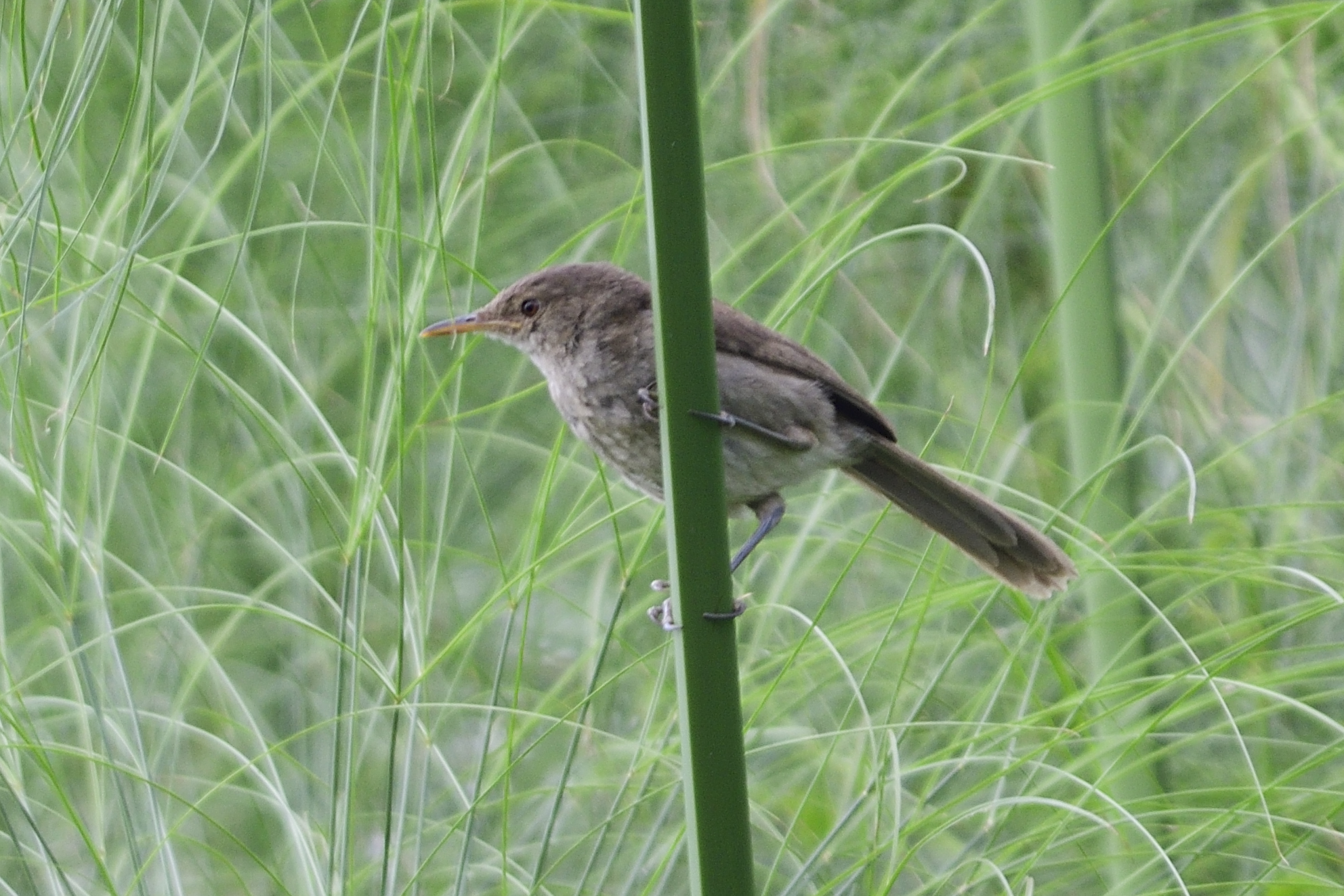
Greater Swamp Warbler, Acrocephalus rufescens
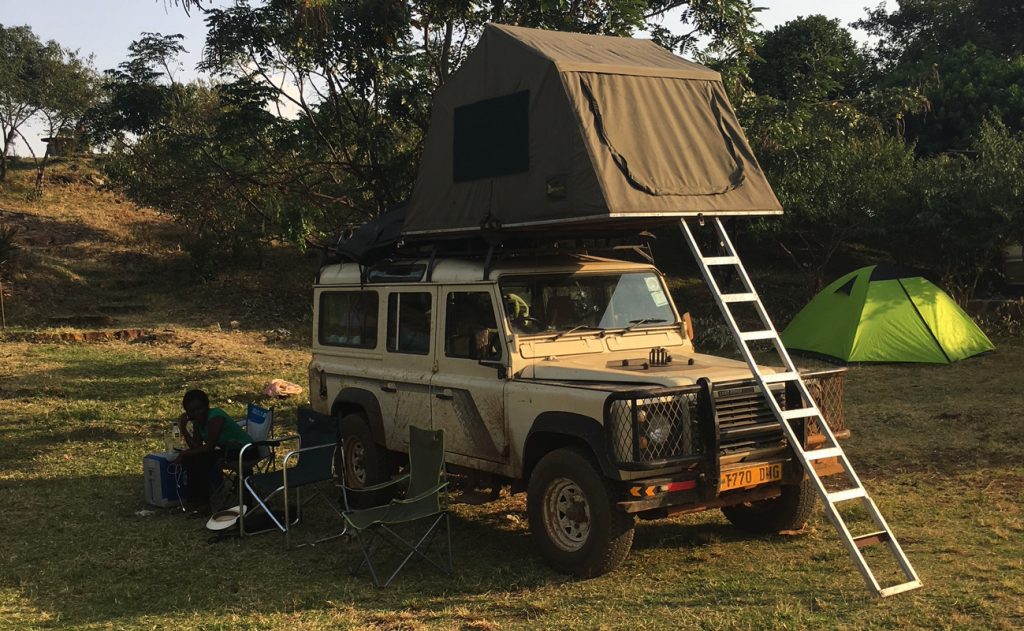
Camp at Dunga Hill Campsite, Kisumu
Day 17, Sunday, July 22, Kisumu
The boat picked us up and we were very exited. We had such good birding on the entire trip, so we were certain to add the last 5 lifers to our list. The boat driver was also certain we would score good. Our first stop was to try for the Carruther´s Cisticola. We called it and it responded and we got pictures. We were sure to have it in box, but getting some fundis to look at the pictures later, they told us, it was a Winding Cisticola and not a Carruther´s :-(. We had the same thing happen to us the year before in Musoma, Tanzania, so very disappointed sitting in Norway with picture of the wrong bird. We saw Swamp Flycatcher, Northern Brown-throated Weaver, Little Bittern, Gull-billed Tern, Slender-billed Weaver and Black-headed Weaver. We heard the White-winged Warbler calling many times, but could not get it out. Not even a glimpse. Of the other targets, we saw or heard nothing. Florence did get a nice picture of an African Fish-Eagle. I was very disappointed when we came back to camp and decided to try an afternoon trip with the boat as well.
We relaxed in camp, had lunch and were soon ready for the afternoon boat ride. If we saw little in the morning, we saw even less in the afternoon. We did not even take a single picutre any of us. I was not a happy camper when we returned to the camp.
Some pictures from day 17:
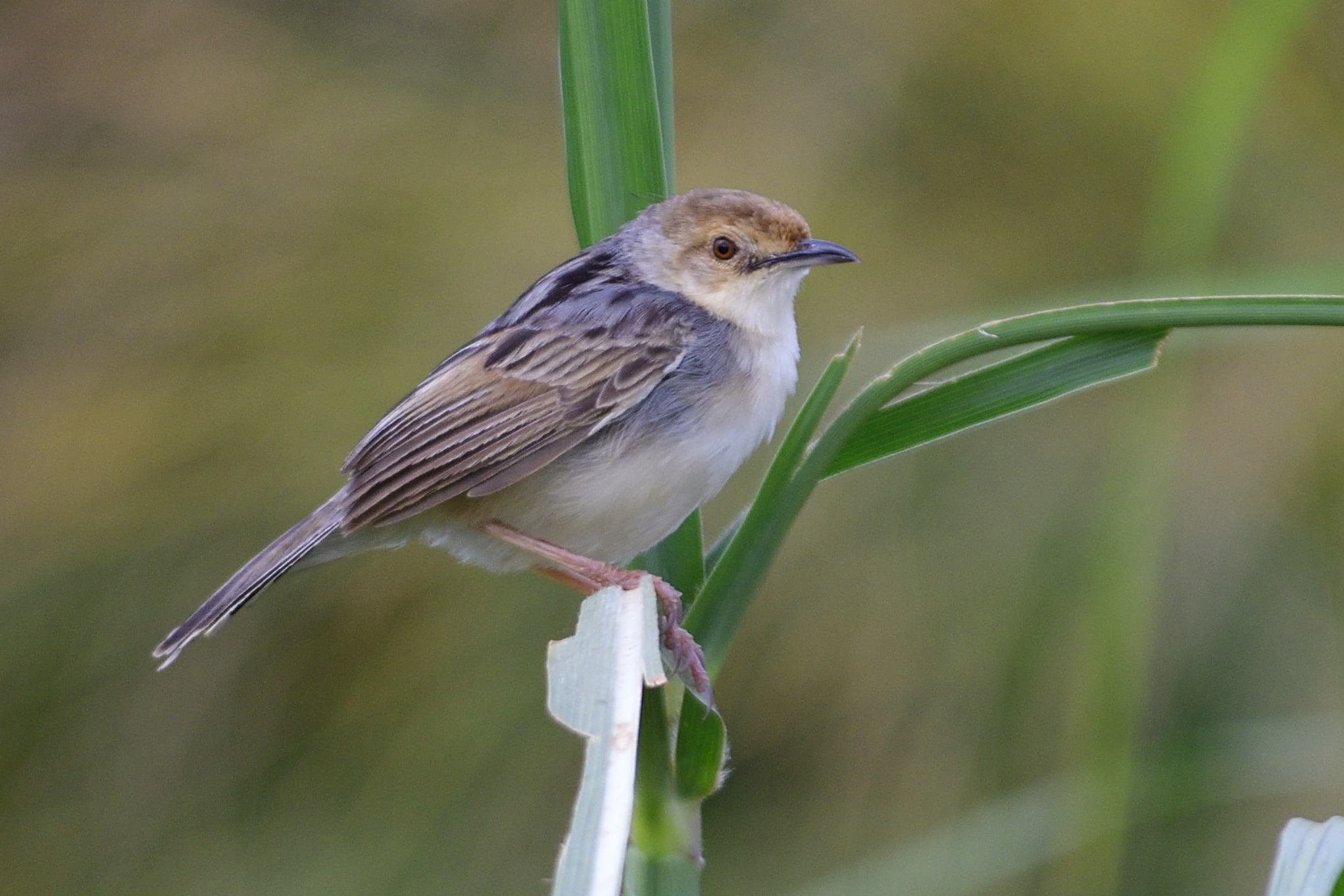
Winding Cisticola, Cisticola marginatus – Can someone turn this into a Carruther´s please? 🙂
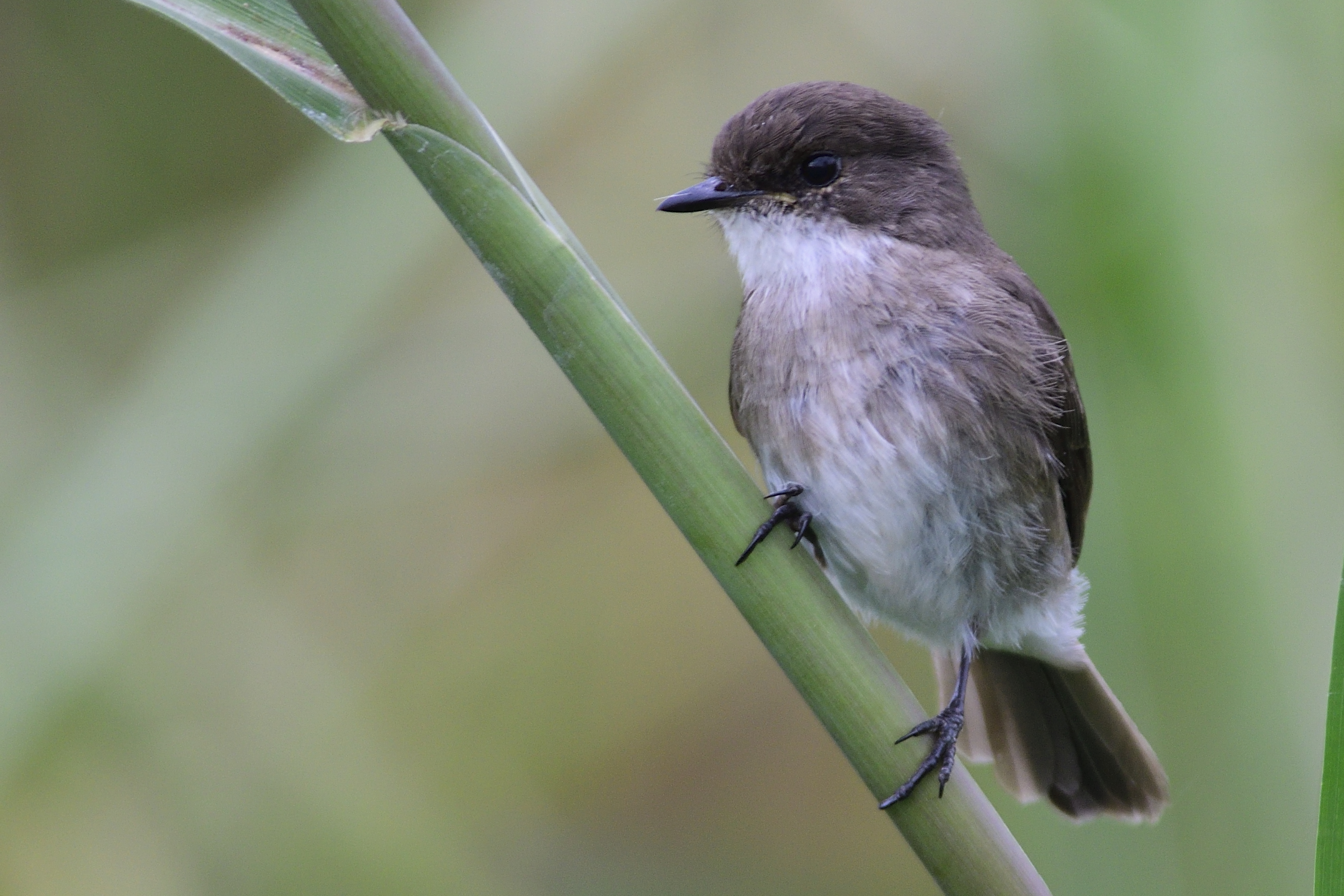
Swamp Flycatcher, Muscicapa caerulescens
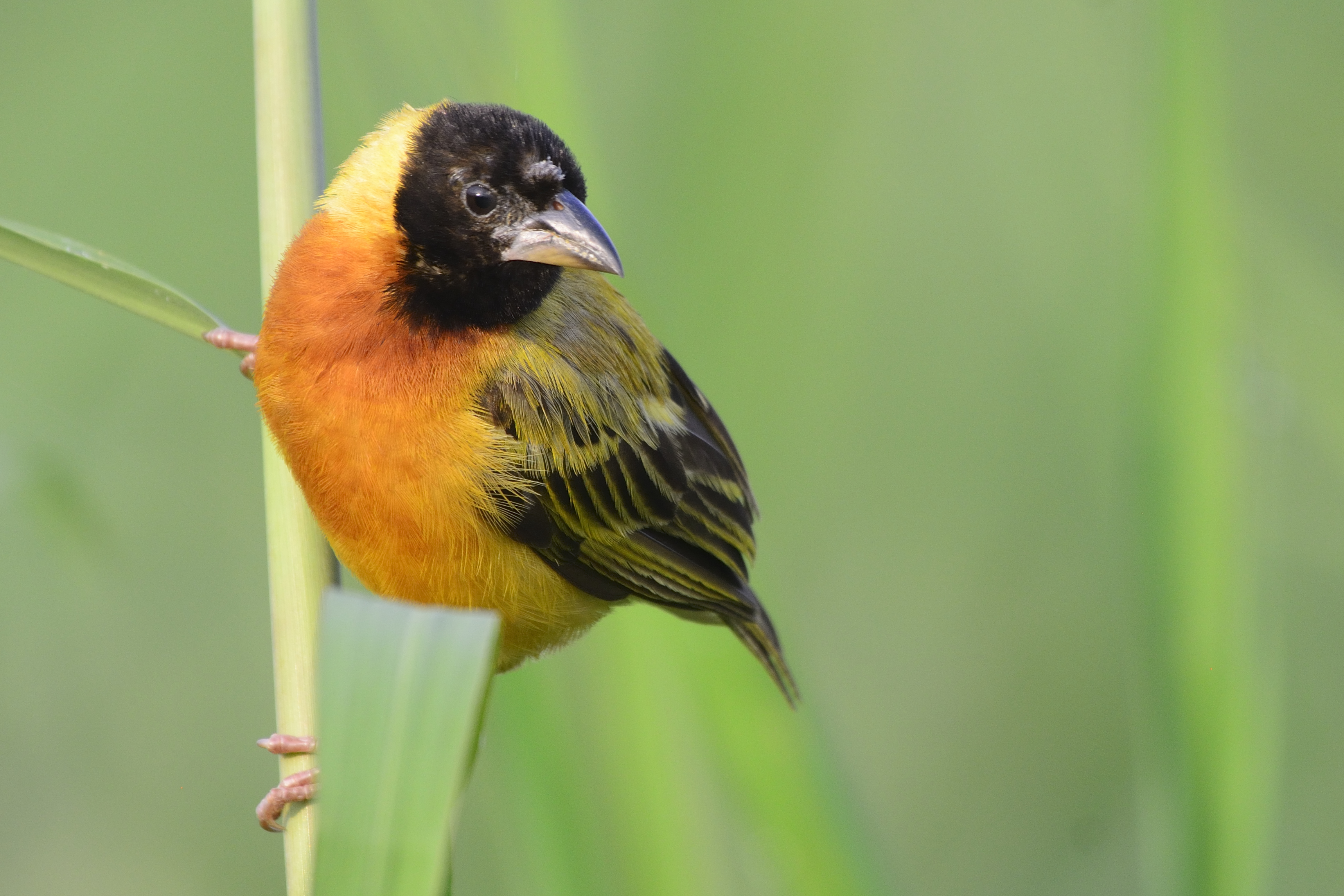
Black-headed Weaver, Ploceus melanocephalus – Picture by Florence
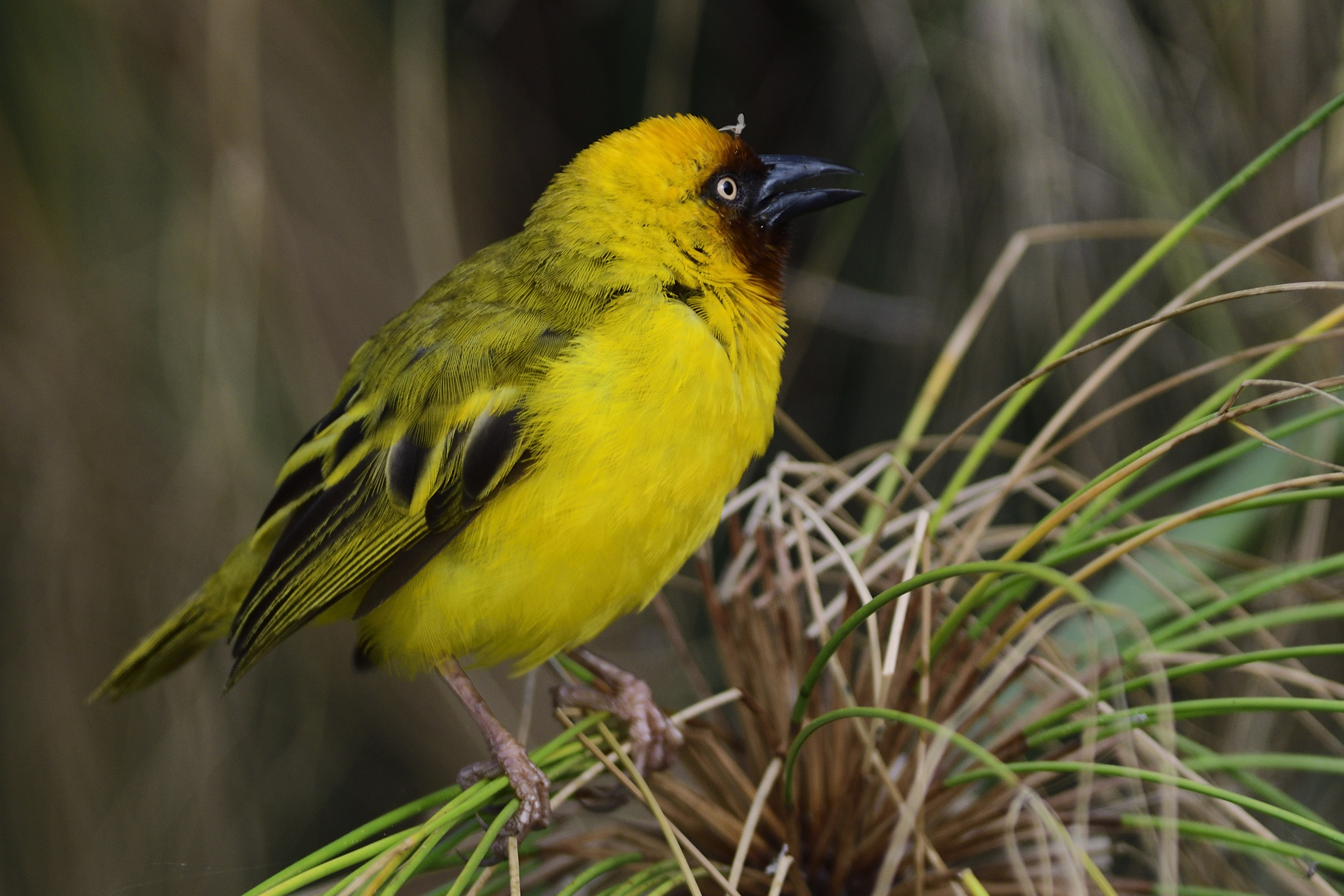
Northern Brown-throated Weaver, Ploceus castanops
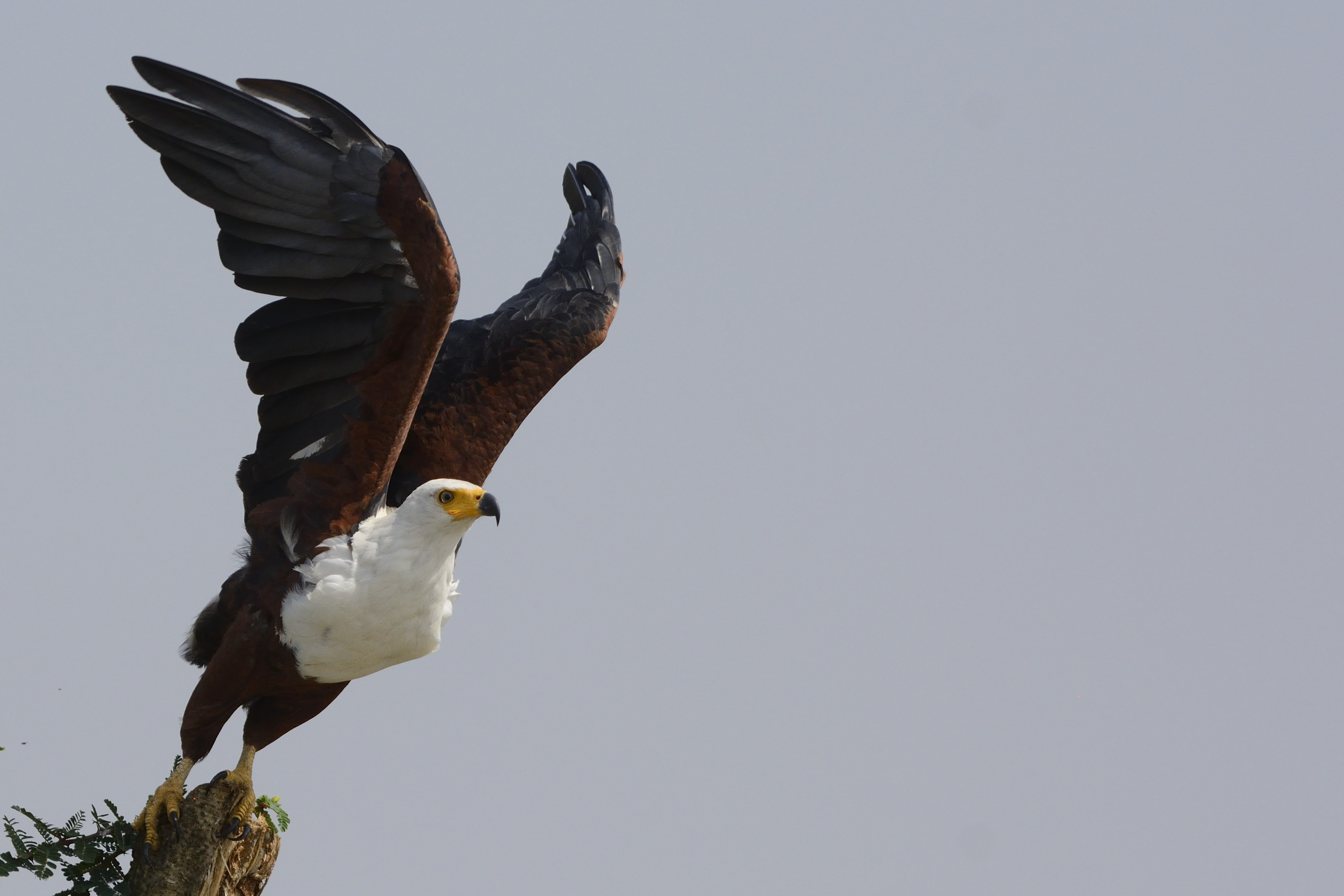
African Fish-Eagle, Haliaeetus vocifer – Picture by Florence
Day 18, Monday, July 23 – Kisumu – Nakuru National Park
In the morning we decided to bird around the camp site. Francis was still optimistic that we would find one or two of our target birds. I walked with him for a while, but was not in the mood. He continued searching and Florence joined him. I went back to the camp and relaxed by the water side of Lake Victoria. After an hour they came back and they had seen the Papyrus Canary! So much for being a lazy birder. We packed up camp and drove to Hippo Point. There were plenty of birds at this site: Black-billed Barbet, Double-toothed Barbet, African Thrush, Black-headed Gonolek, Northern Grey-headed Sparrow and Eastern Grey Plantain-eater. We spent about an hour there before we headed for Nakuru National Park.
Some birds from the morning of day 18:
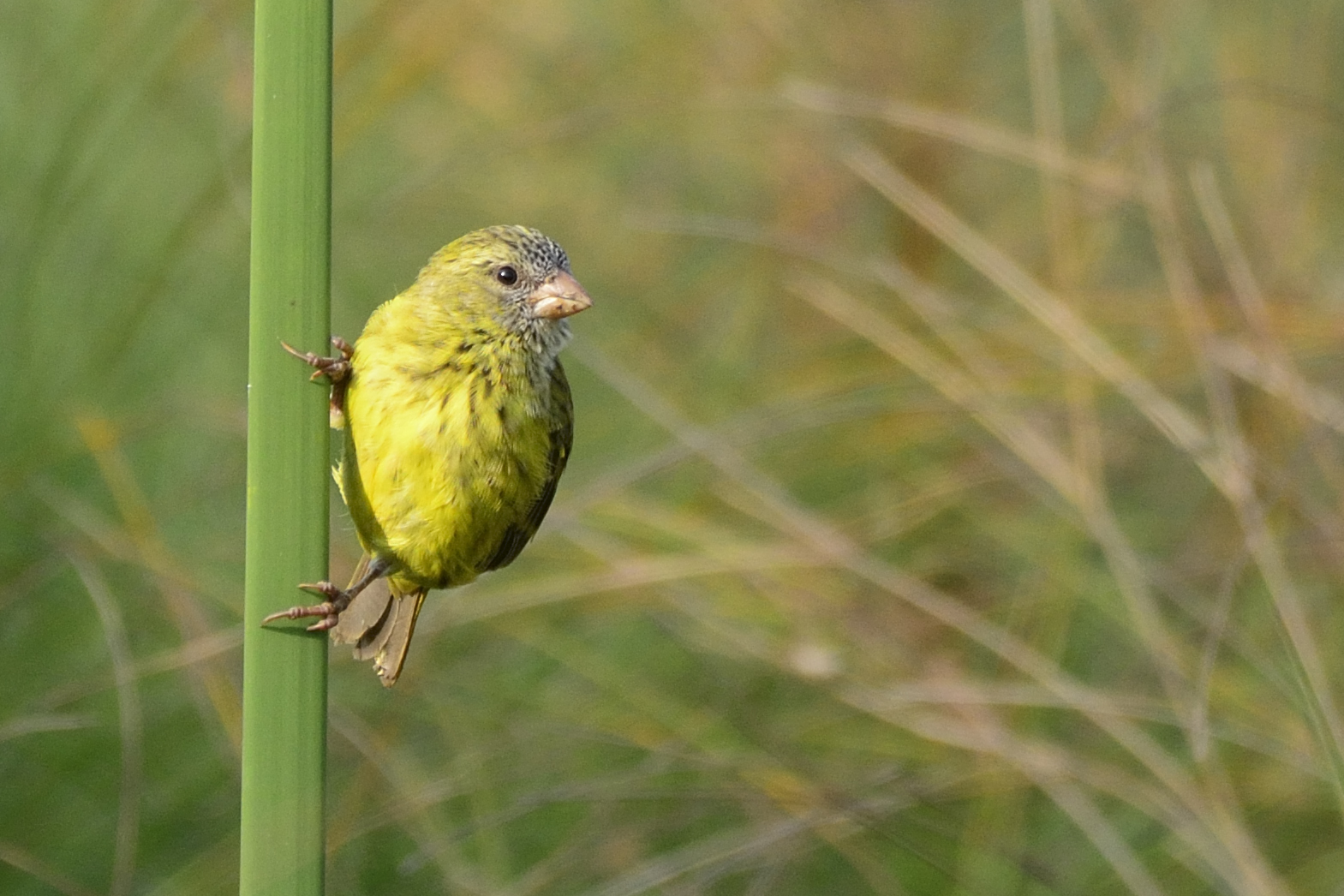
Papyrus Canary, Crithagra koliensis – Endemic to East Africa – Picture by Florence
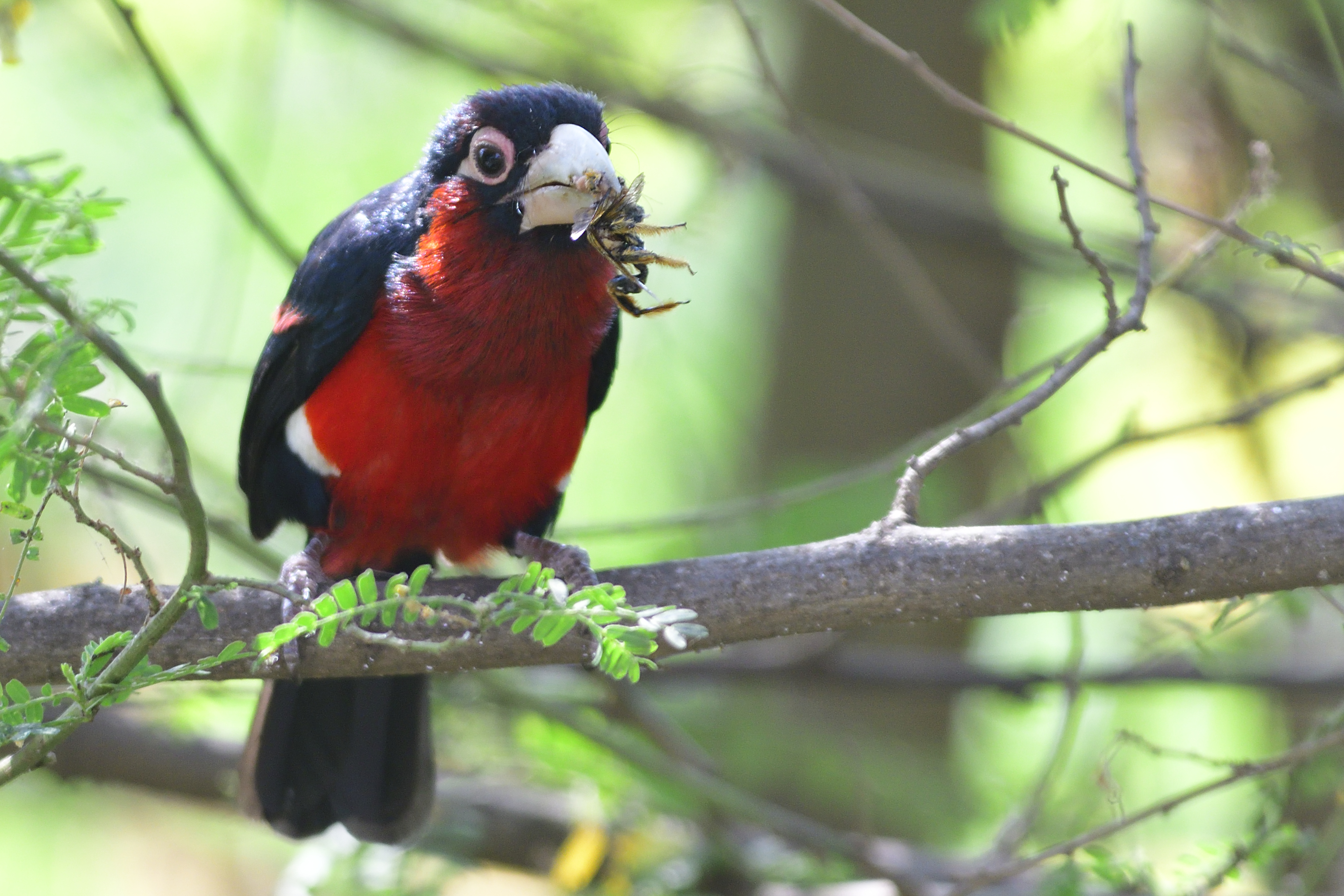
Double-toothed Barbet, Lybius bidenatus
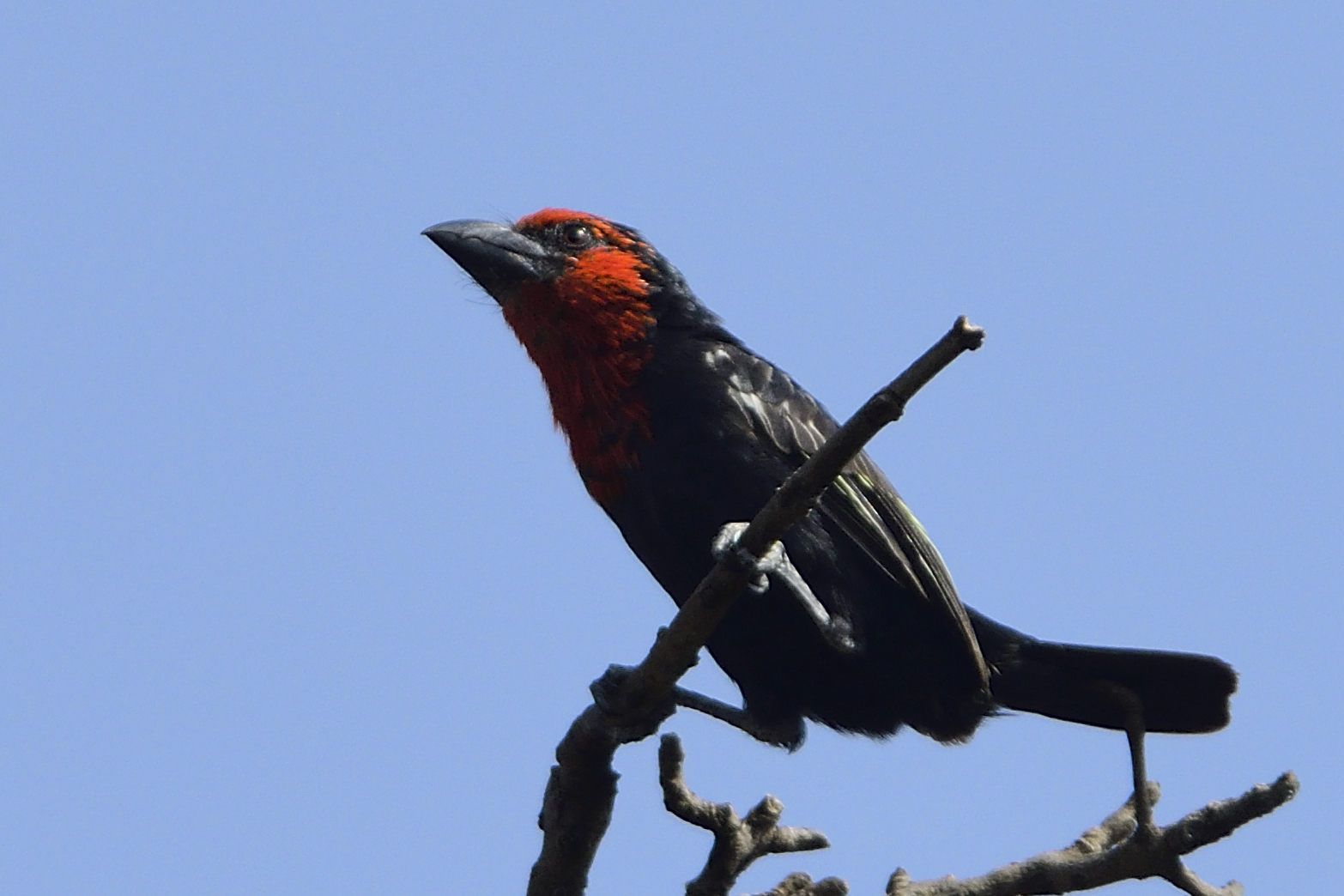
Black-billed Barbet, Lybius guifsobalito – Endemic to NE Africa
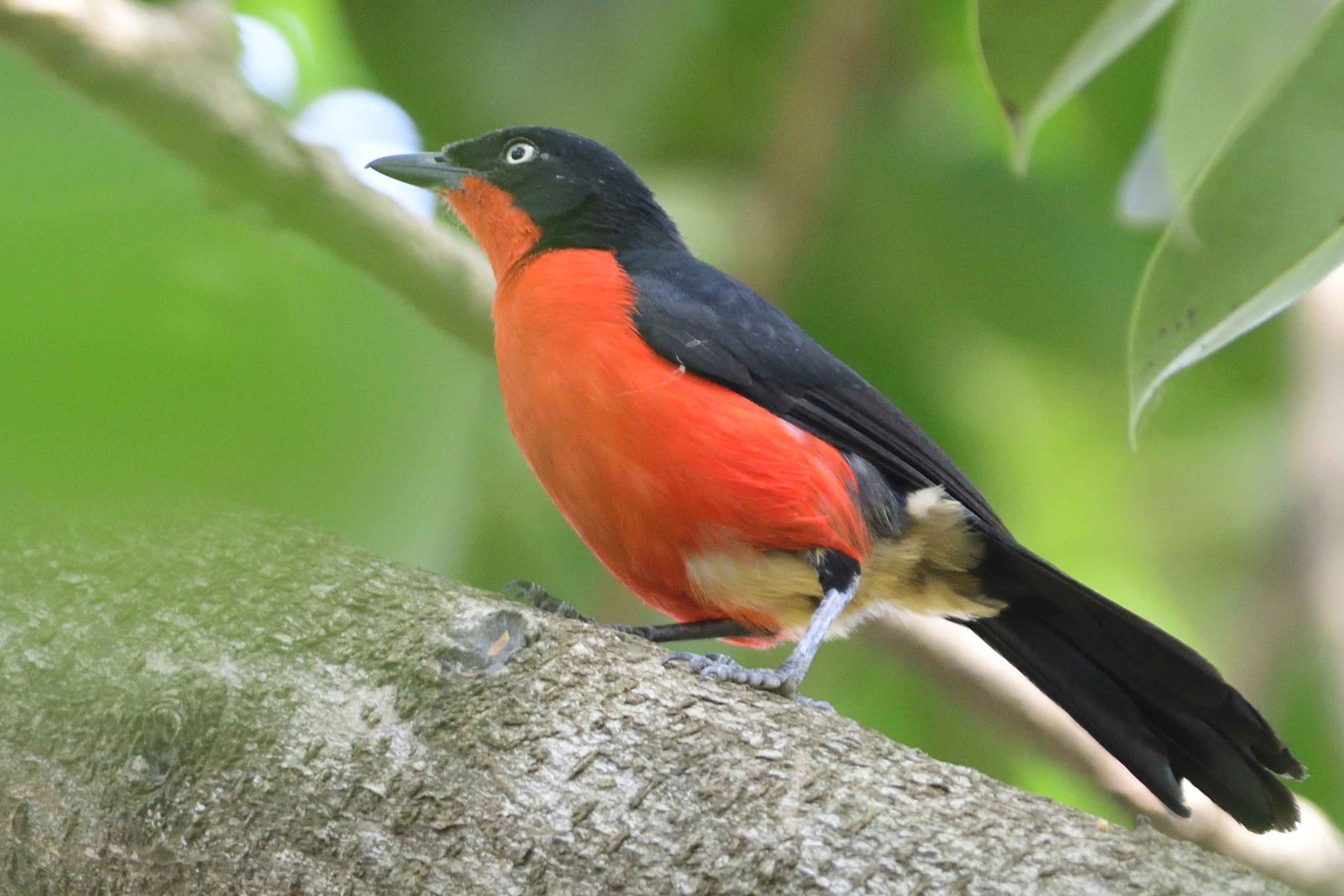
Black-headed Gonolek, Laniarius erythrogaster
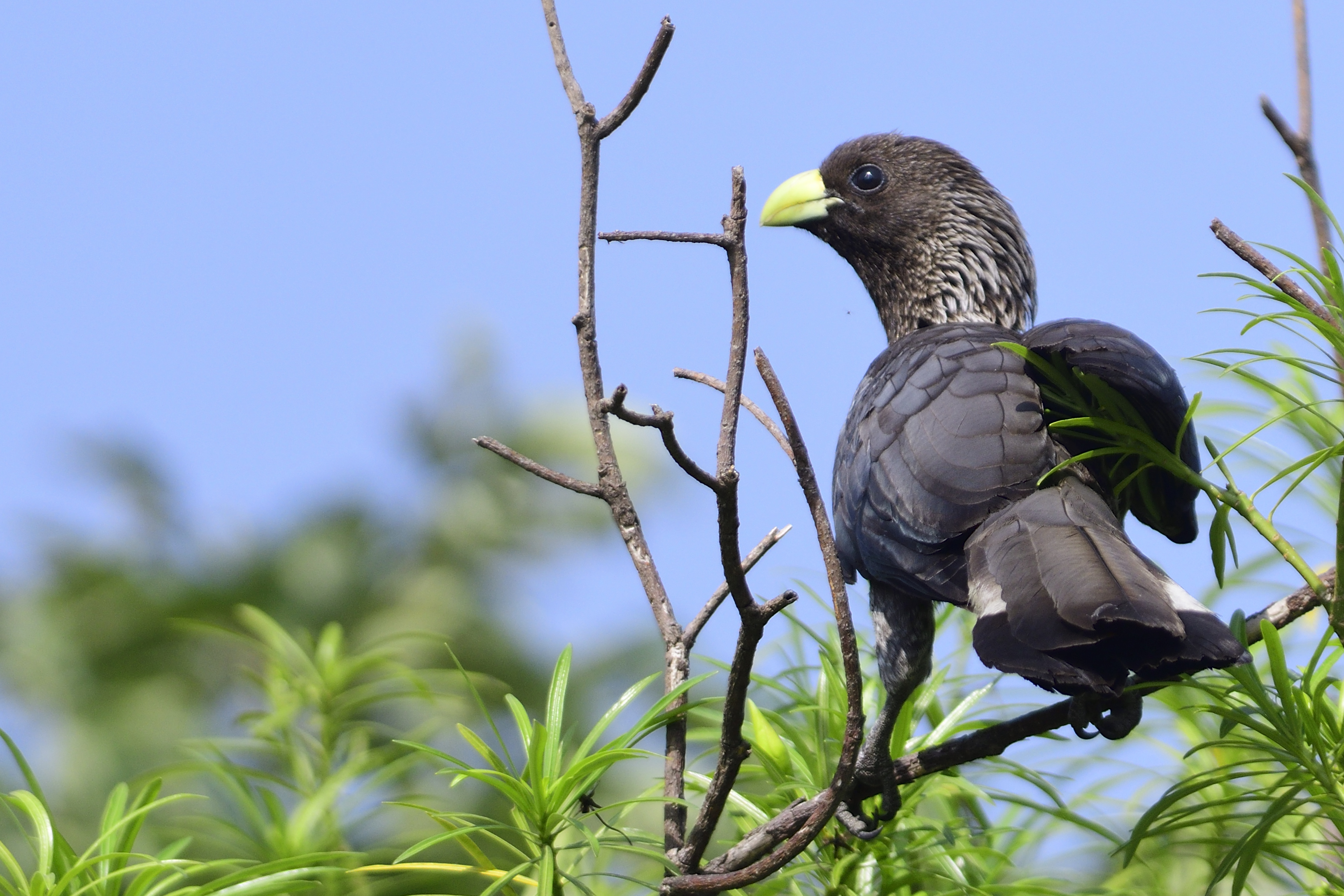
Eastern Grey Plantain-eater, Crinifer zonurus
Day 18 (continued)
We left Kisumu and headed for Nakuru National Park. We had almost a 4 hour drive ahead of us. We stopped in Nakuru for lunch and then headed to the park gate. We drove on the east side of the Lake and spotted for birds. We saw quite a few common birds, but nothing of real interest. We stopped so Florence could take pictures of some Rhinos. We drove on to the Makalia Falls campsite that was located at the other end of the park. It was getting dark, so we quickly set up camp. While eating dinner, we heard some noises in the vicinity. I used my torch and discovered 4 Cape Buffaloes gracing next to our camp. They were not aggressive at all, so we just kept on eating.
Here´s a picture from the afternoon of day 19.
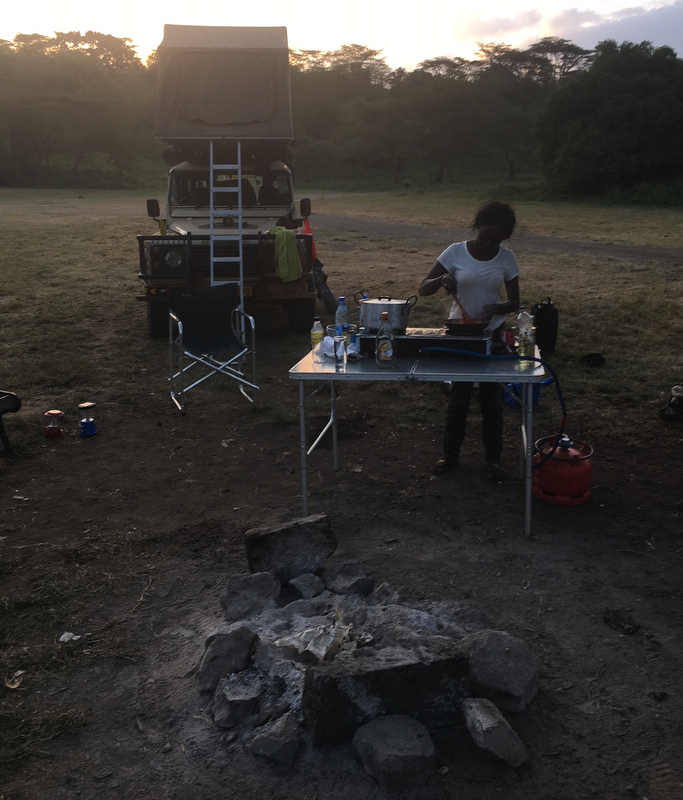
Florence cooking at Makalia Falls camp in Lake Nakuru National Park
Day 19, Tuesday, July 24 – Nakuru National Park – Lake Naivashu
We decided to bird on our way out of the park today. We had 2 target birds to look for. We stopped a few places. At the first stop, we got a Scaly-throated Honeyguide (lifer for Florence). A little further on, we finally got in contact with a Pectoral-patched Cisticola. After that, we saw the bird several times. We stopped frequently along the woodland by the shore and finally we heard the noise of Helmet-Shrikes. A few calls and we had our second target bird: Grey-crested Helmet-Shrike. Both targets in box, we headed for the exit. We had ticked almost 70 species in the park, but again not many birds stood out. We stopped in a little village for lunch. We only had a 2 hour drive to our next destination Lake Naivasha. We arrived there mid-day and found a nice camping spot. I am not sure why we stopped there because there was no birds that we needed at that site. The place was full of tourists going on boat rides, but according to Francis, there was nothing for us to see there. We just relaxed for the rest of the day and had an early night.
Here´s some pictures from day 19
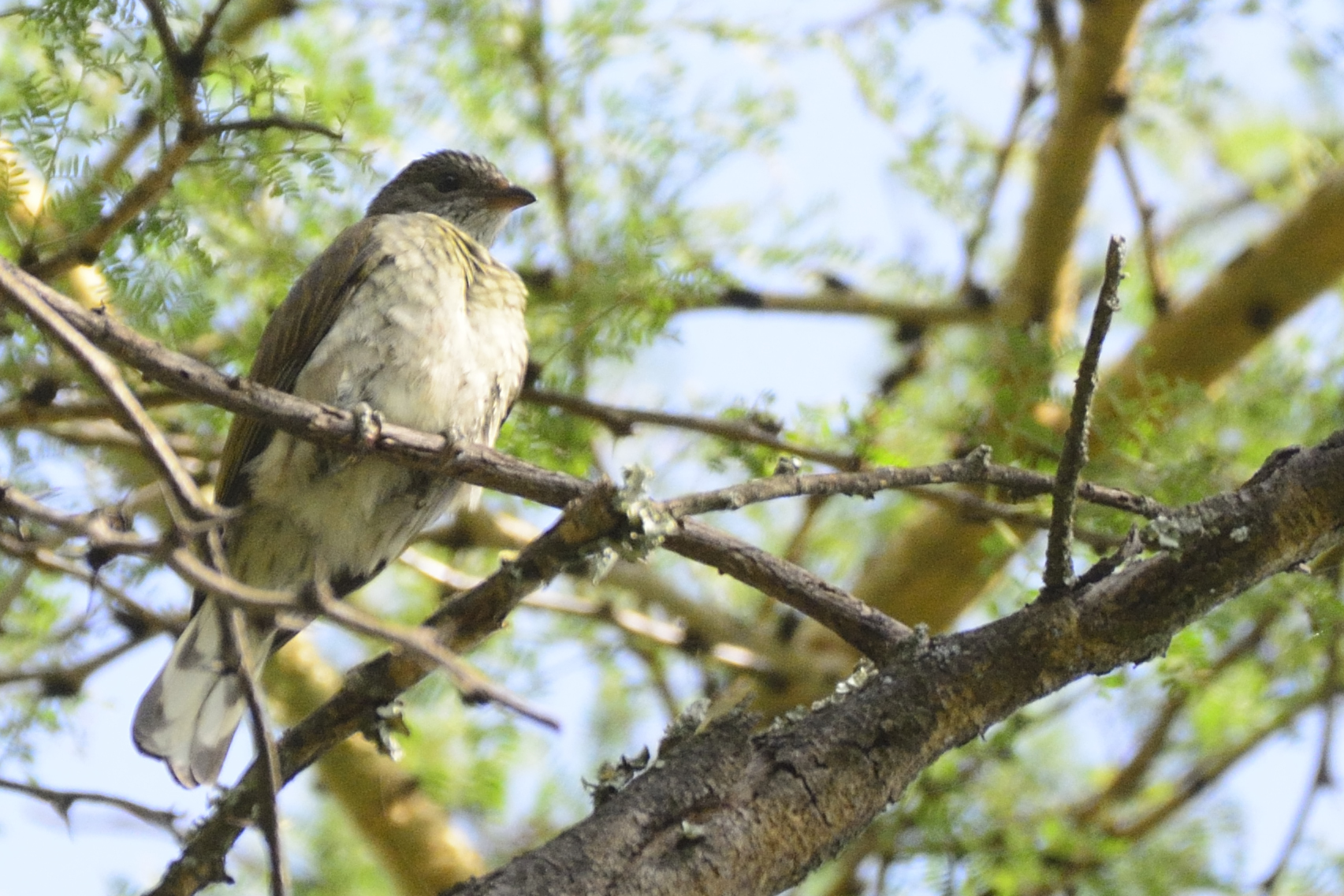
Scaly-throated Honeyguide, Indicator variegatus – Picture by Florence
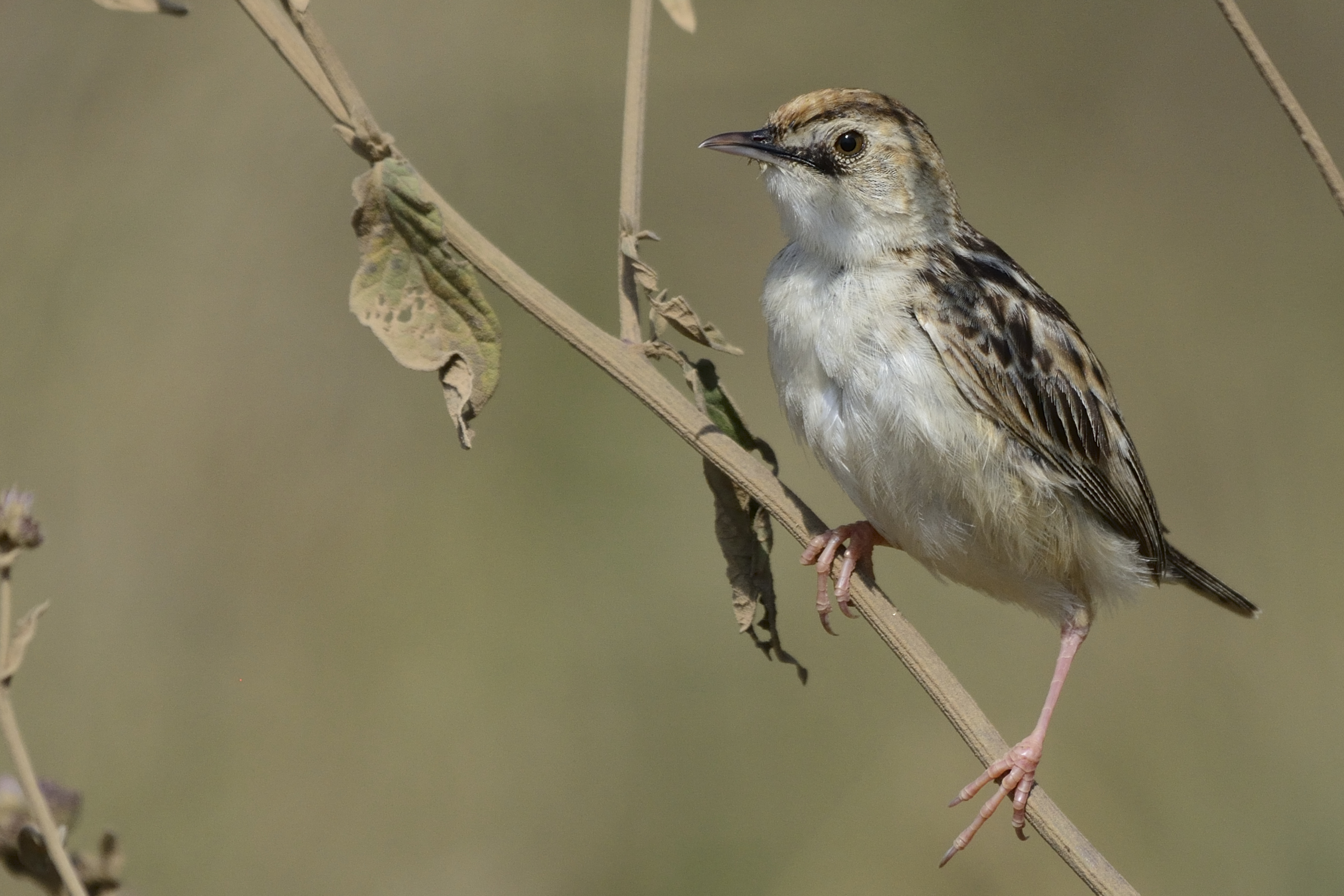
Pectoral-patched Cisticola, Cisticola brunnescens – Picture by Florence
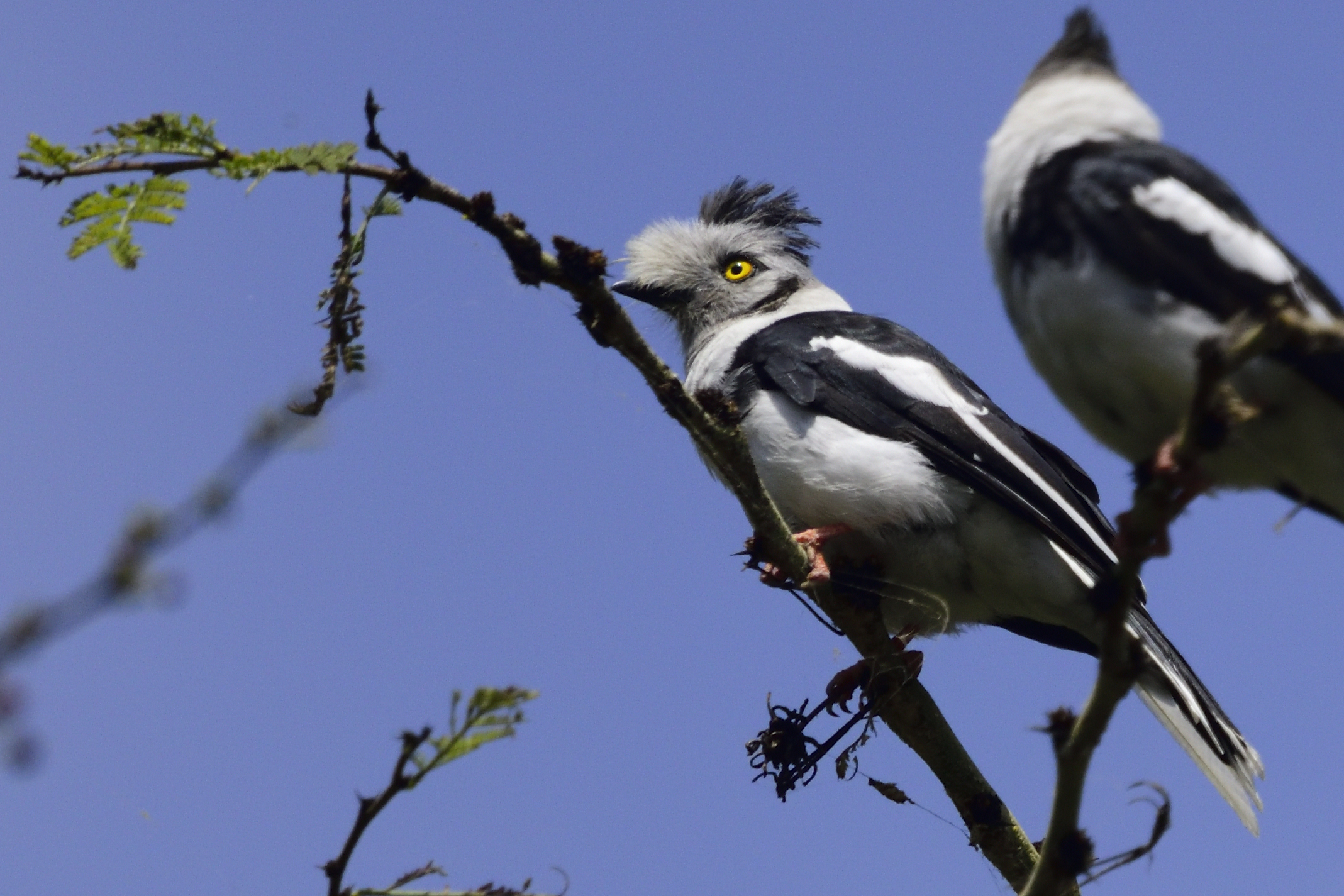
Grey-crested Helmet-Shrike, Prionops poliolophus – Localised endemic to East Africa
Day 20, Wednesday, July 25 – Lake Maivasha – Aberdere National Park
We left the camp early and got into town, when my clutch was suddenly gone. Lucky for us, there was a Fundi right by the road. He replaced the clutch cylinder kit and within an hour, we were back on the road again. Our target bird for the morning was Sharpe´s Longclaw. Francis had some special places for the bird, but we spent several hours searching in different habitat and not a sign of the bird. On one of our stops, Florence had to go to the bushes and while at her business, she got nice pictures of an African Citril. I finally gave up and we headed for Aberdere National Park. We had about 3 hours to drive. We started climbing up the Aberdere mountains, but there were very few birds to be seen. The entrance gate was at a little over 3.000 meter and it was real cold. While checking in, we heard a Moorland Chat singing nearby and just after we entered the park, we managed to get pictures. We drove further in to the park. We were supposed to stay at Reedbuck Campsite for 2 nights. We did not see many birds at all, but just before we got to the Campsite, we heard the Aberdere Cisticola singing. We soon got pictures. The Campsite was very rustic to say the least. No water no nothing and it was cold, very cold. The Moorland Chat was very inquisitive and several came very close to camp. We also had Aberdere Cisticola very close to camp. We had forgot to stock up on water and we used the last water to cook dinner that night. We had a fire going and the camp lived up to its name Reedbuck Camp. Several Reedbucks were very tame and came close to camp. One even started licking dirt of our Landy. We retired early that night.
Some pictures from Day 20:
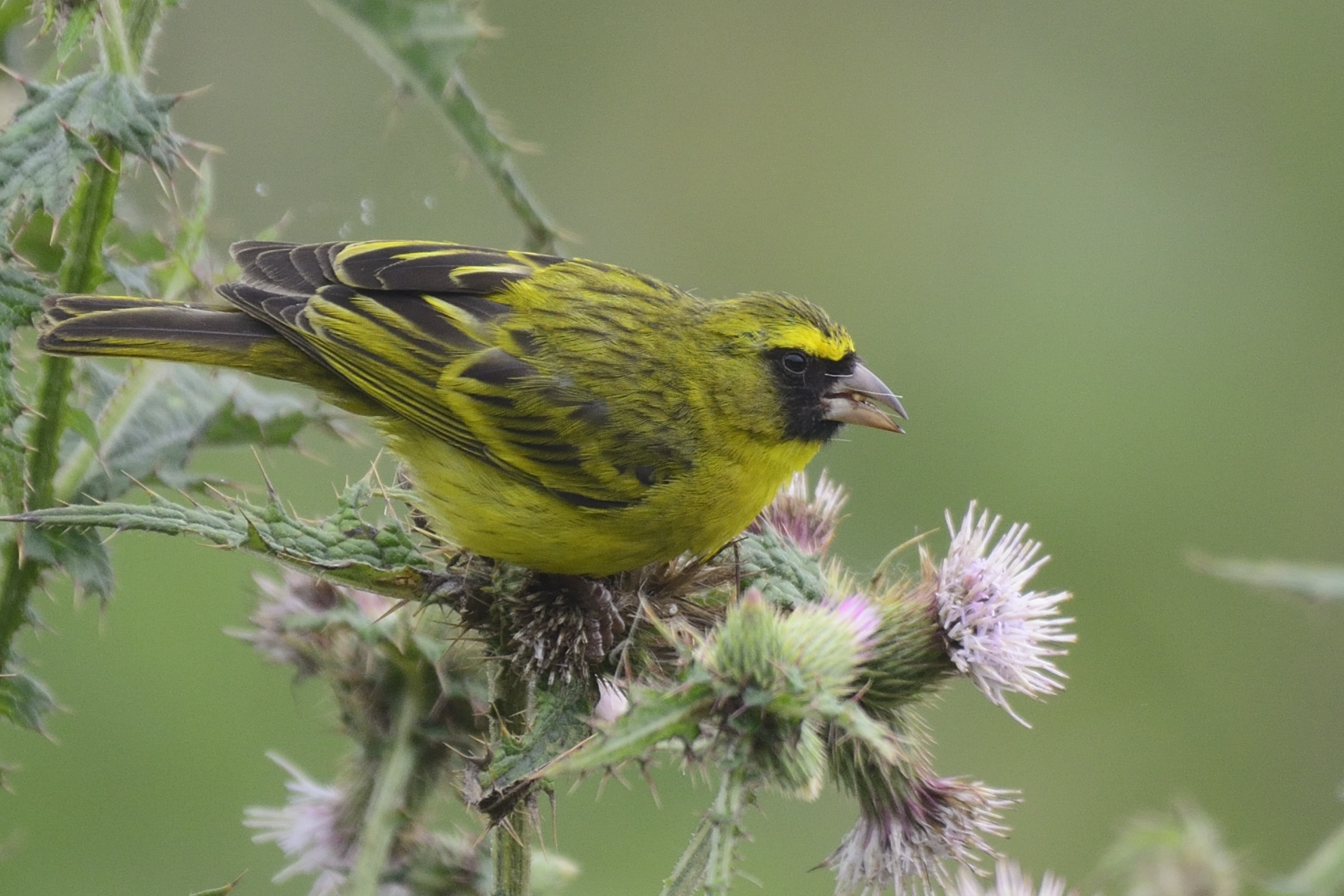
African Citril, Chritagra citrinelloides, Endemic to NE Africa – Picture by Florence
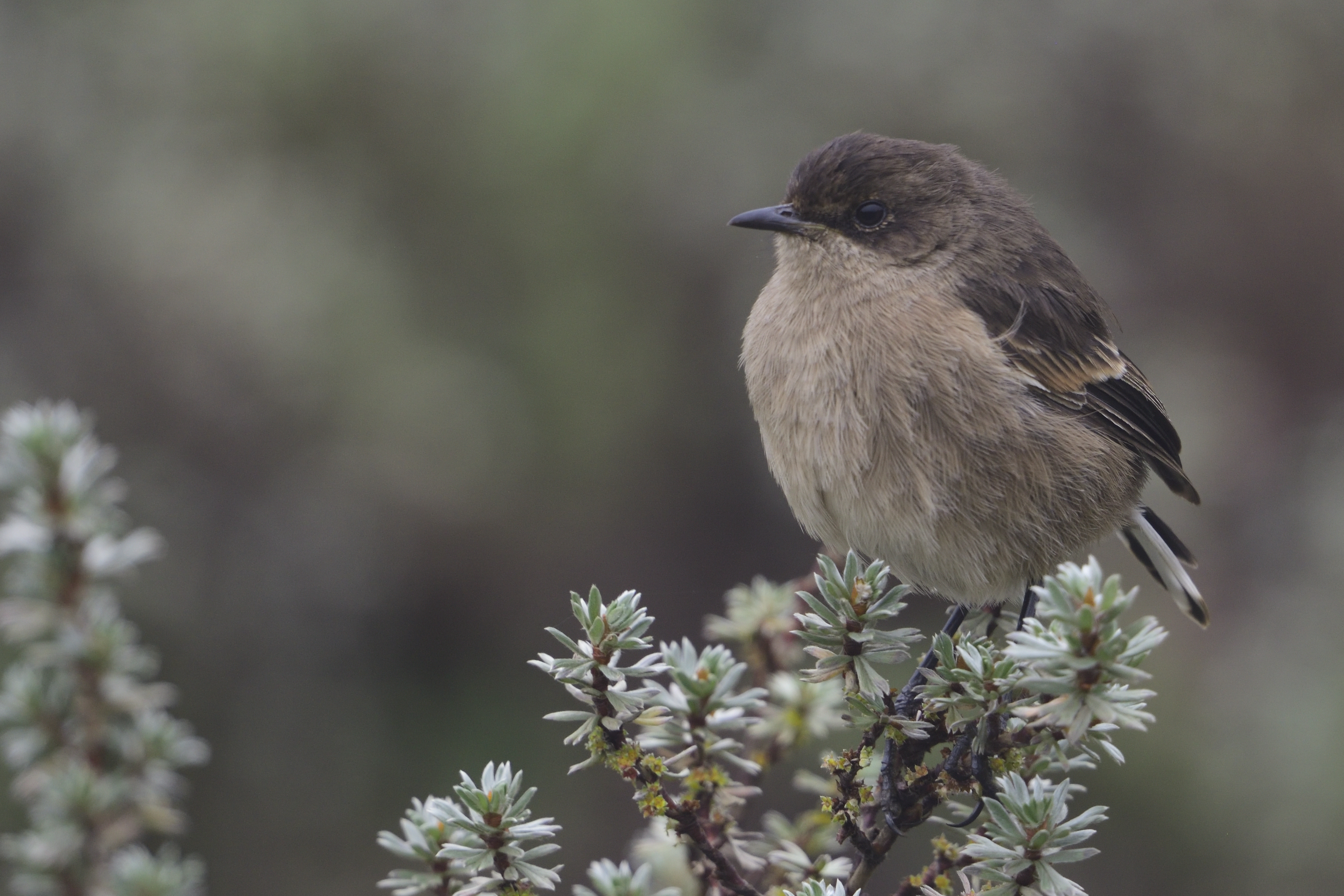
Moorland (Alpine) Chat, Pinarochroa sordida – Endemic to NE Africa
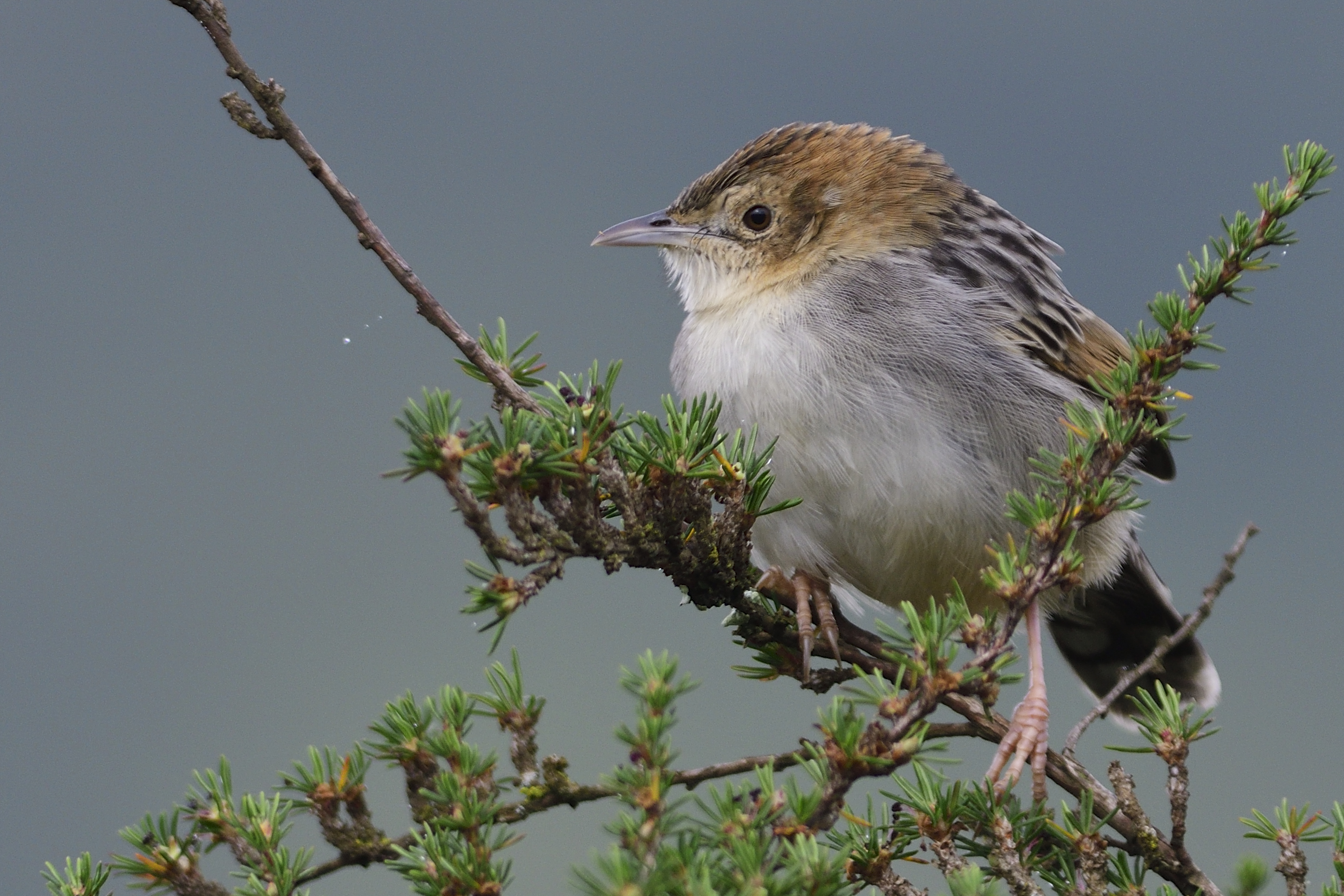
Aberdere Cisticola, Cisticola aberdere – Endemic to Central Kenya
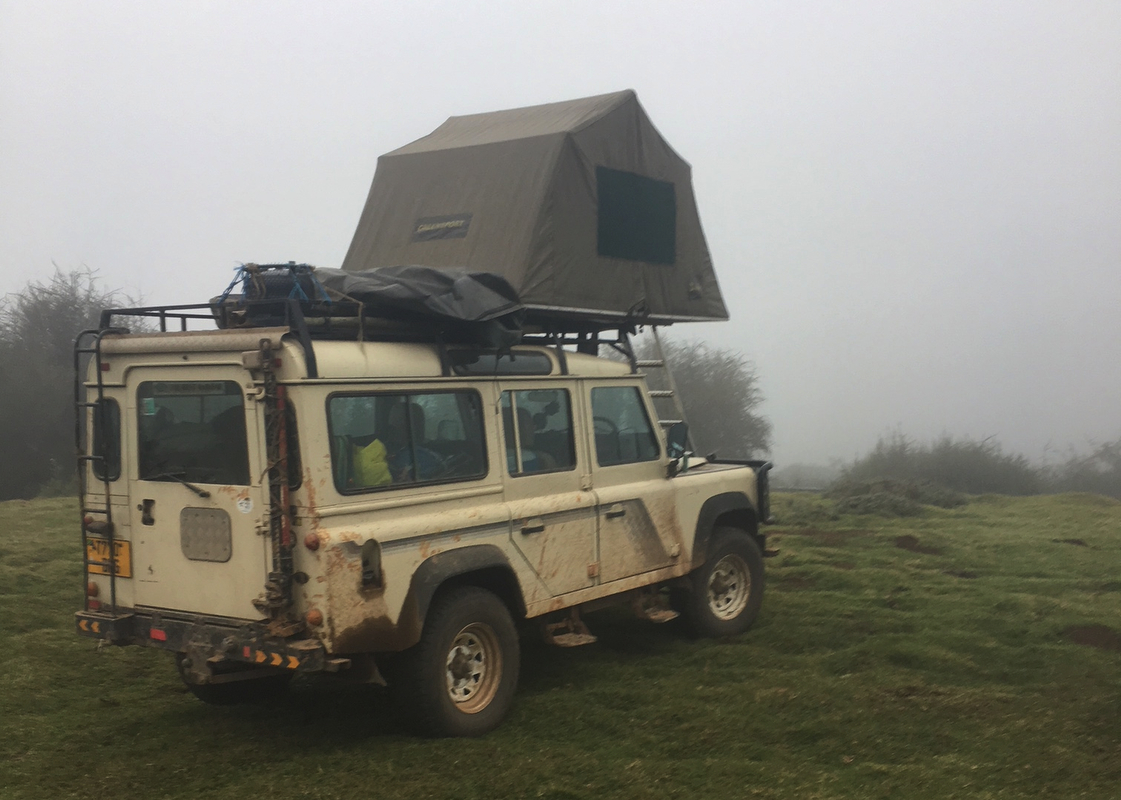
Camp at Reedbuck Campsite, Aberdere, cold and misty
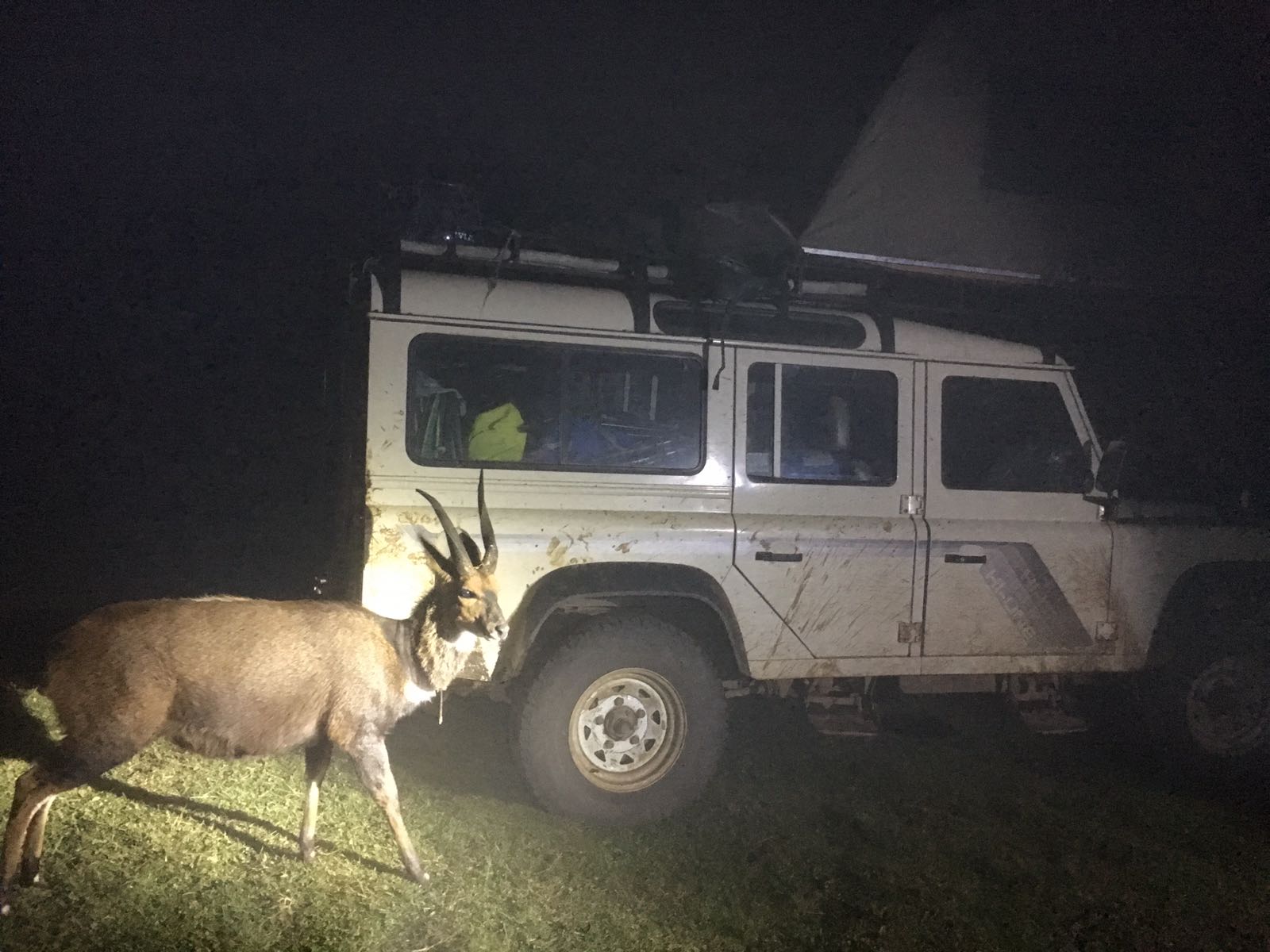
The animal the campsite was aptly named after. It spent hours licking the dirt of our Landy
Day 21, Thursday July 26 – Aberedere National Park – Arusha
We woke up early and the sun was out for a while. The landscape was beautiful, but the air was cold. We looked for some birds around camp and in addition to the chat and Cisticola, we found Abyssinian Thrush and Yellow-crowned Canary. We had paid to stay one more day in the park, but without water and with the cold, I decided to head off the mountain. We started driving and I told the other about my decision. We saw quite a few Jackson´s Francolins on the road. We soon reached the gate and then went down hill. I checked on the distance and it was about 45o km or 8 hours to drive to Arusha. I decided to give it a go or at least get as close to the border as possible for the day. We dropped off Francis by the main road and Florence and I was on our way back to Arusha. We took the bypass road around Nairobi and made very good time. Exhausted, we reached Arusha before dark. And that was the end of this epic trip.
Some pictures from Day 21:
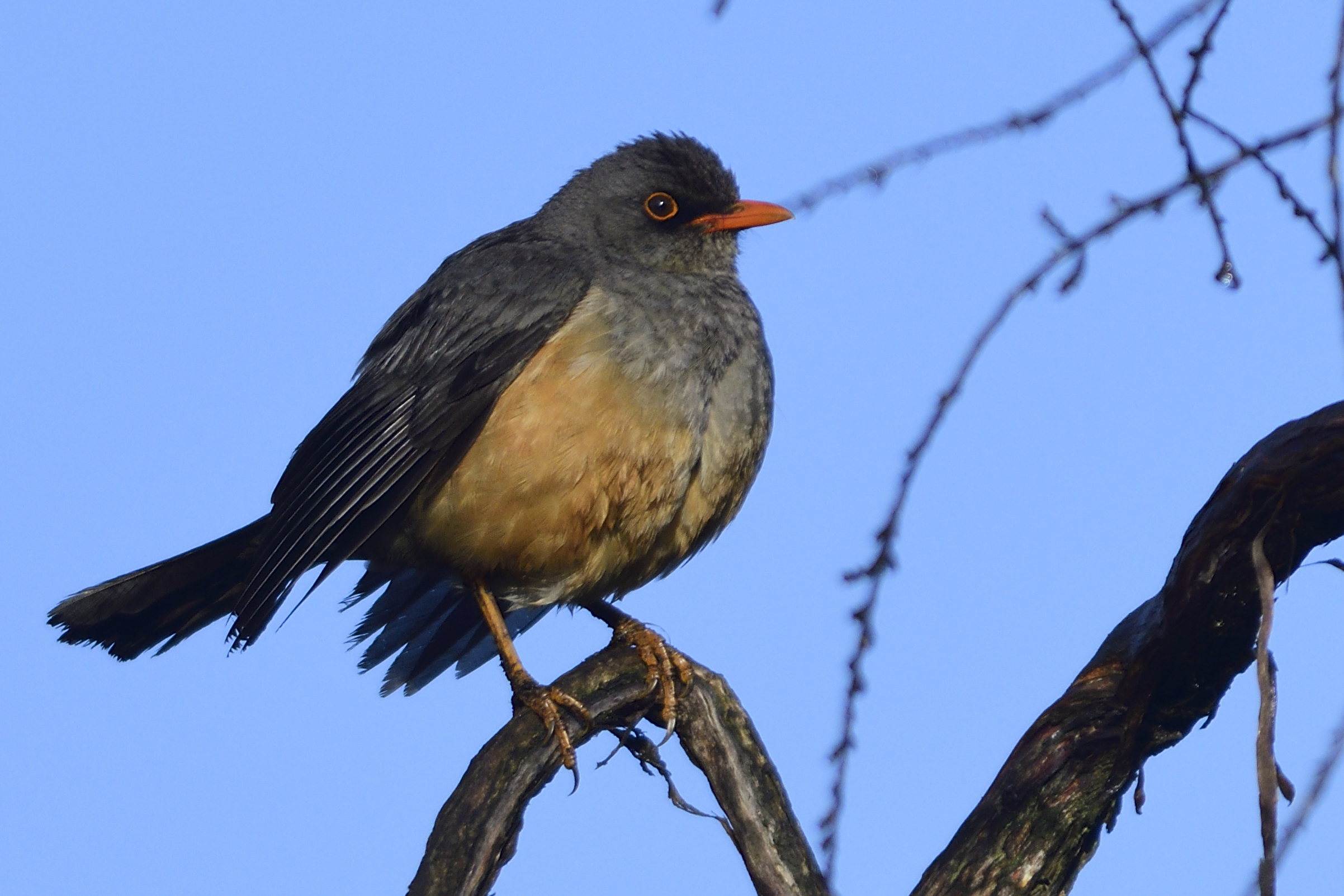
Abyssinian Thrush, Turdus abyssinicus
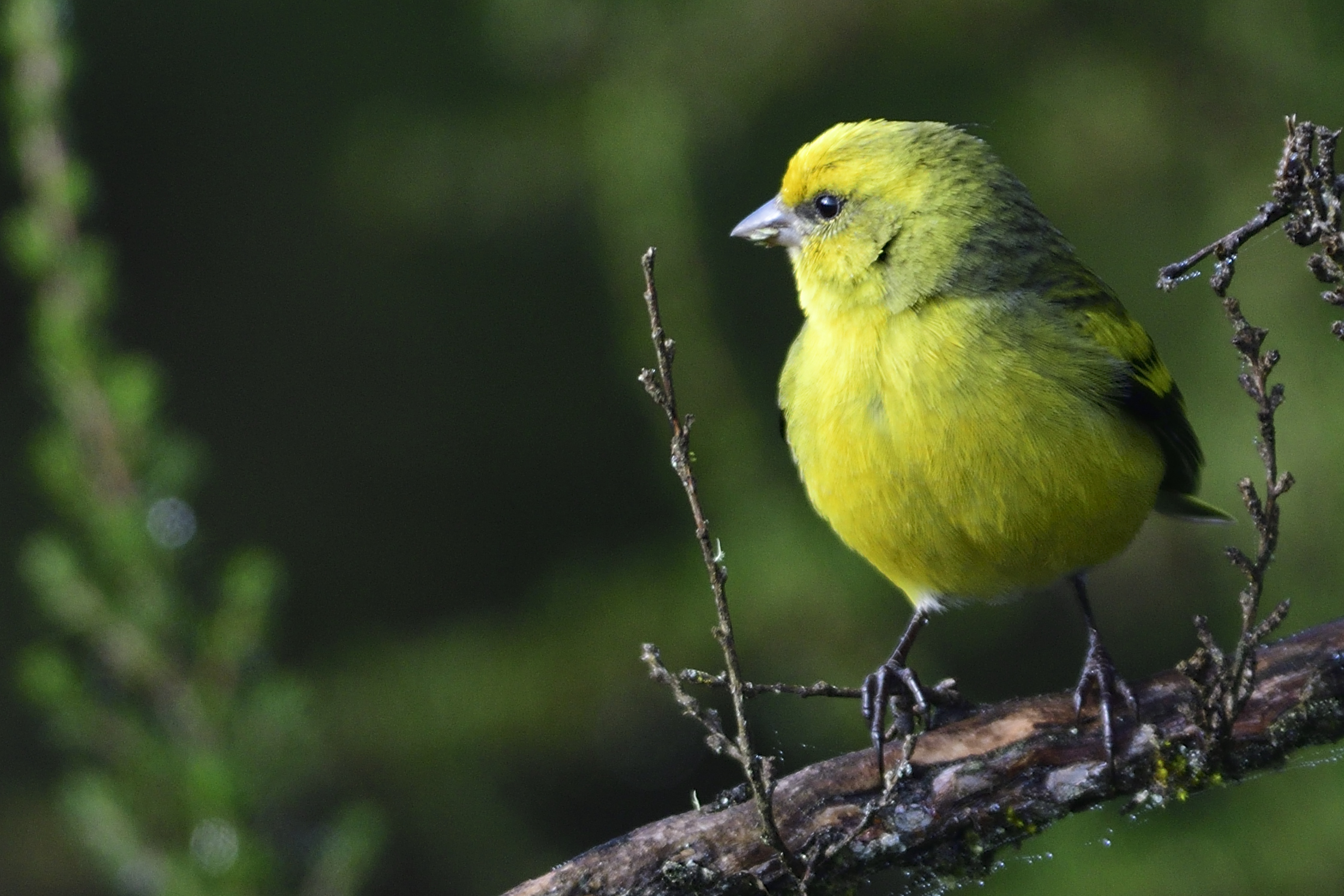
Yellow-crowned Canary, Serinus flavivertex
Summary
We had an epic trip and I got more than 90 lifers. I can recommend Francis Cherutch warmly as a guide. I sent him a list of birds and told him to design a 3 weeks program in order for us to see as many of my targets as possible. He excelled! Many highlights and few disappointments, but Kisumu was one of the big disappointment. However Castle Forest, Lake Baringo and last but not least Kakamega Forest really made up for any disappointments. I will definitively visit Kakamega Forest again, maybe already next year on our way to Uganda.
Feel free to drop us a comment below if you liked the report or not